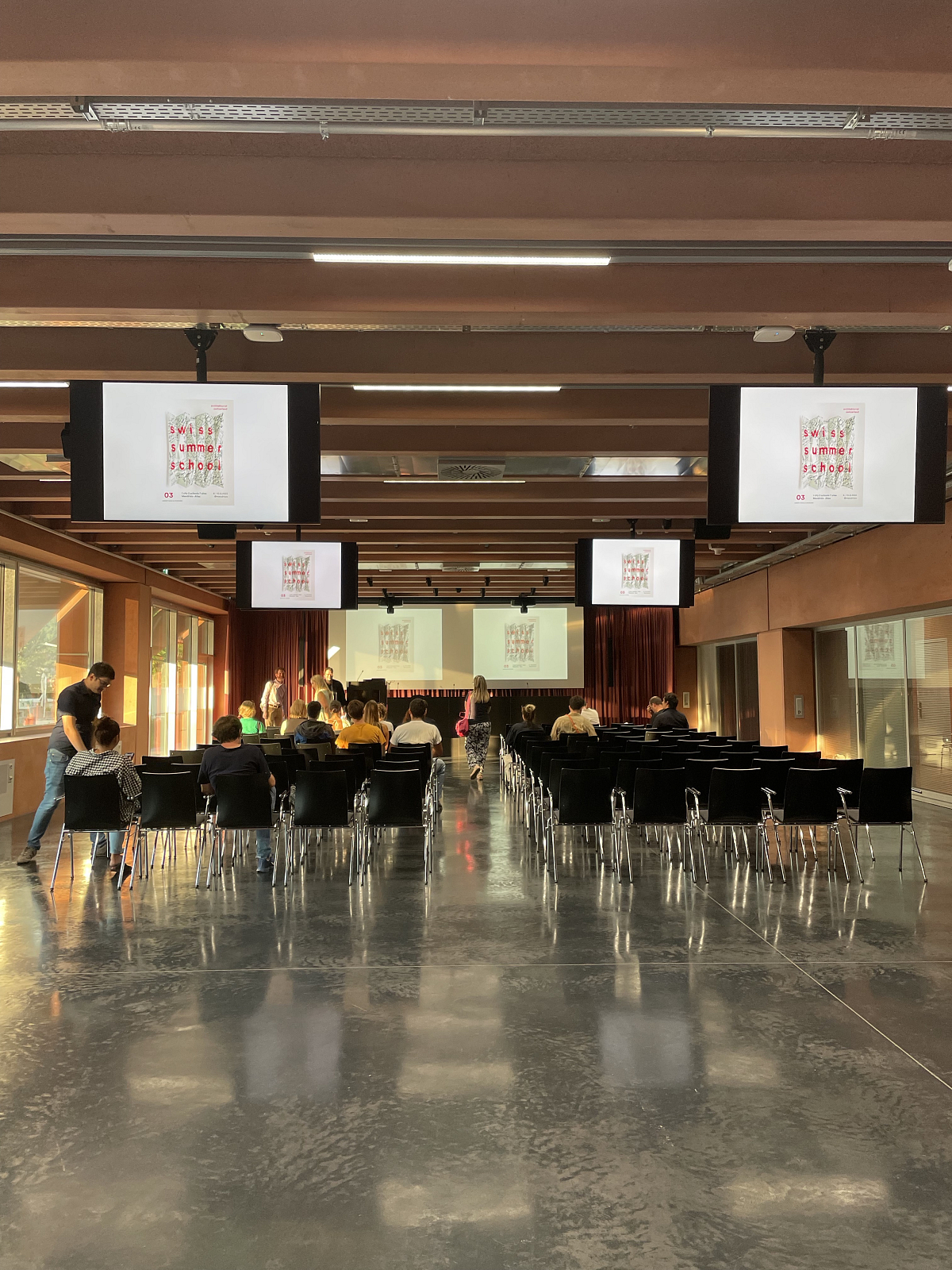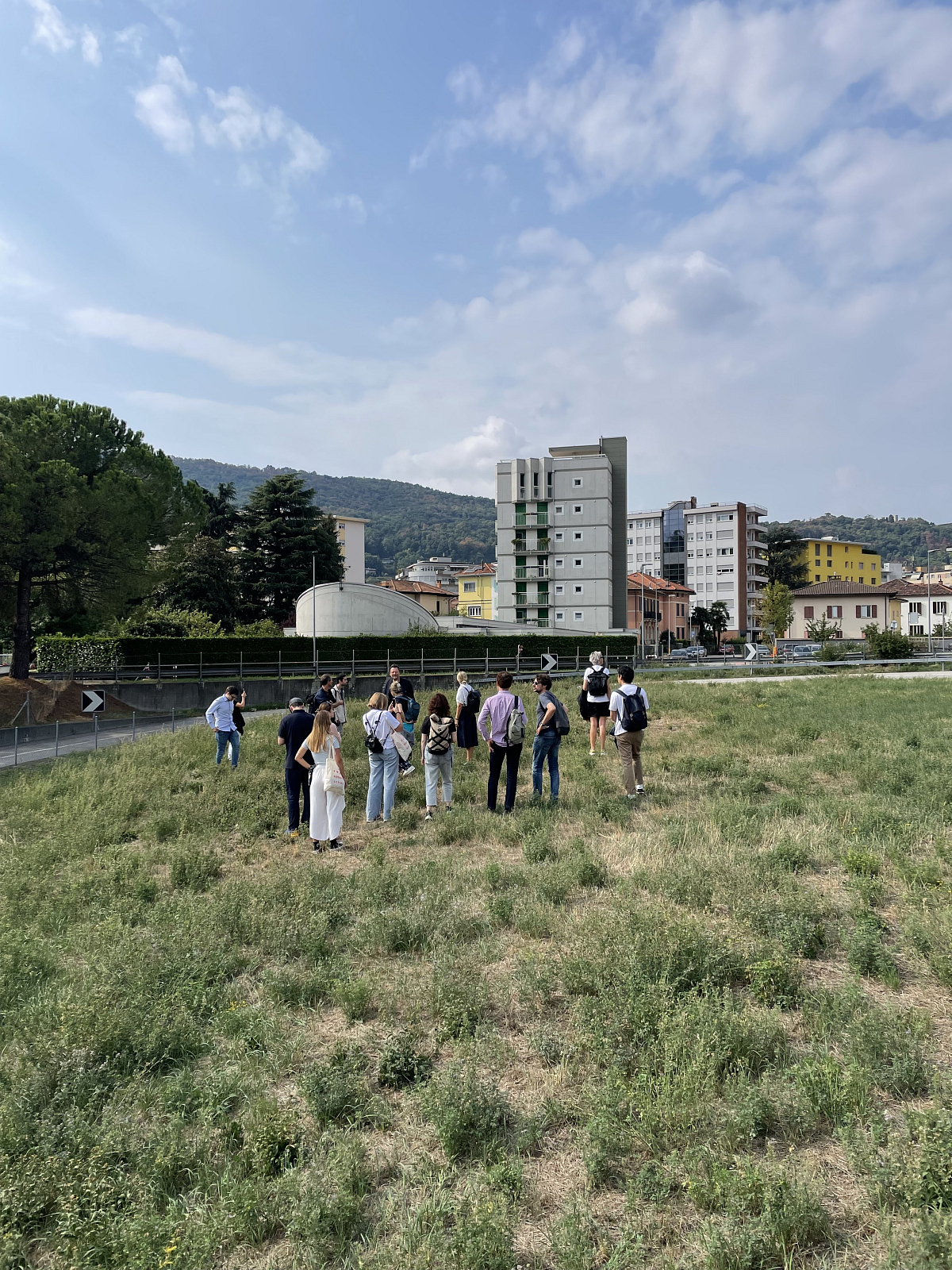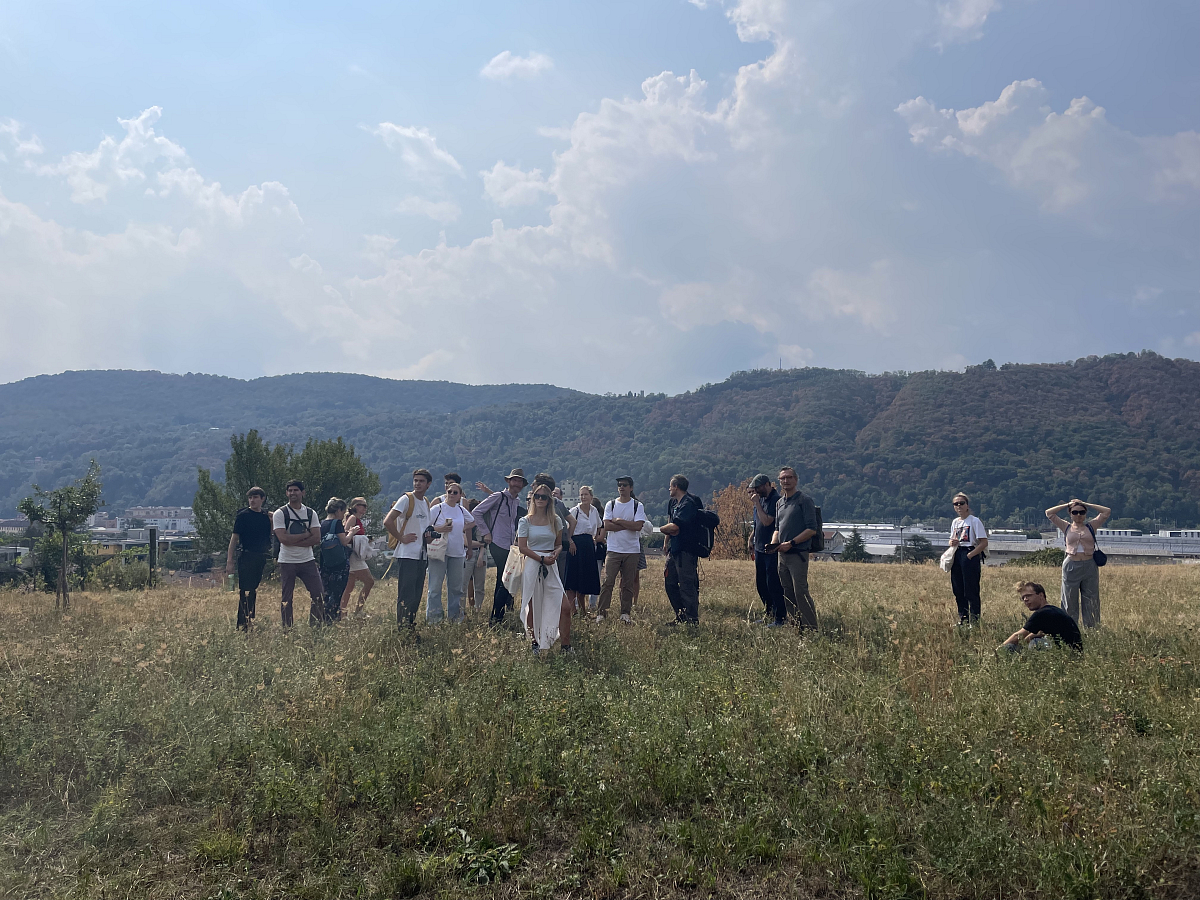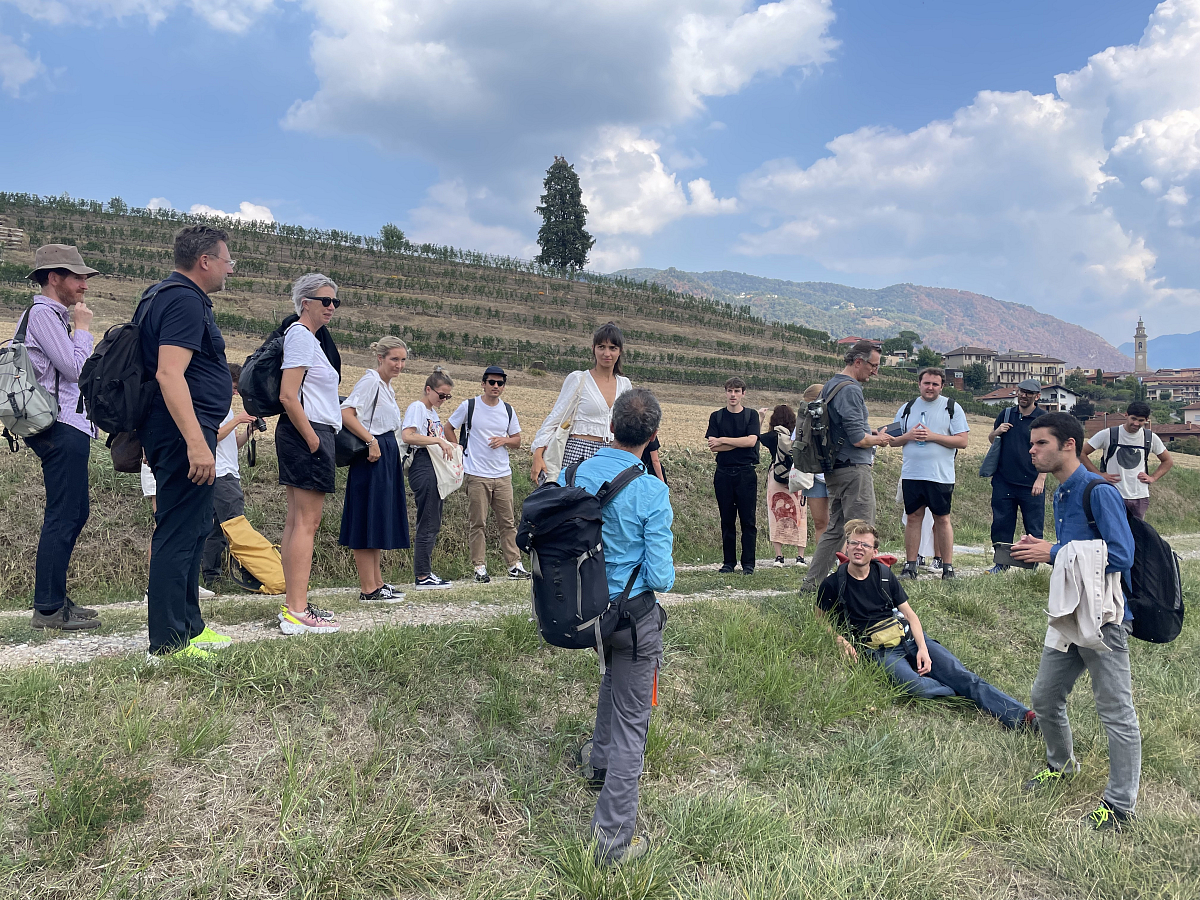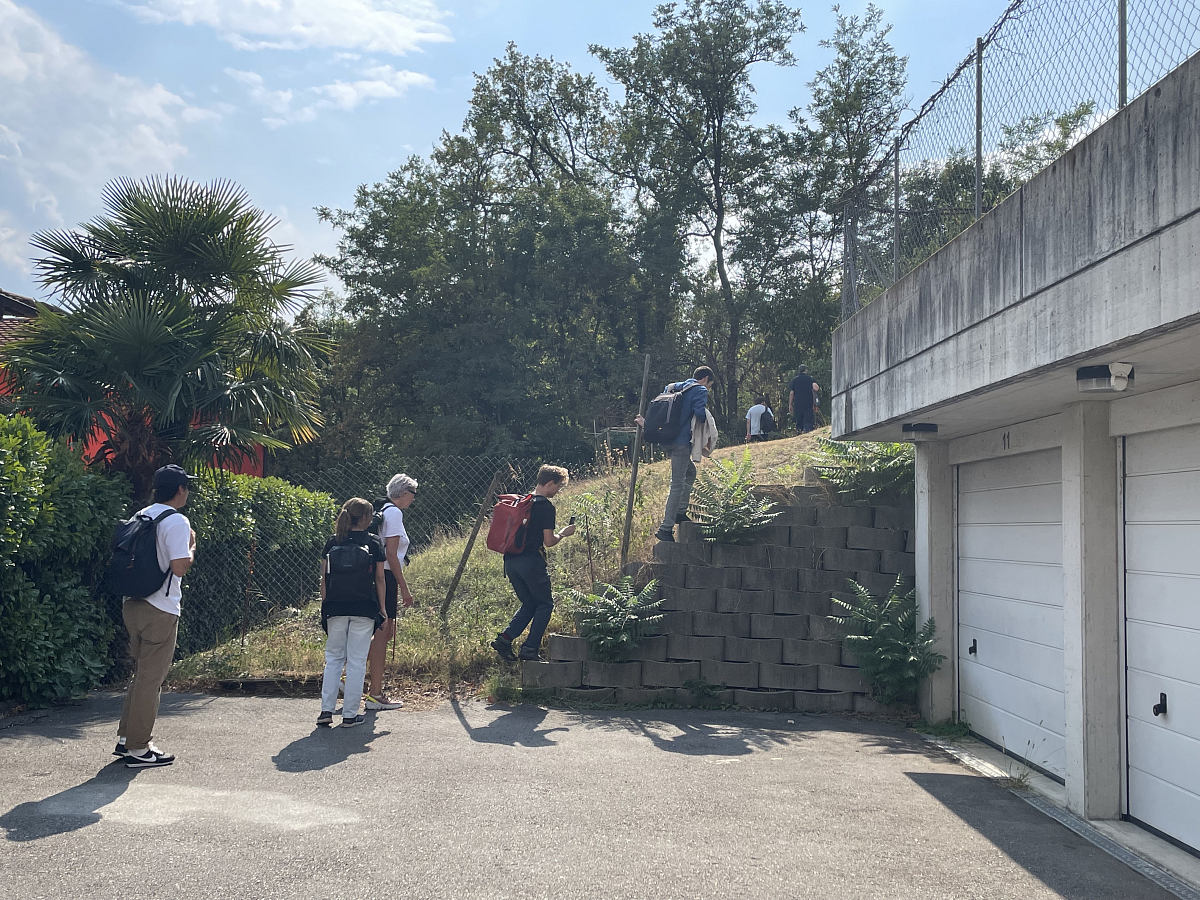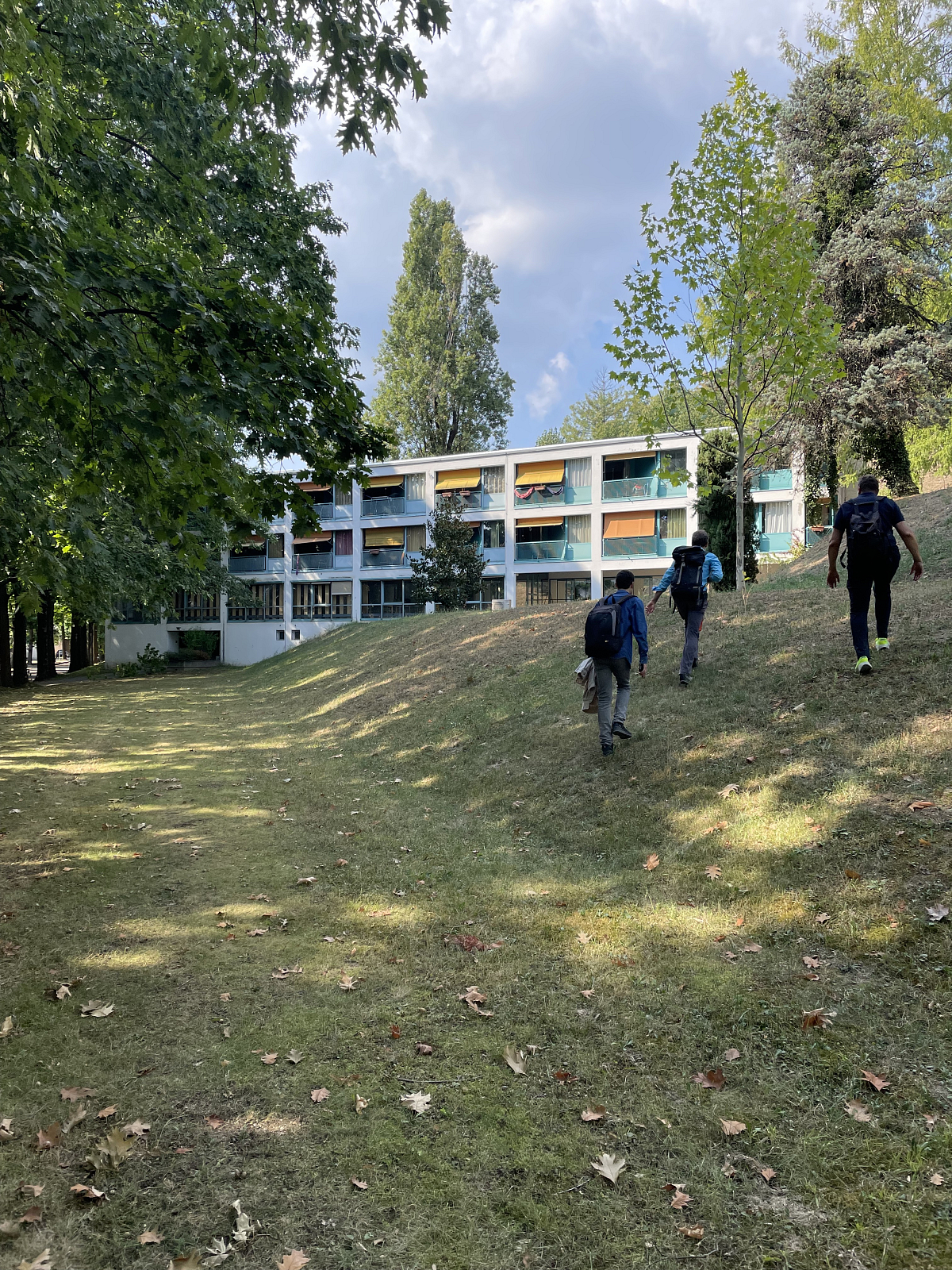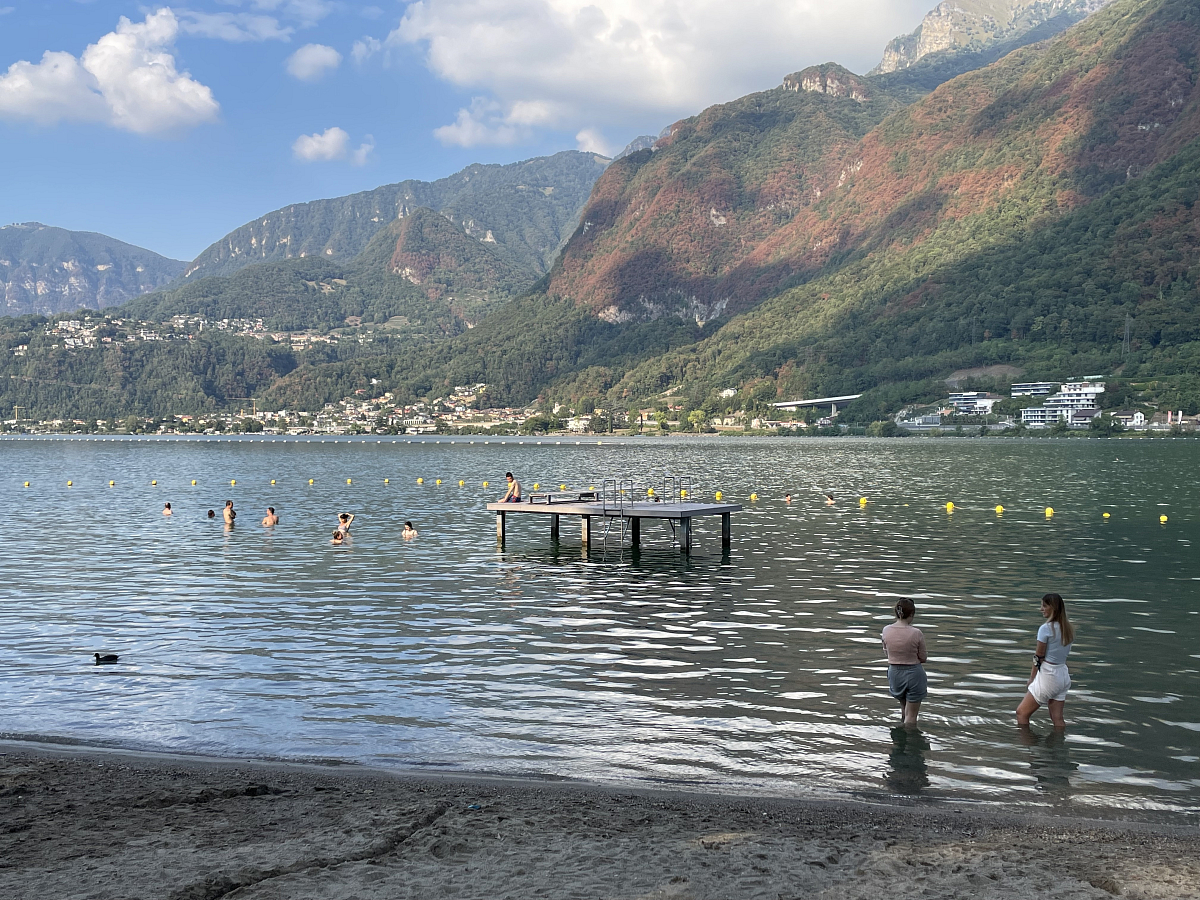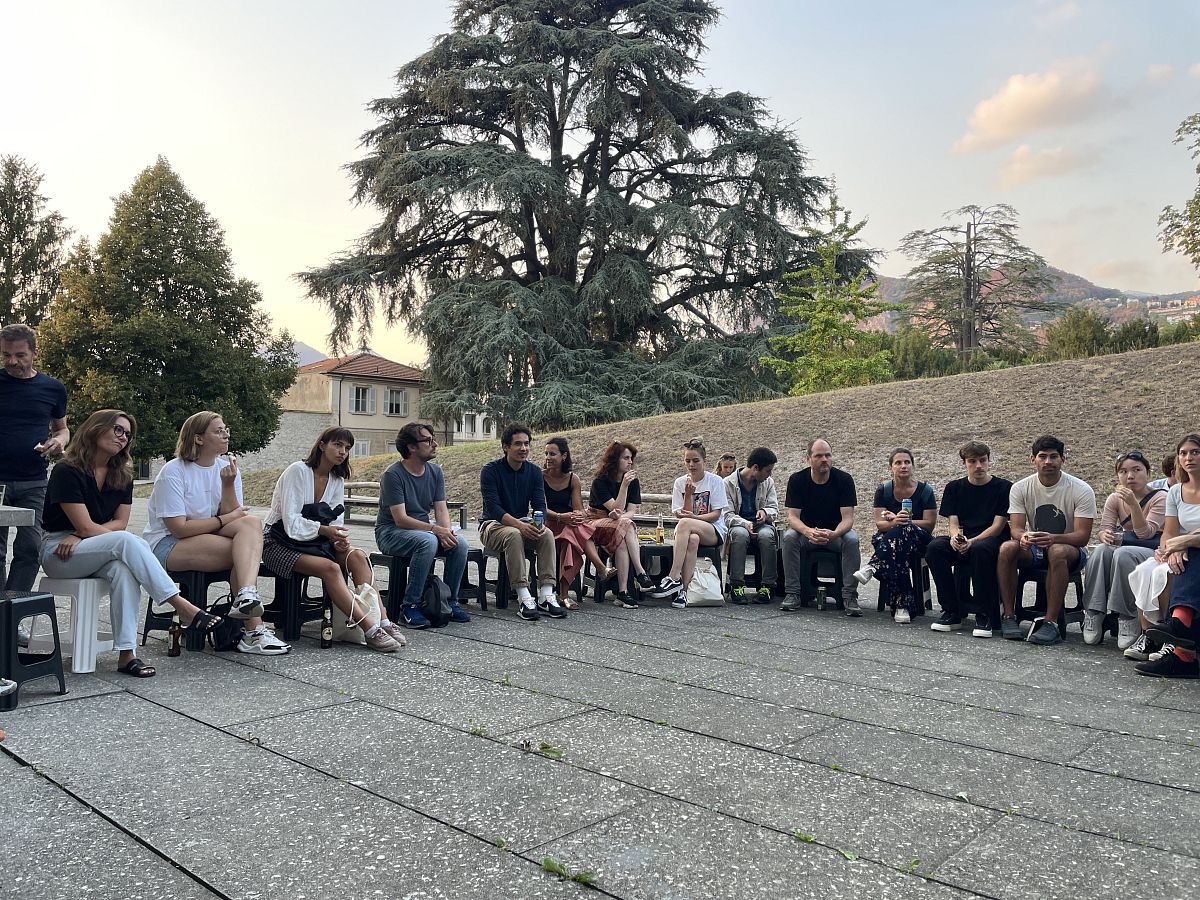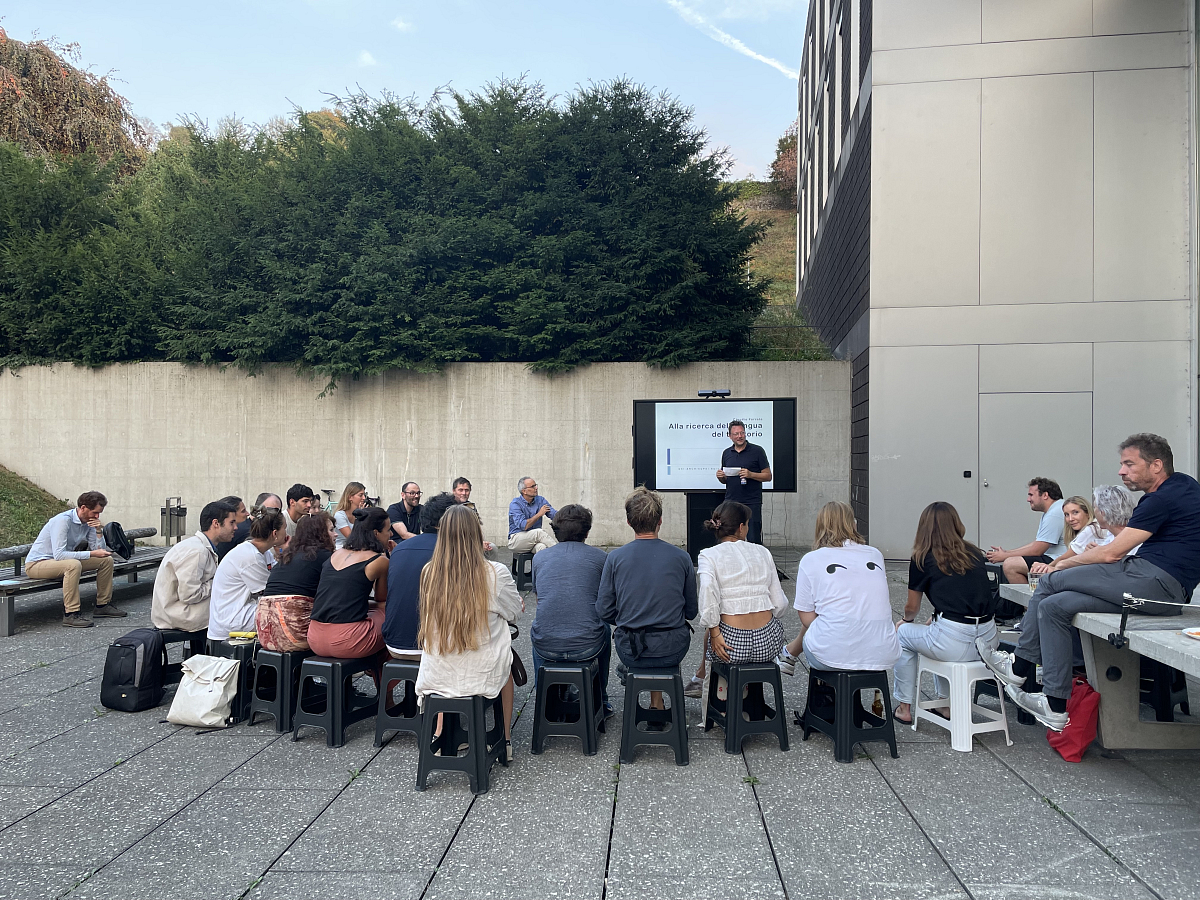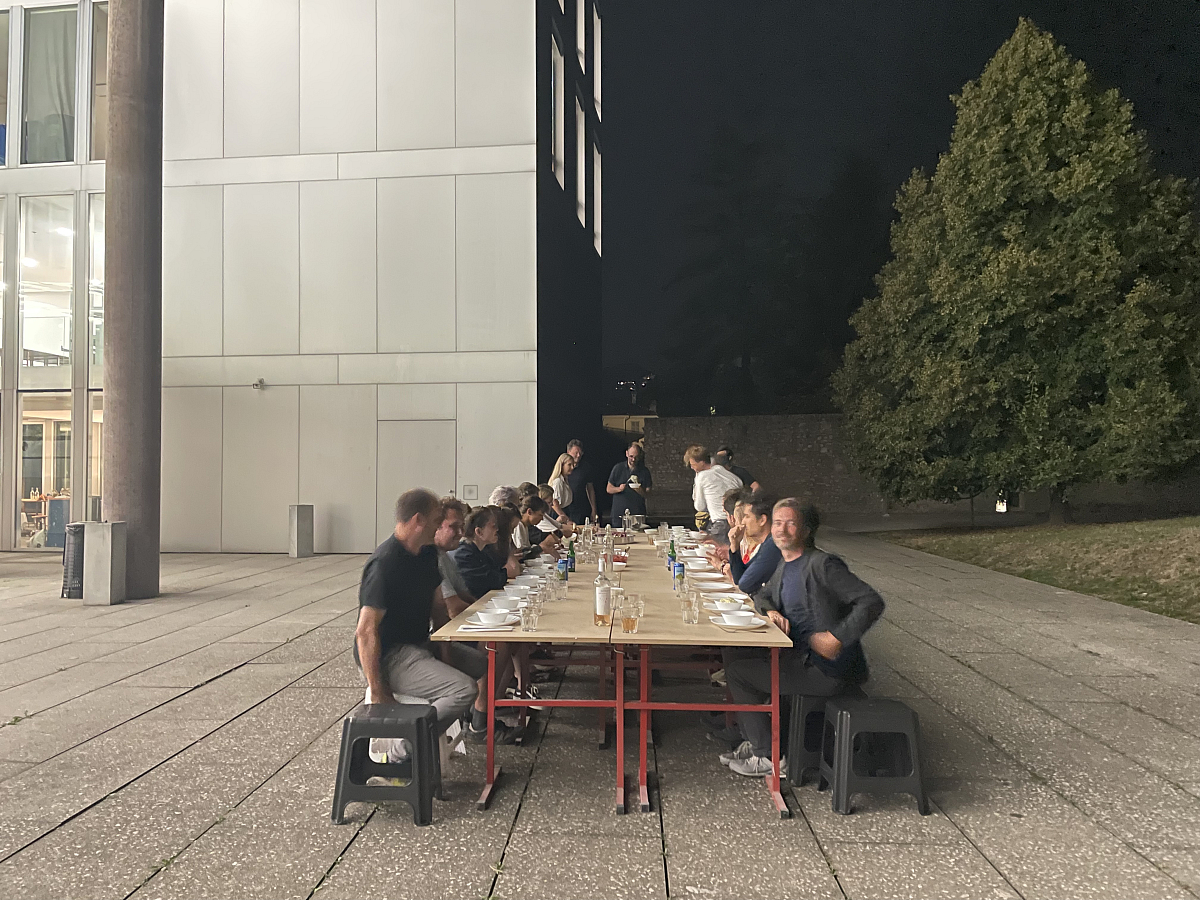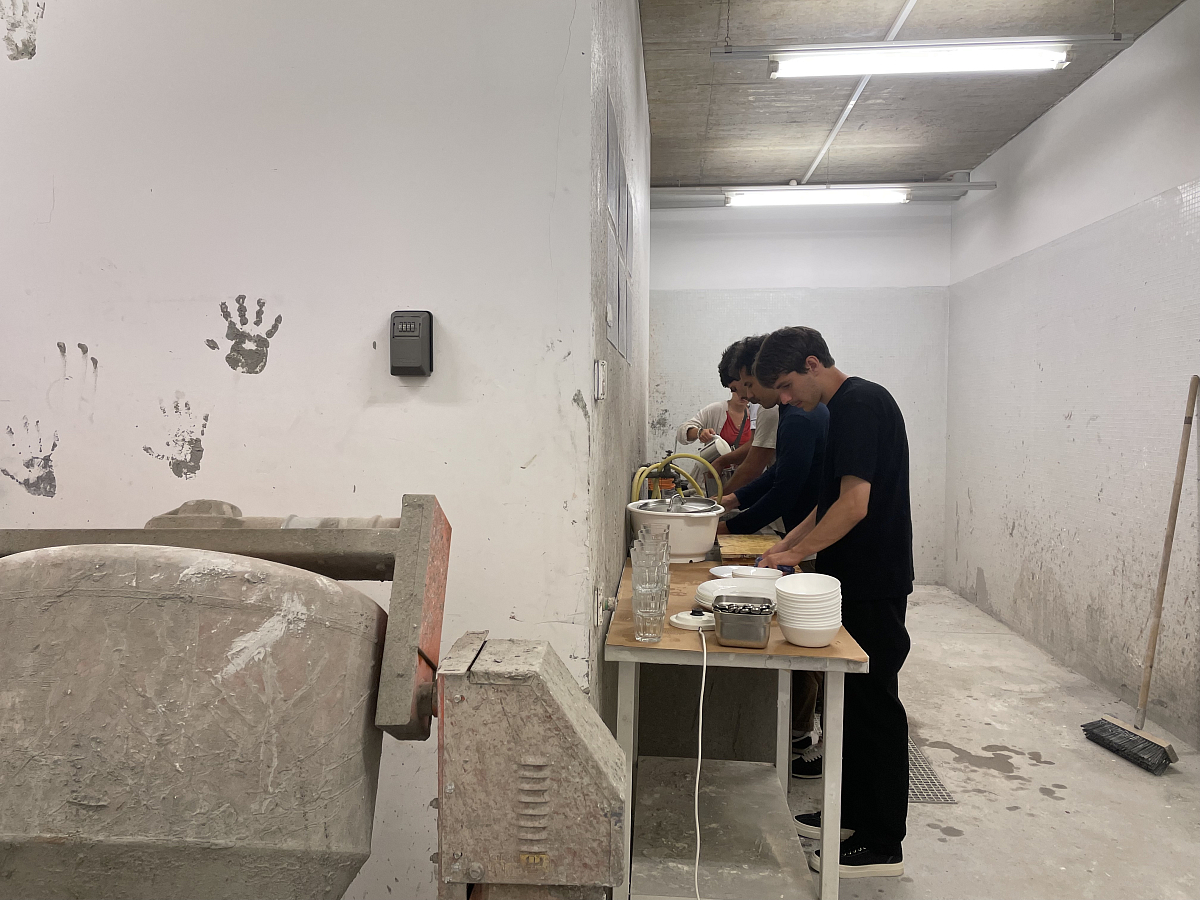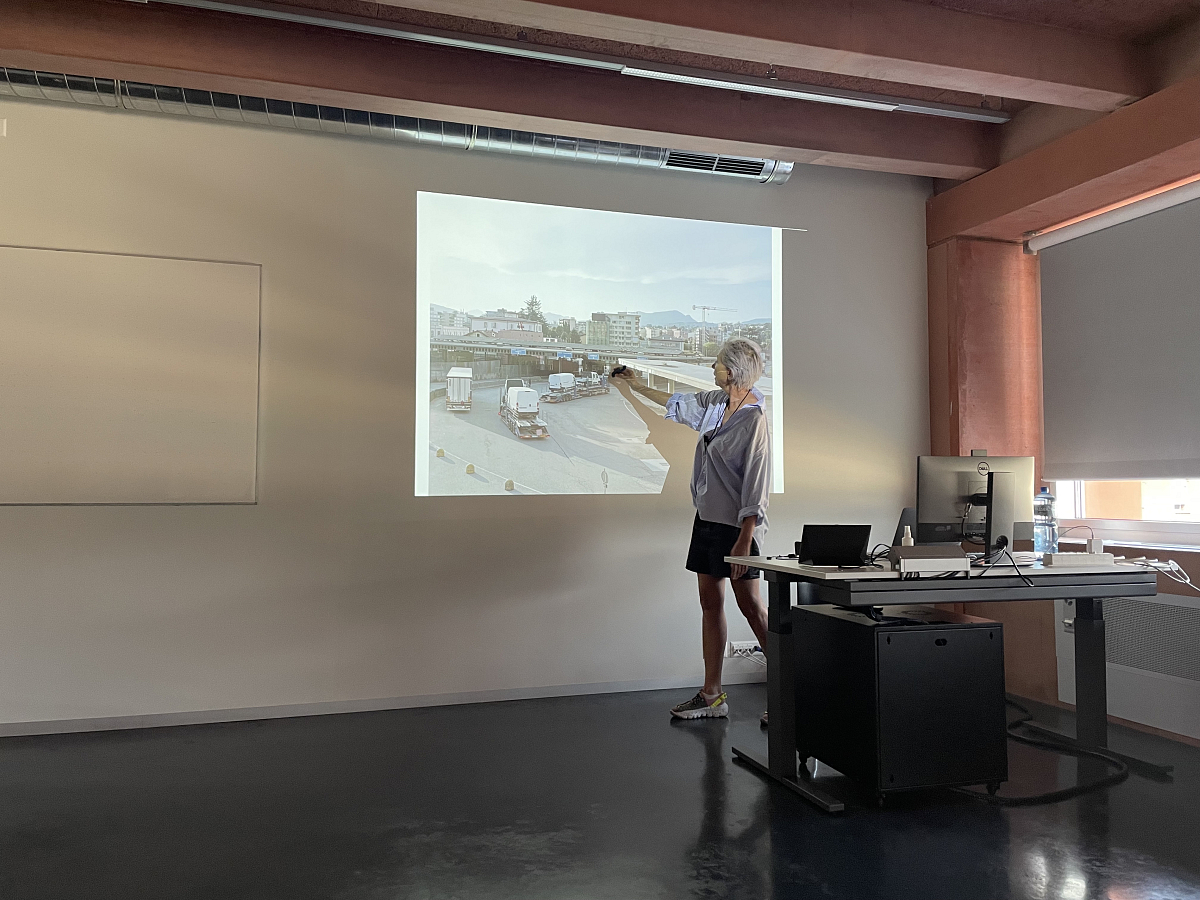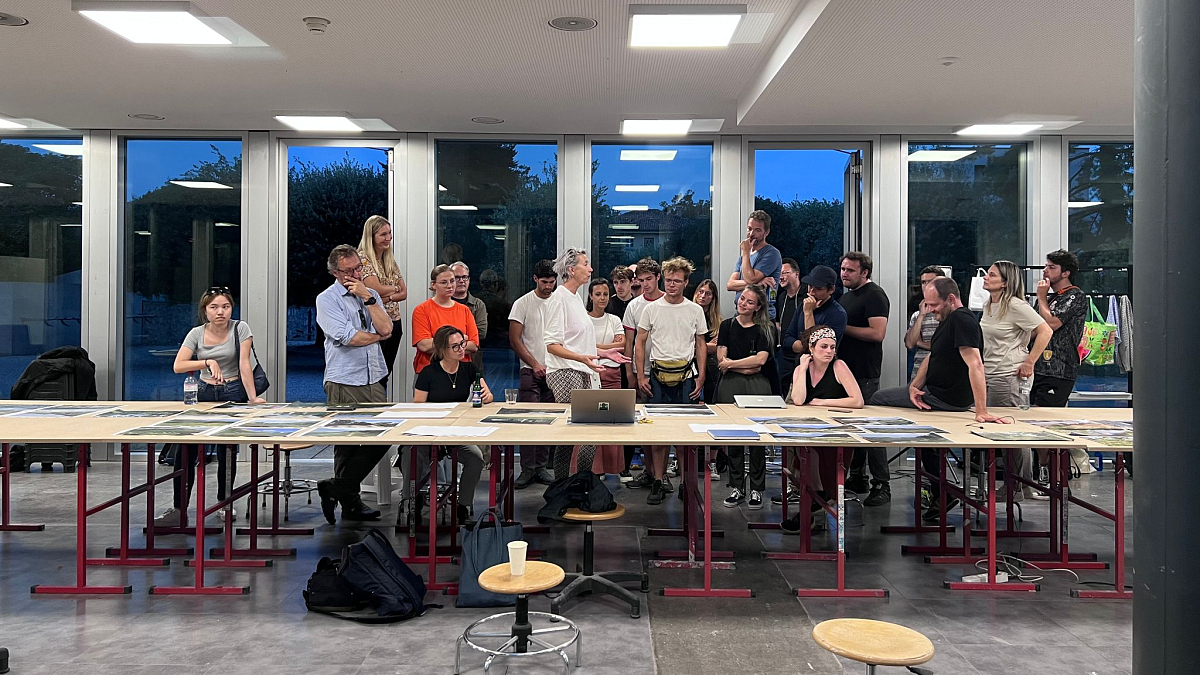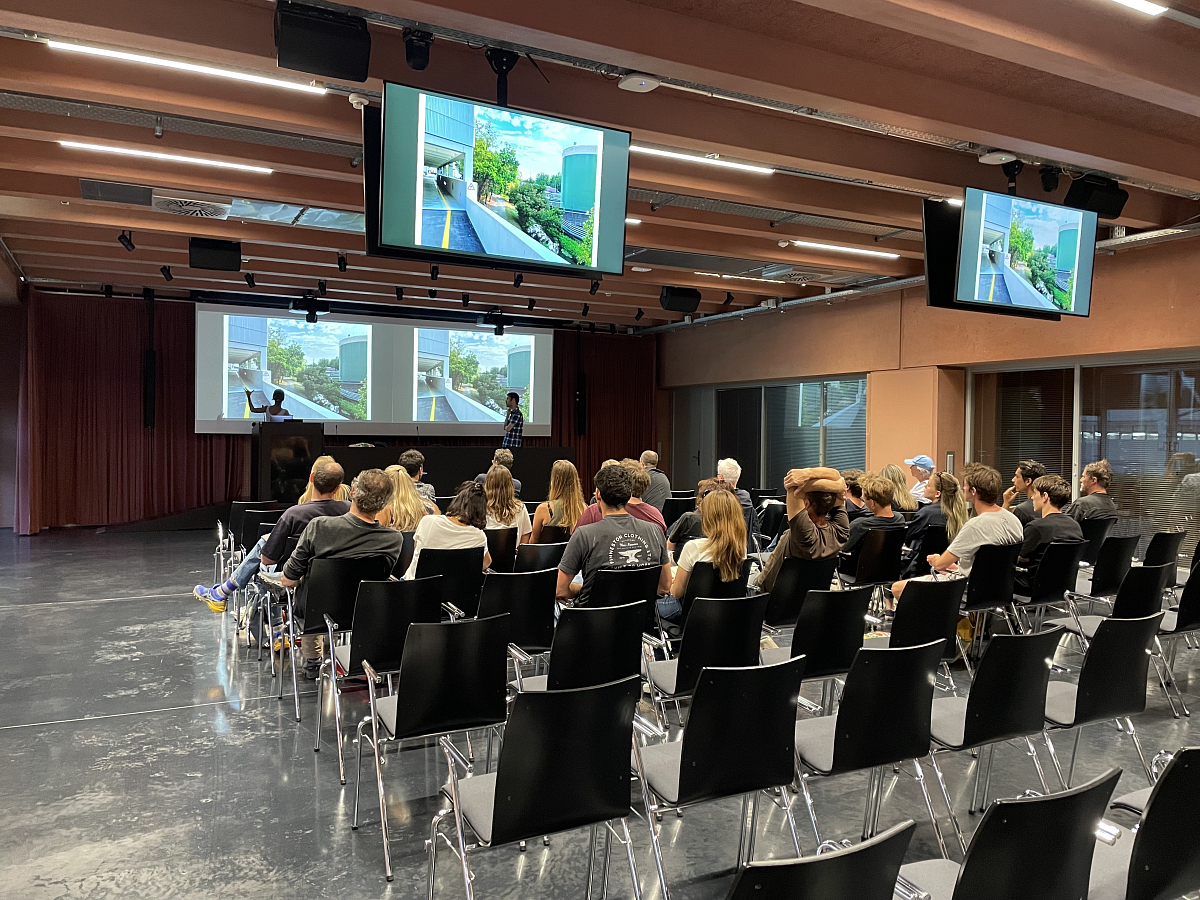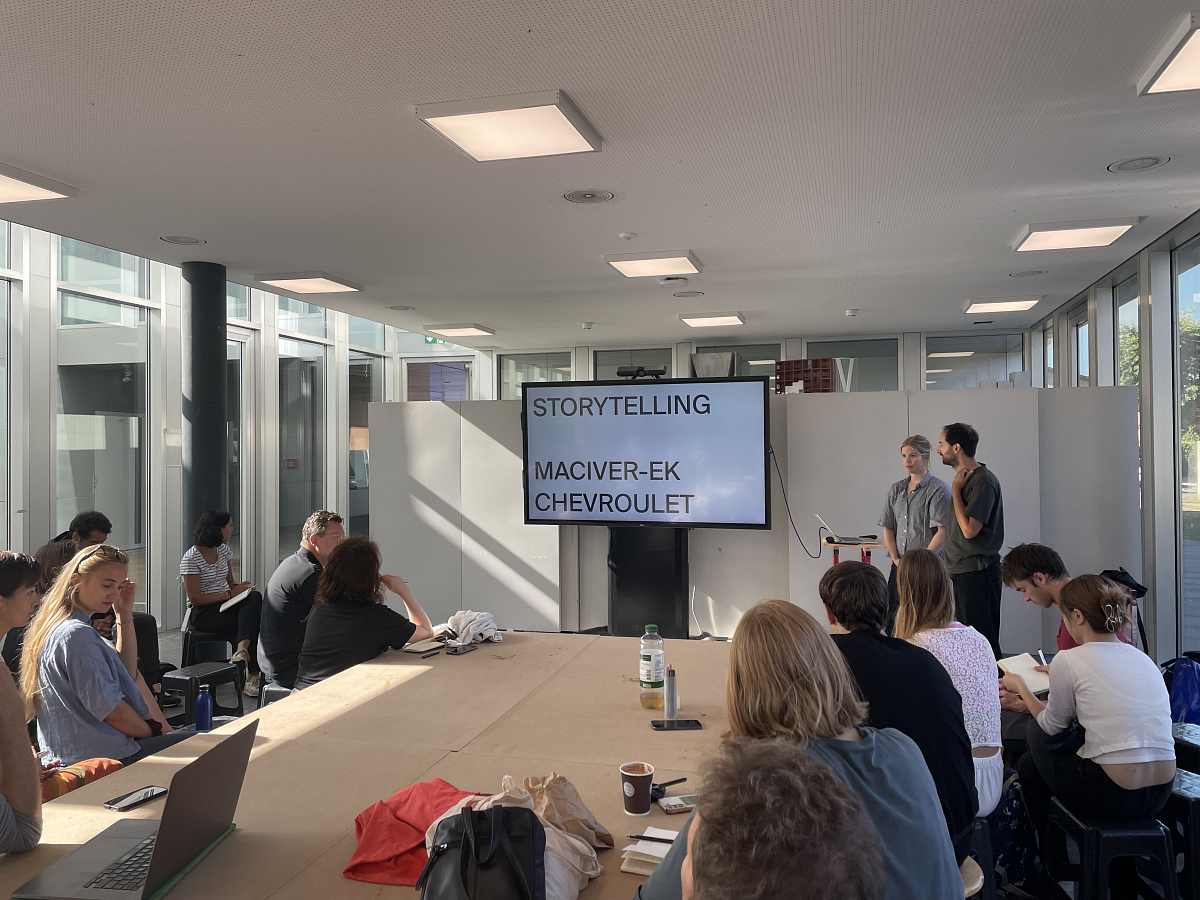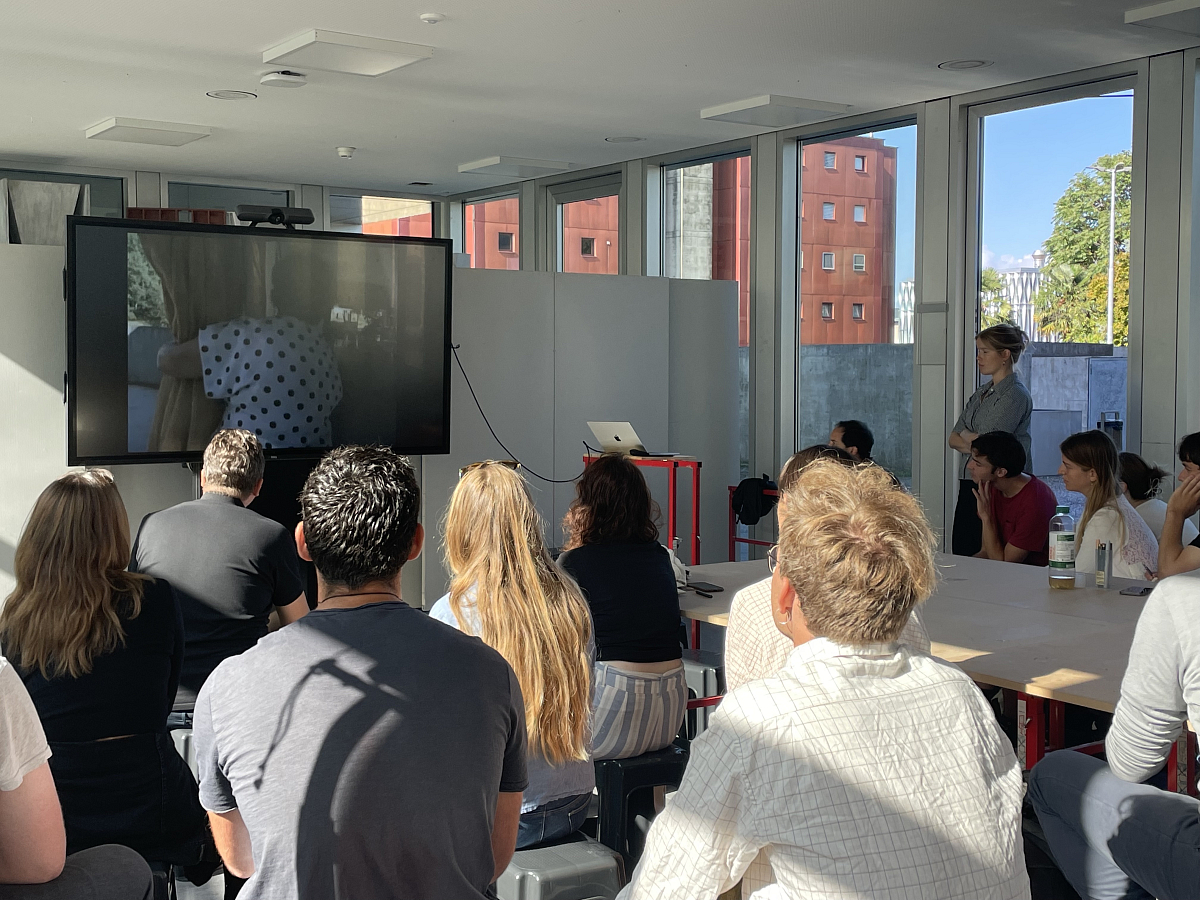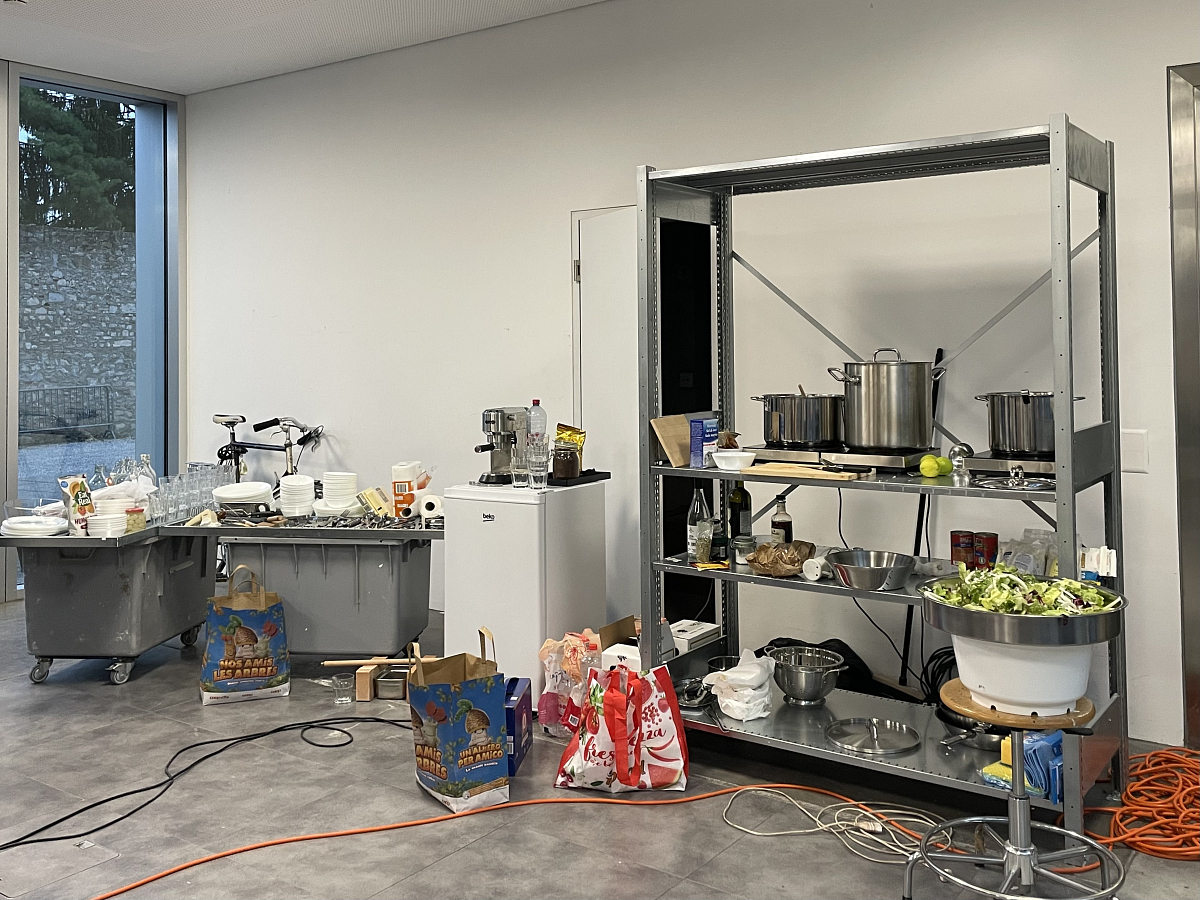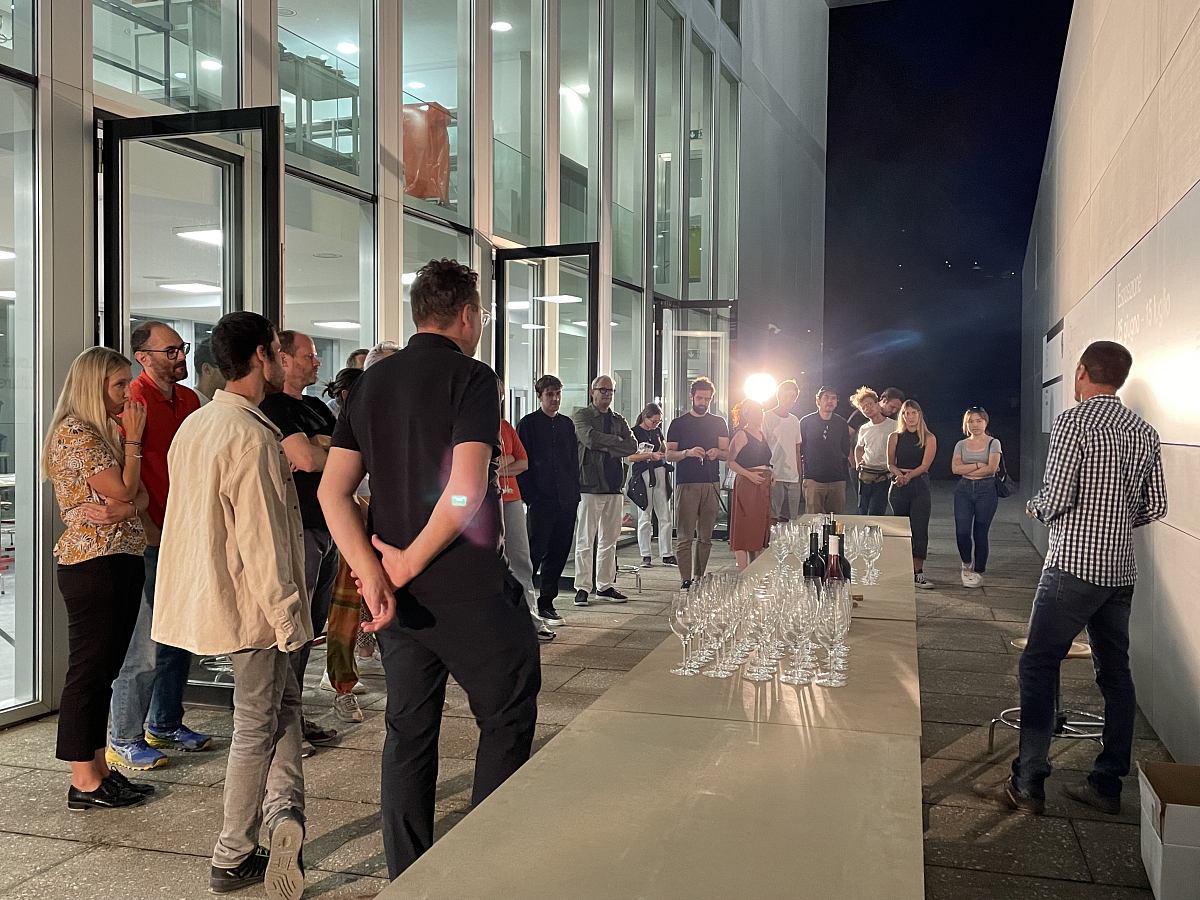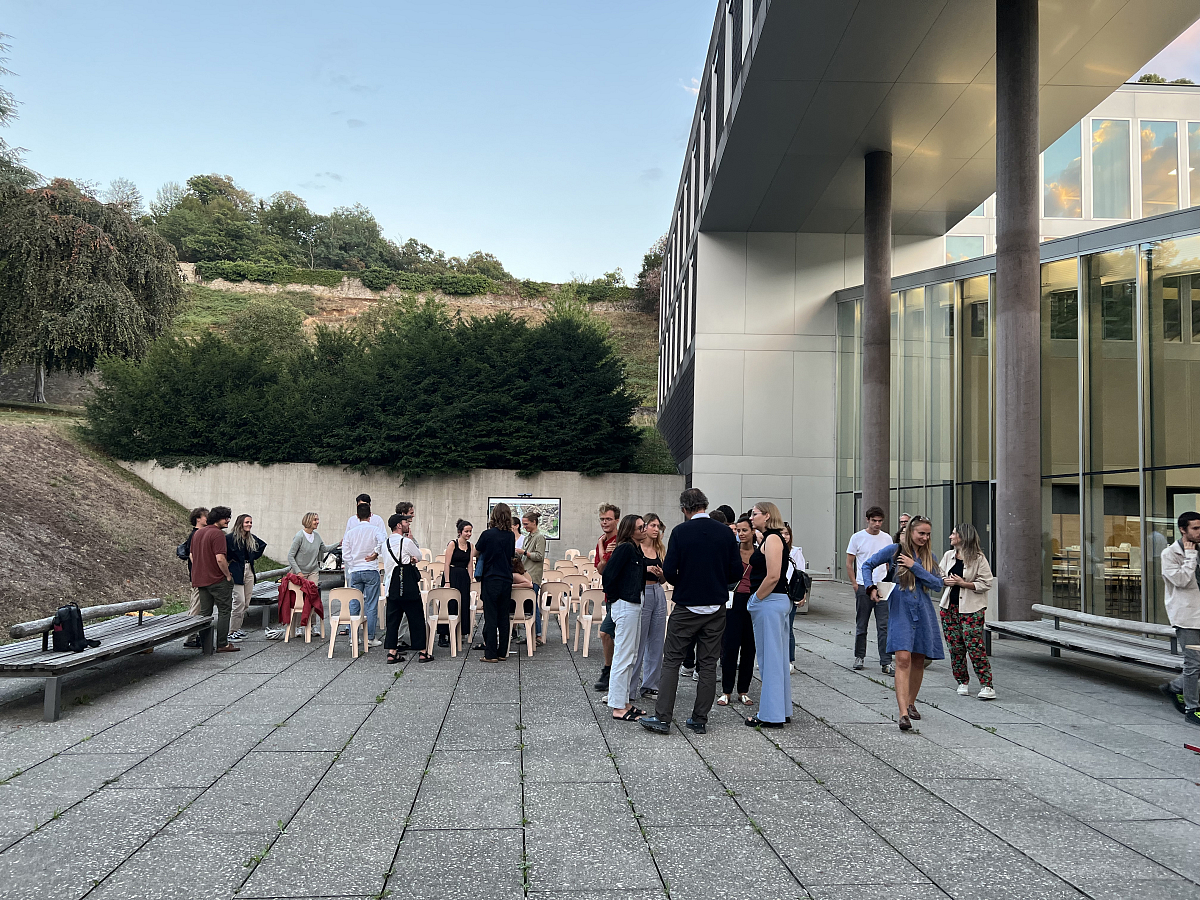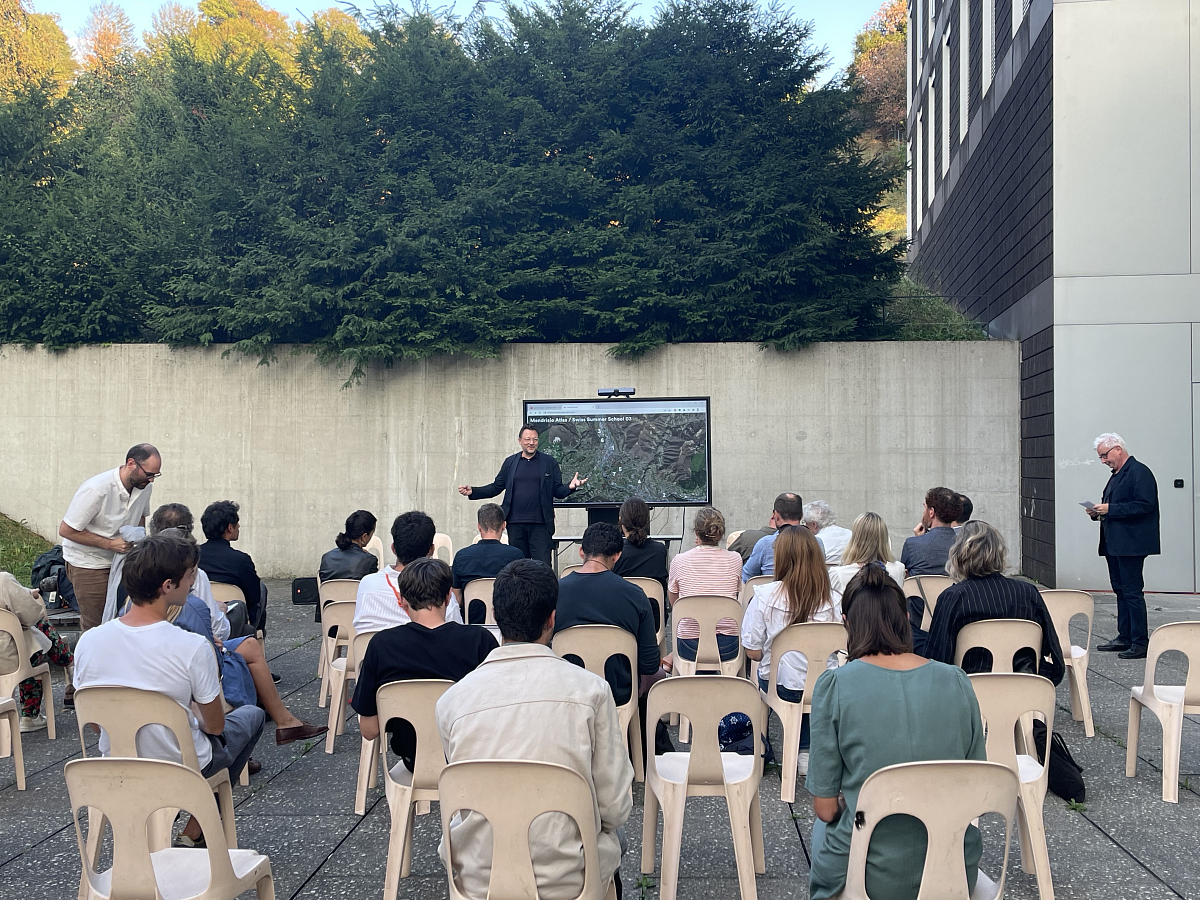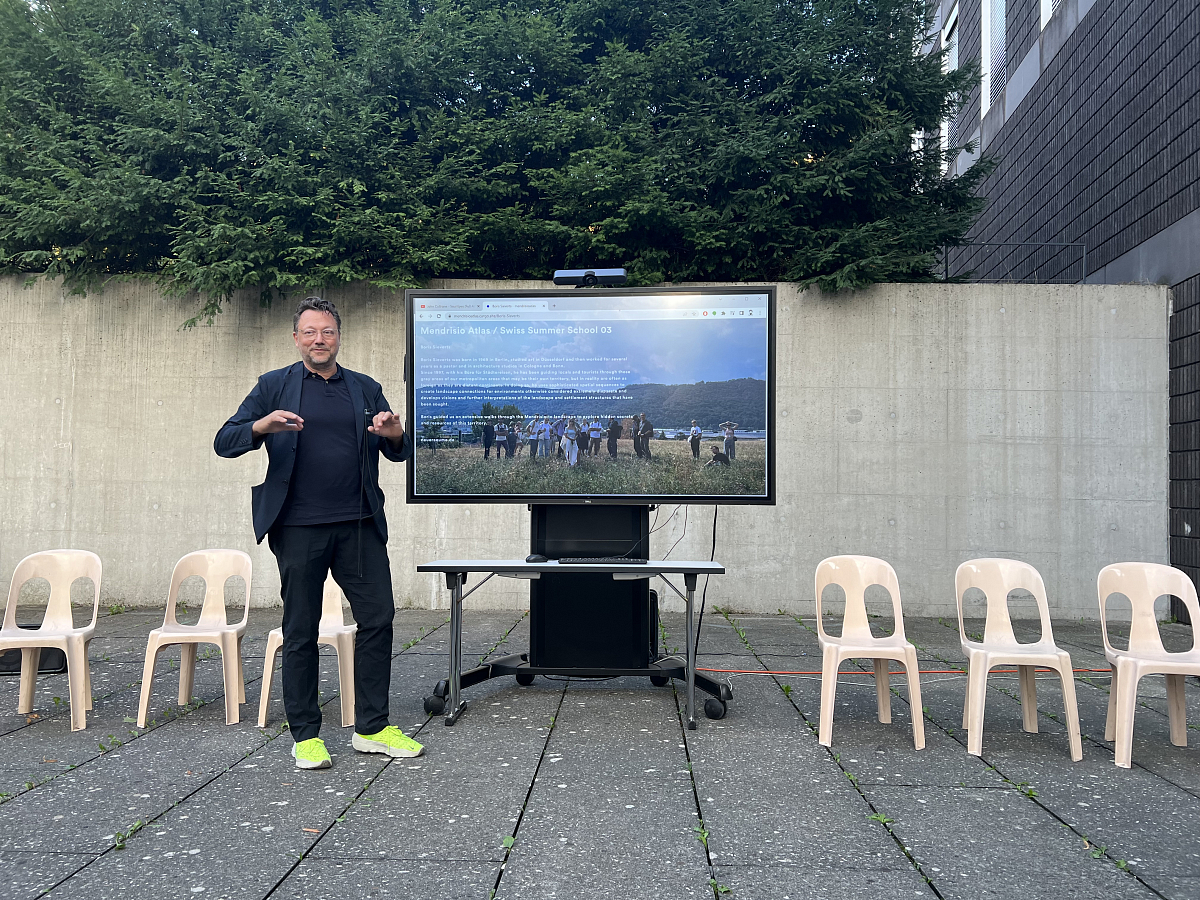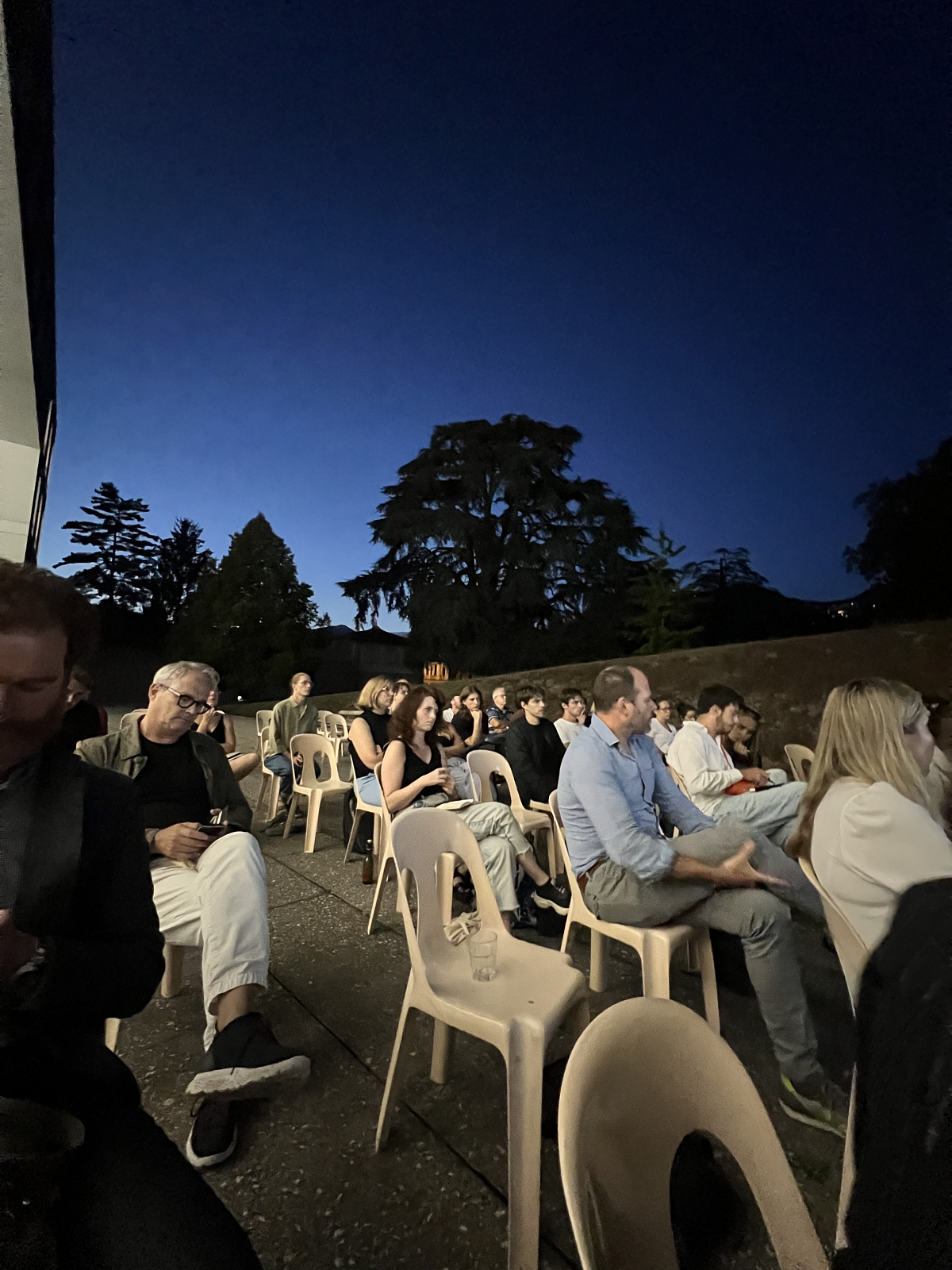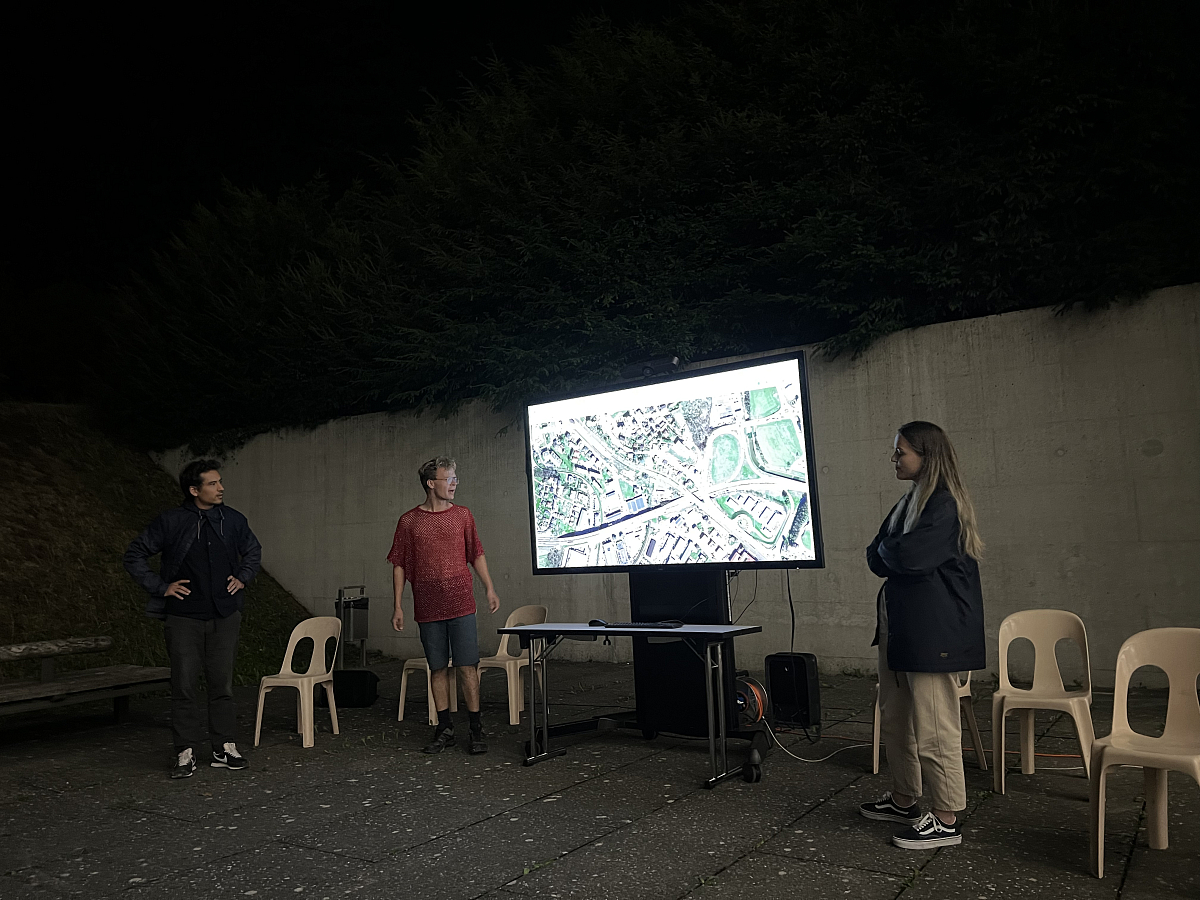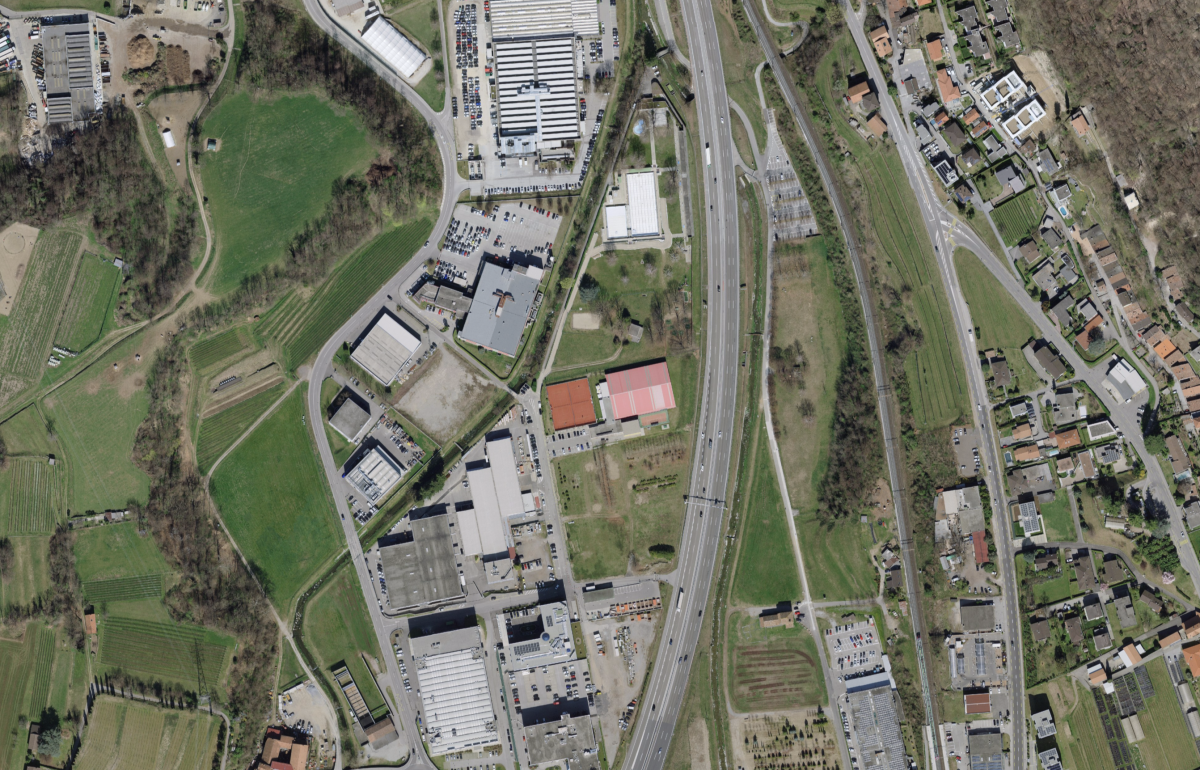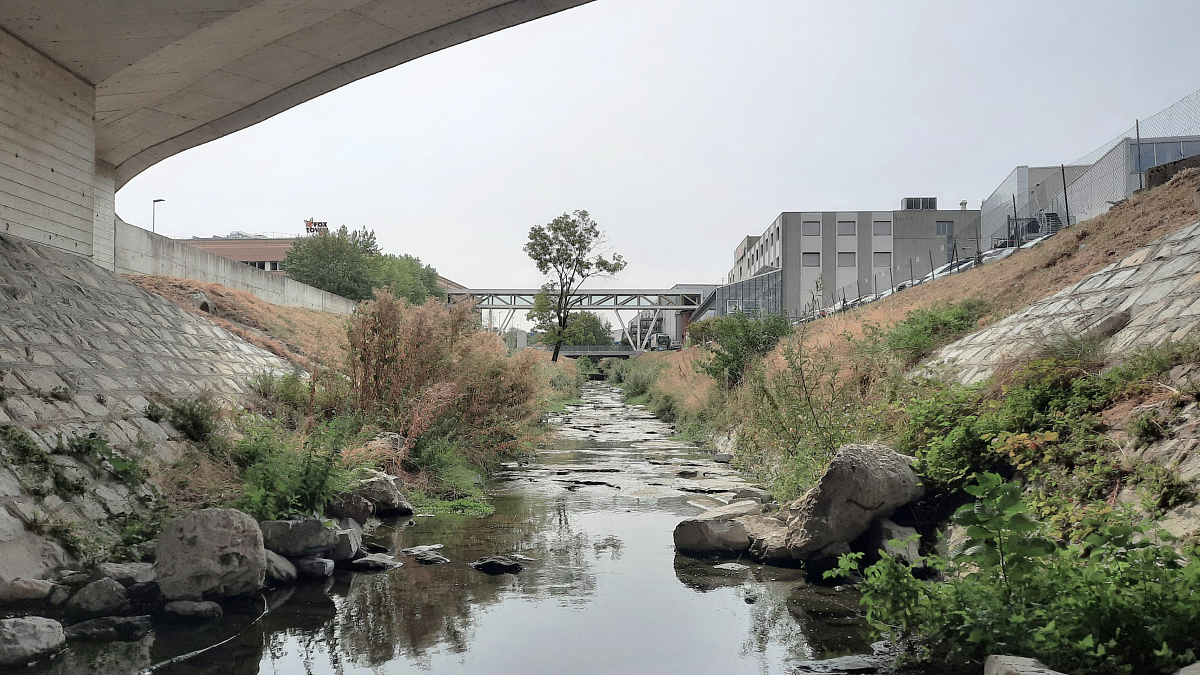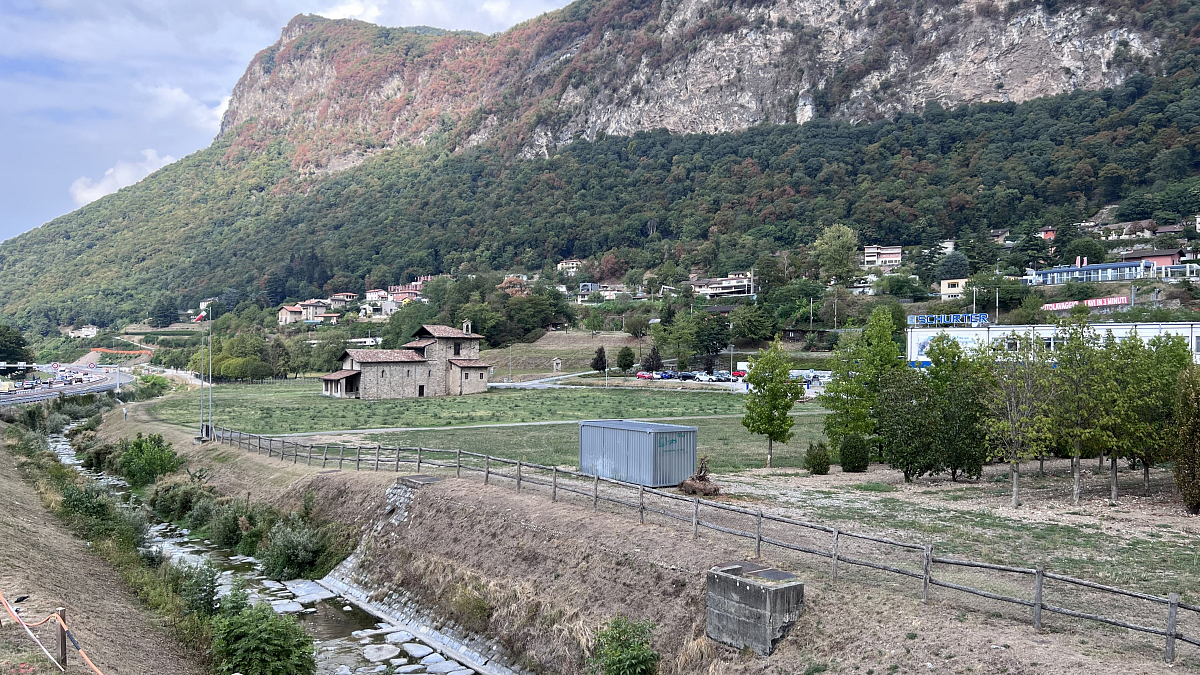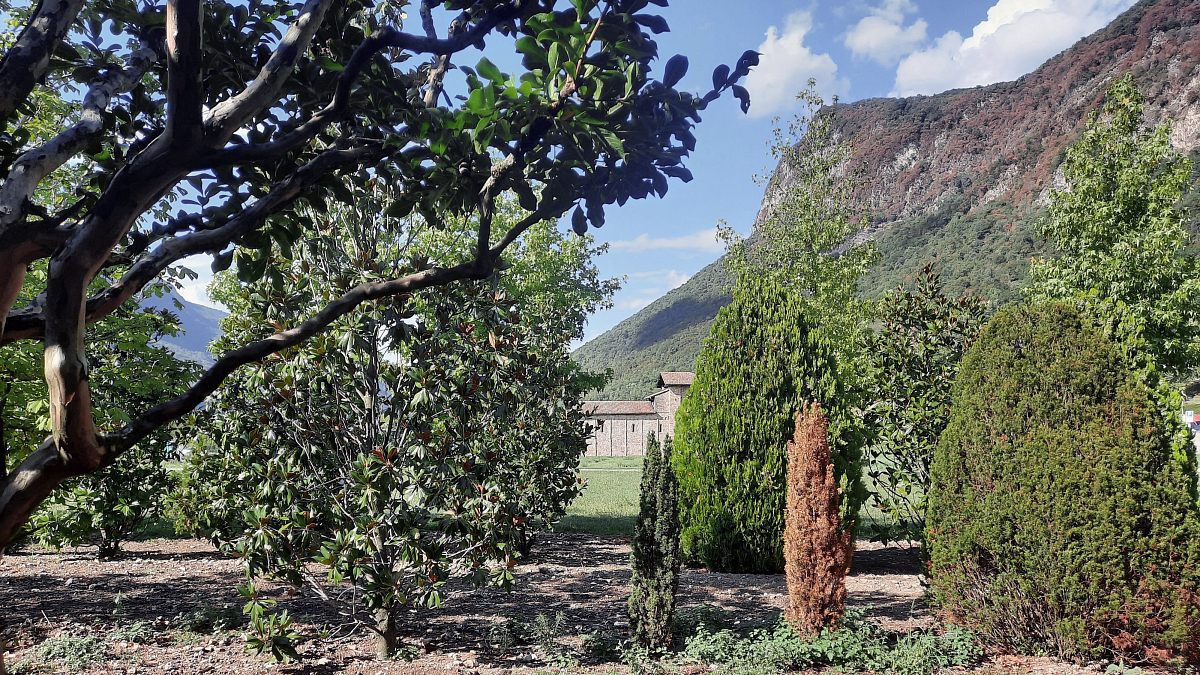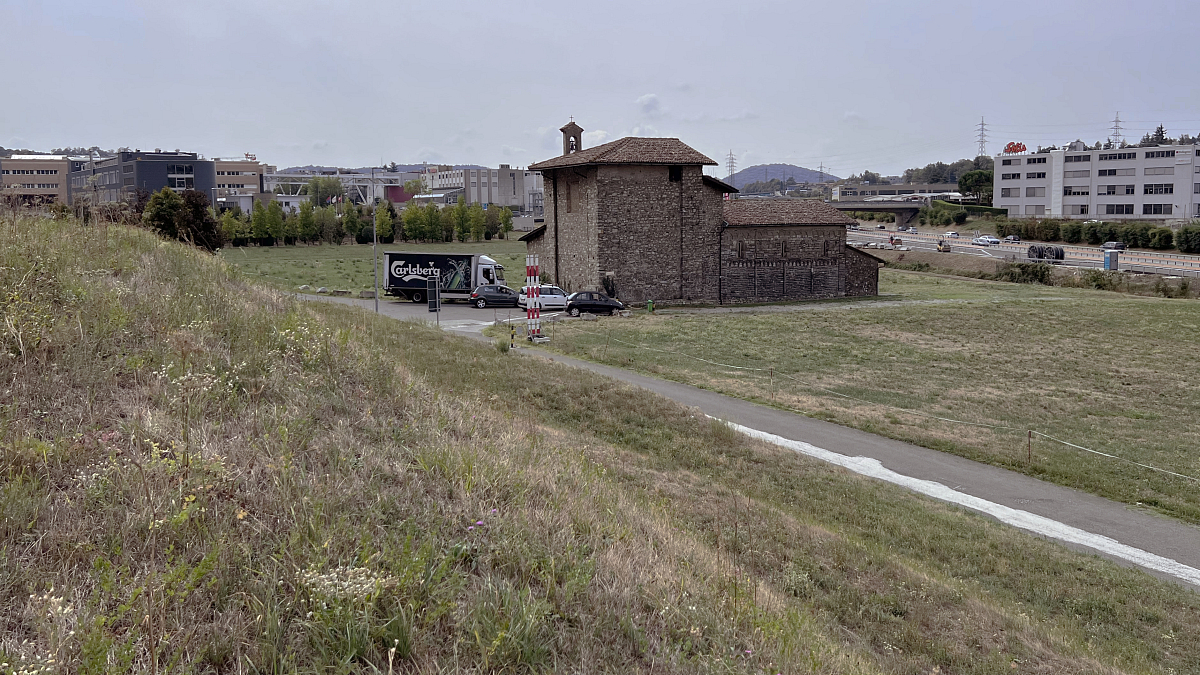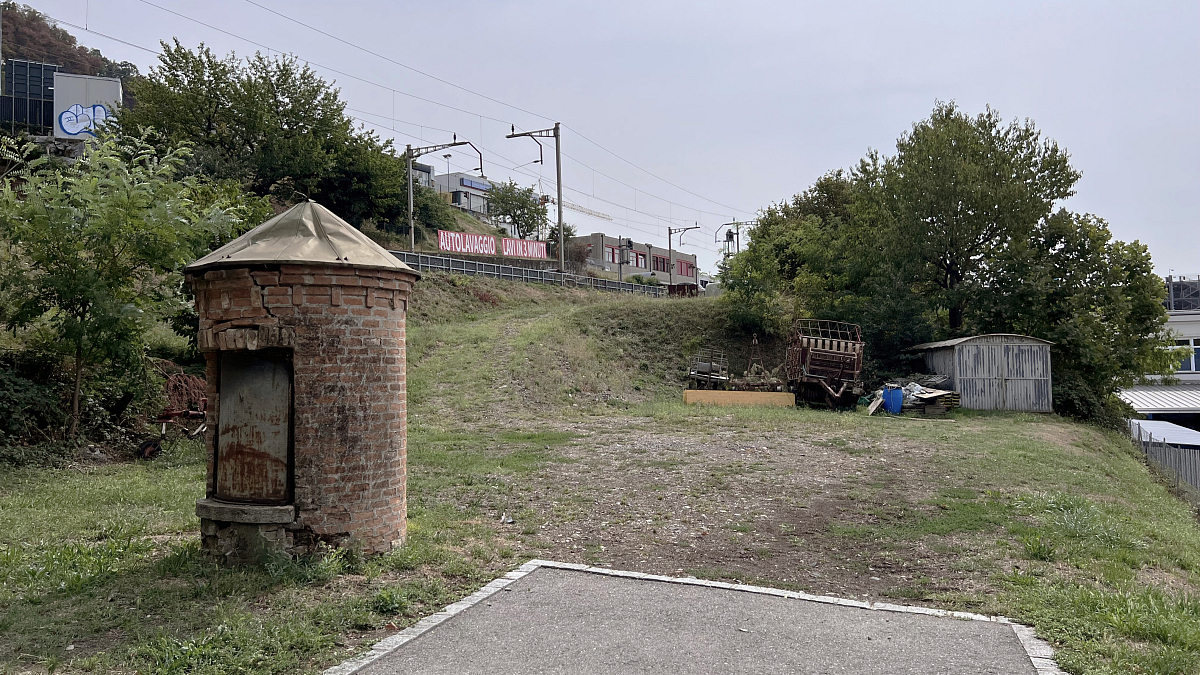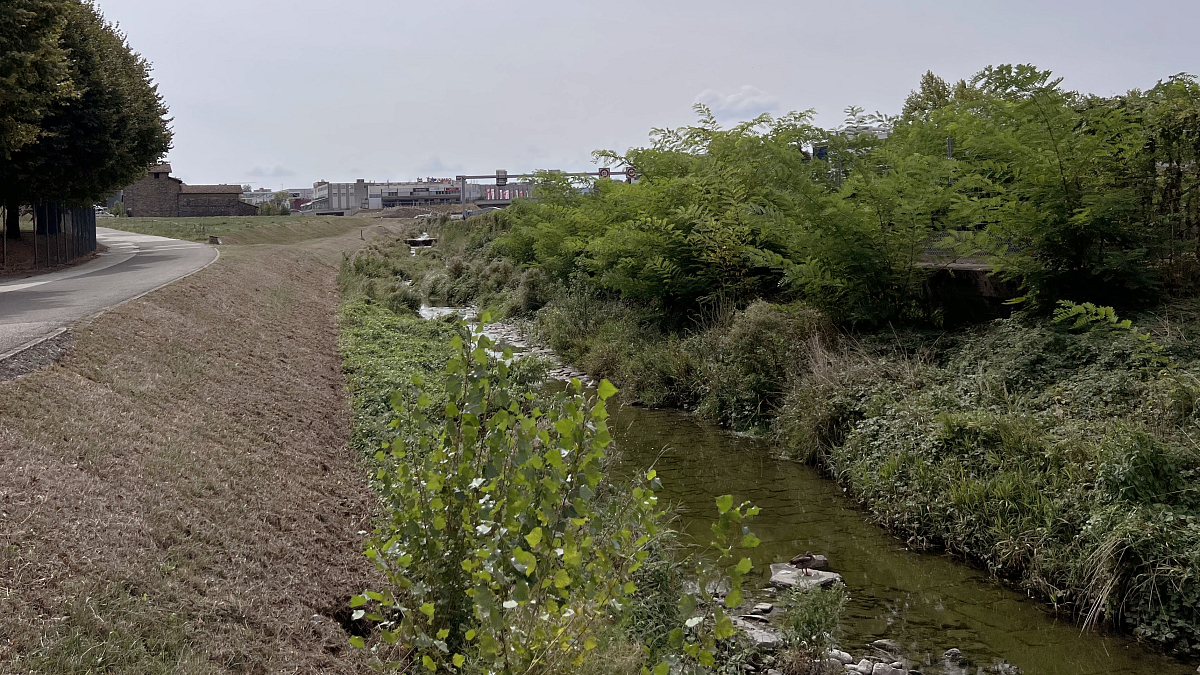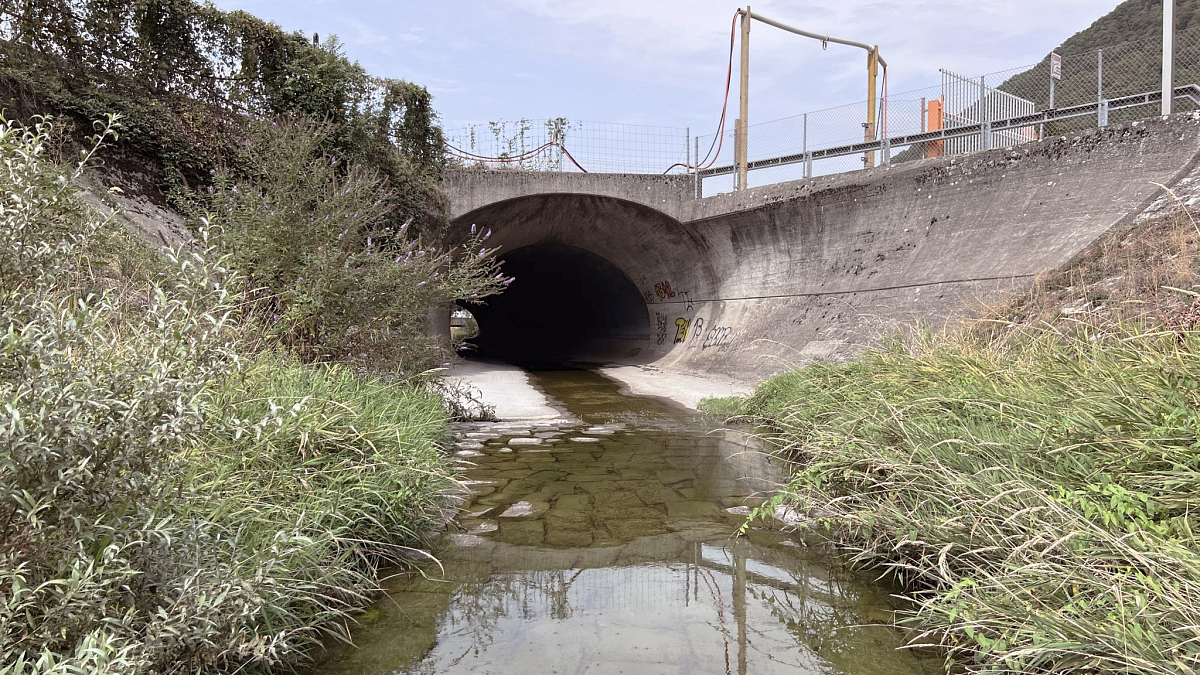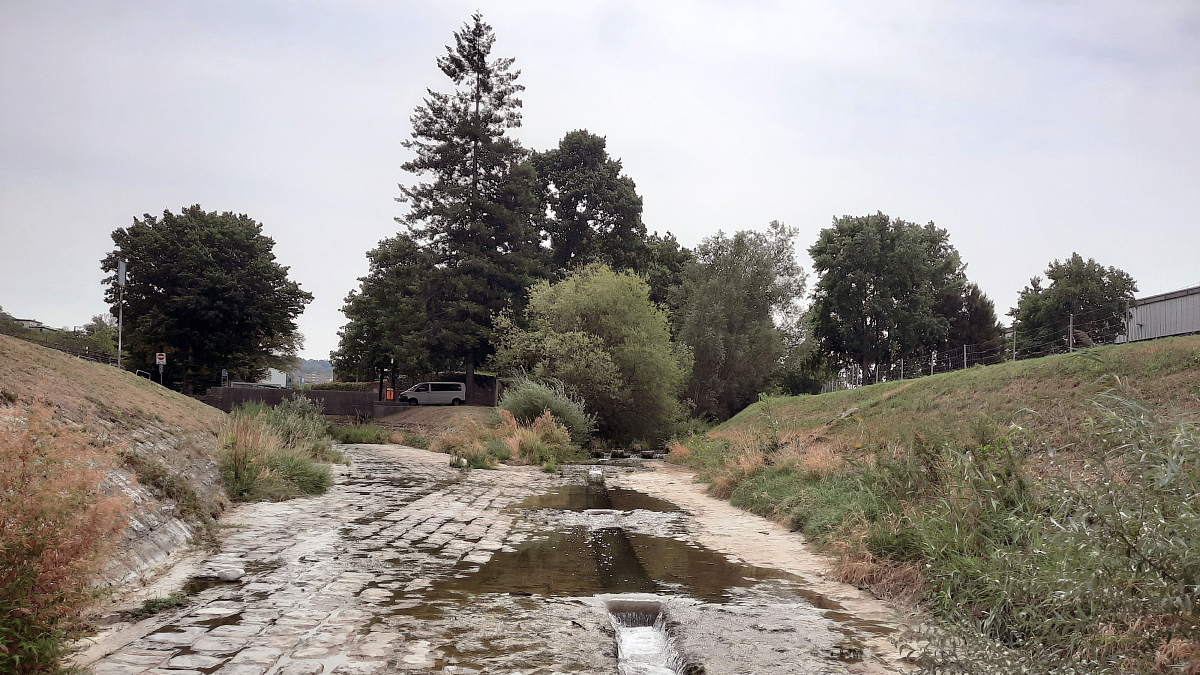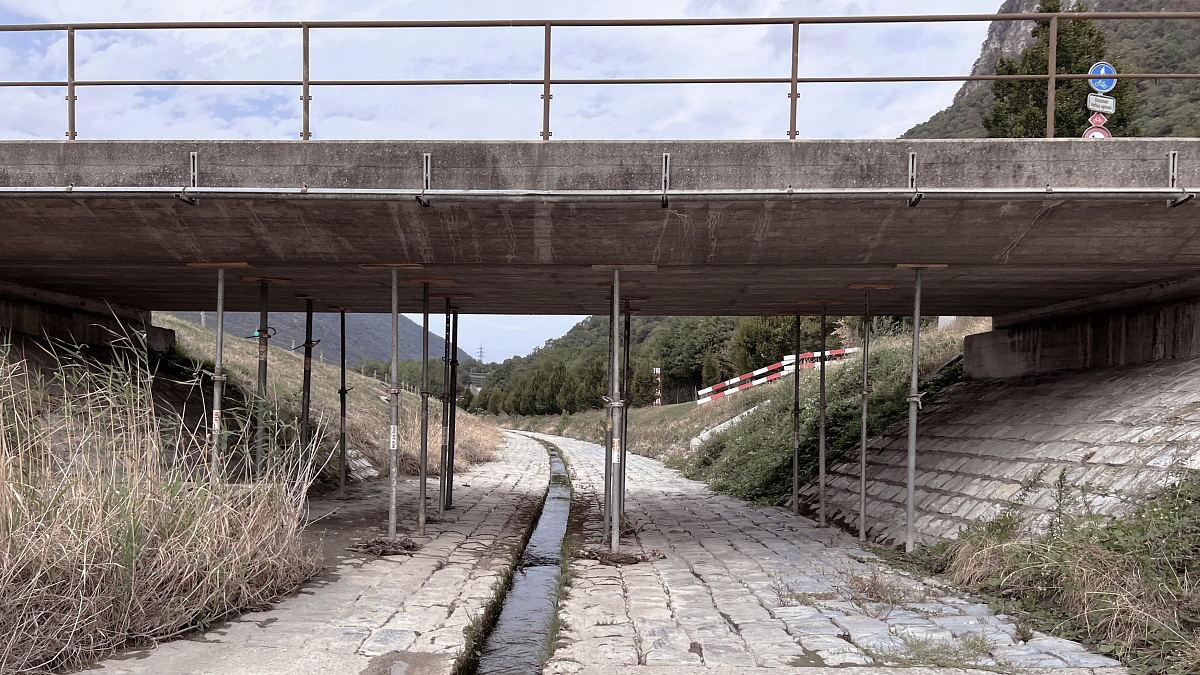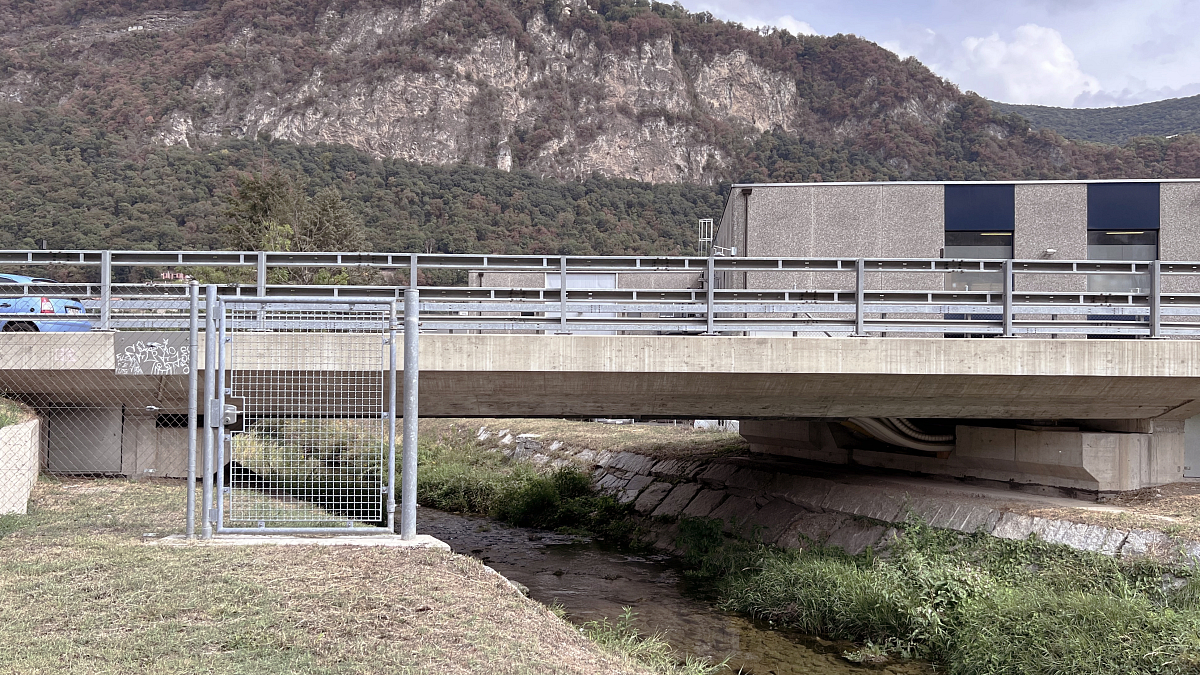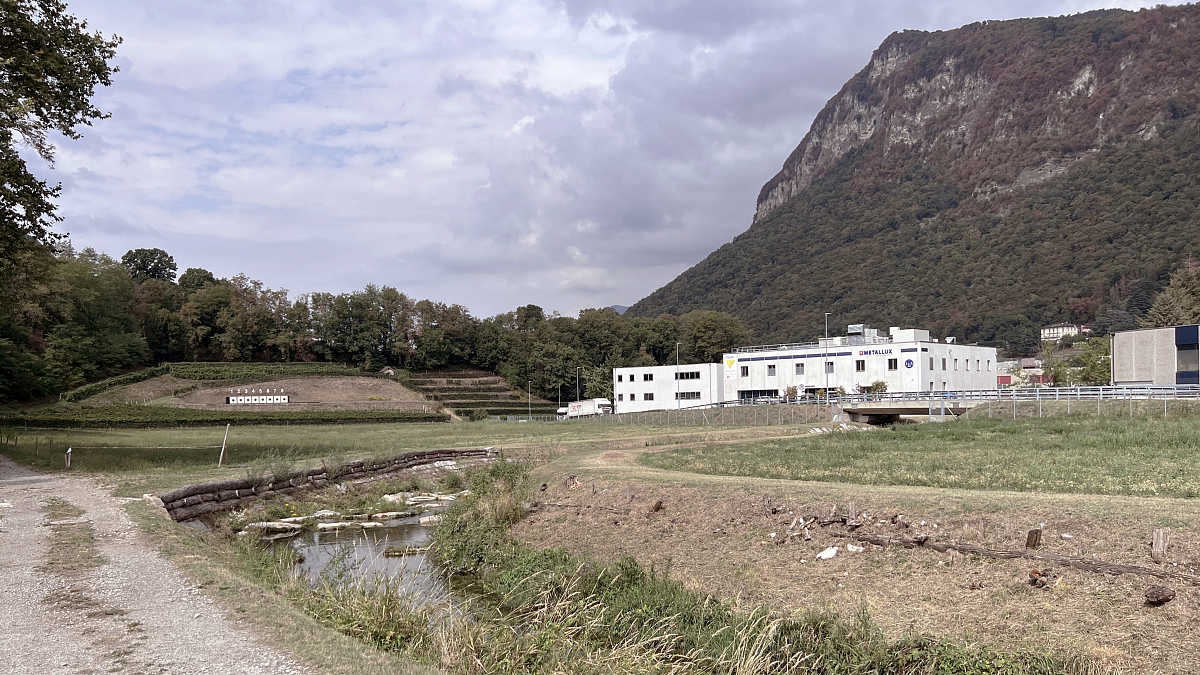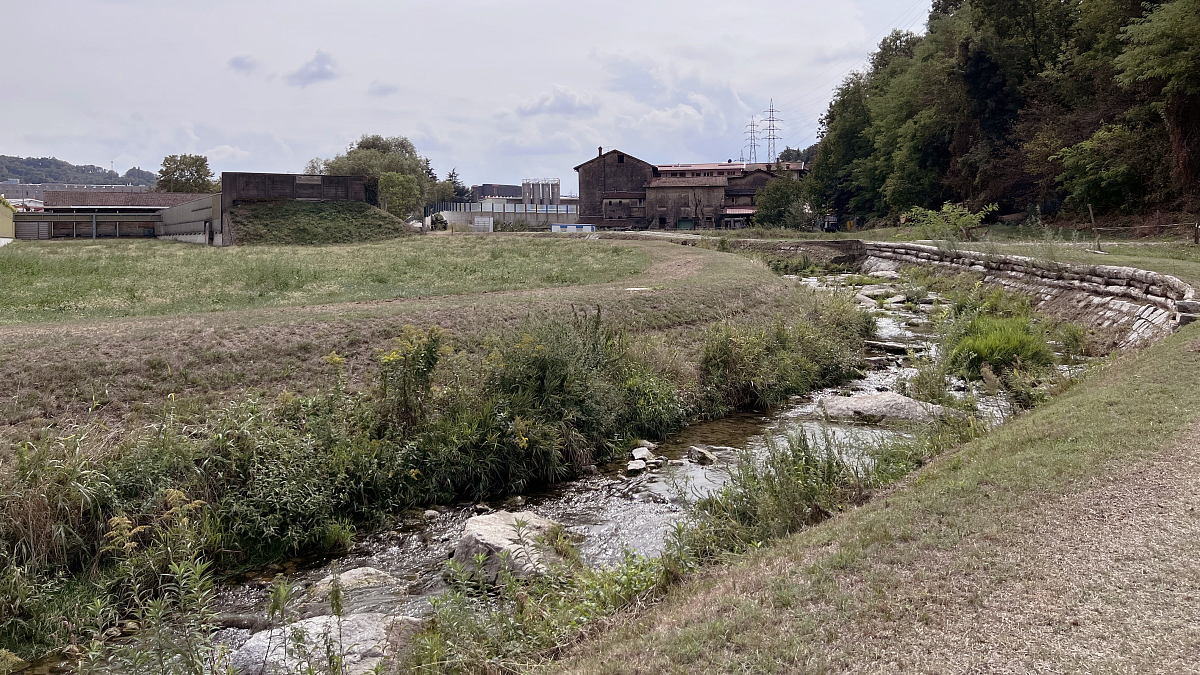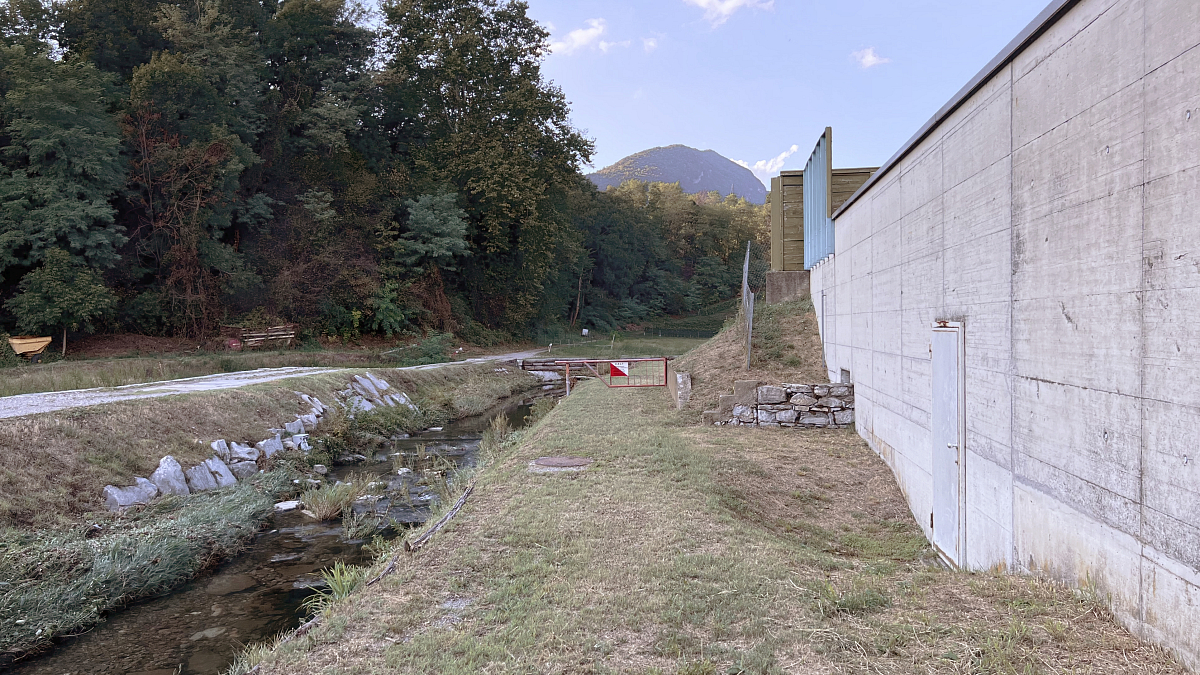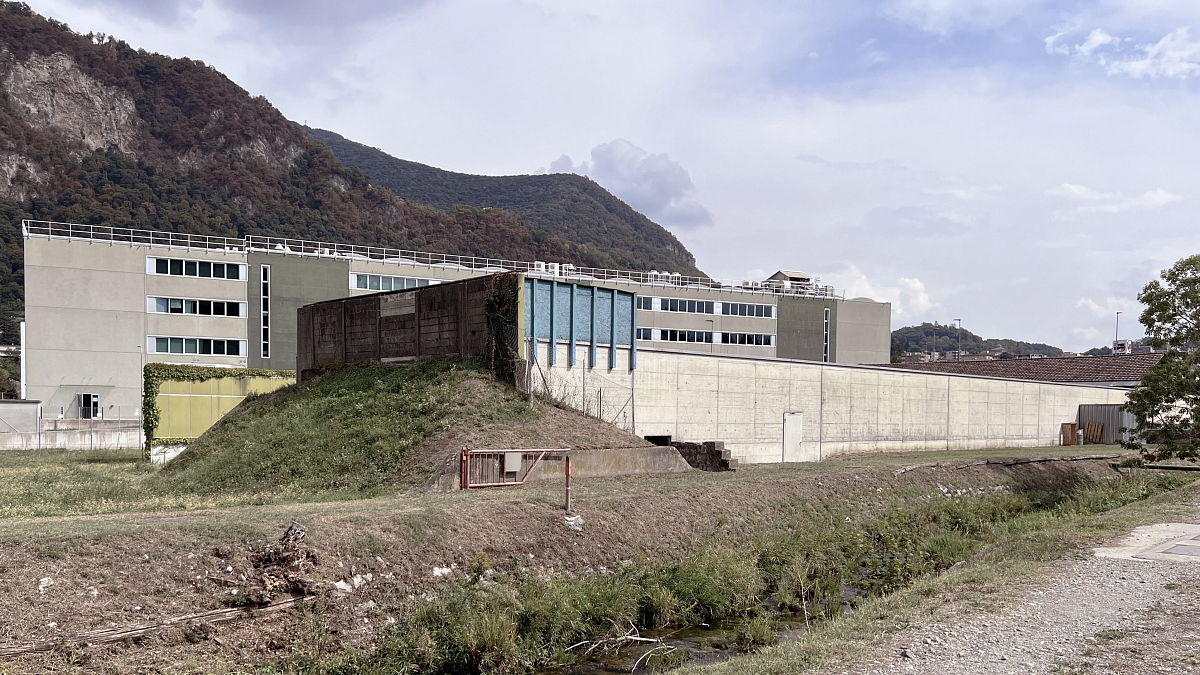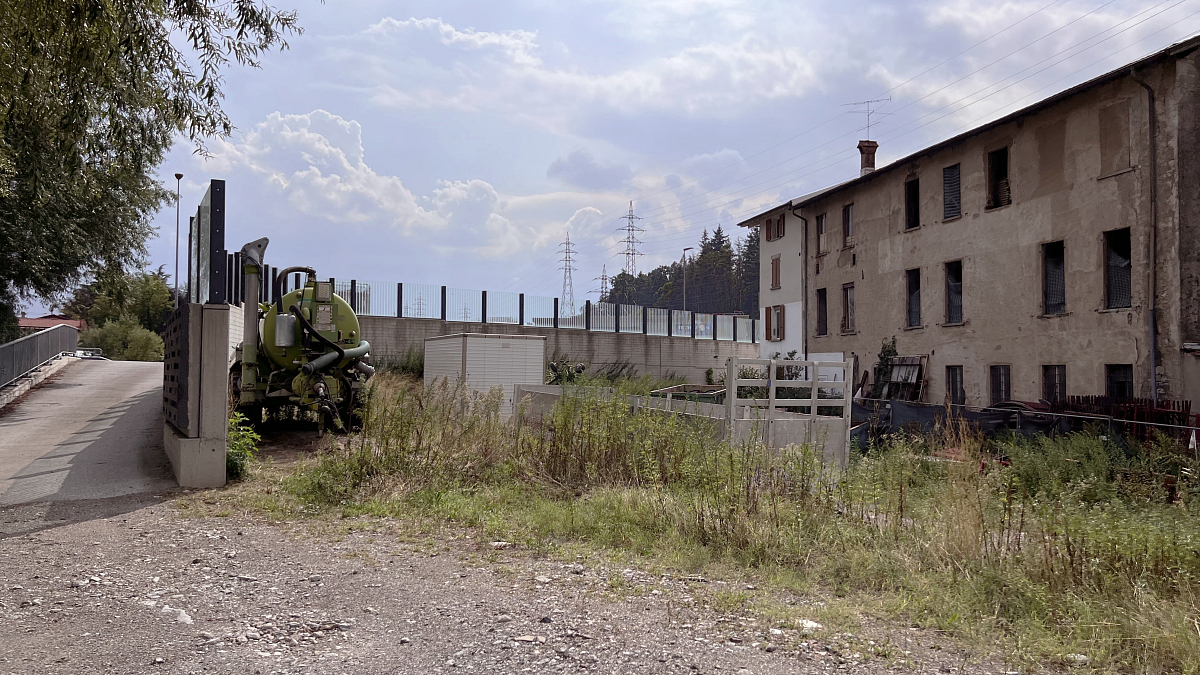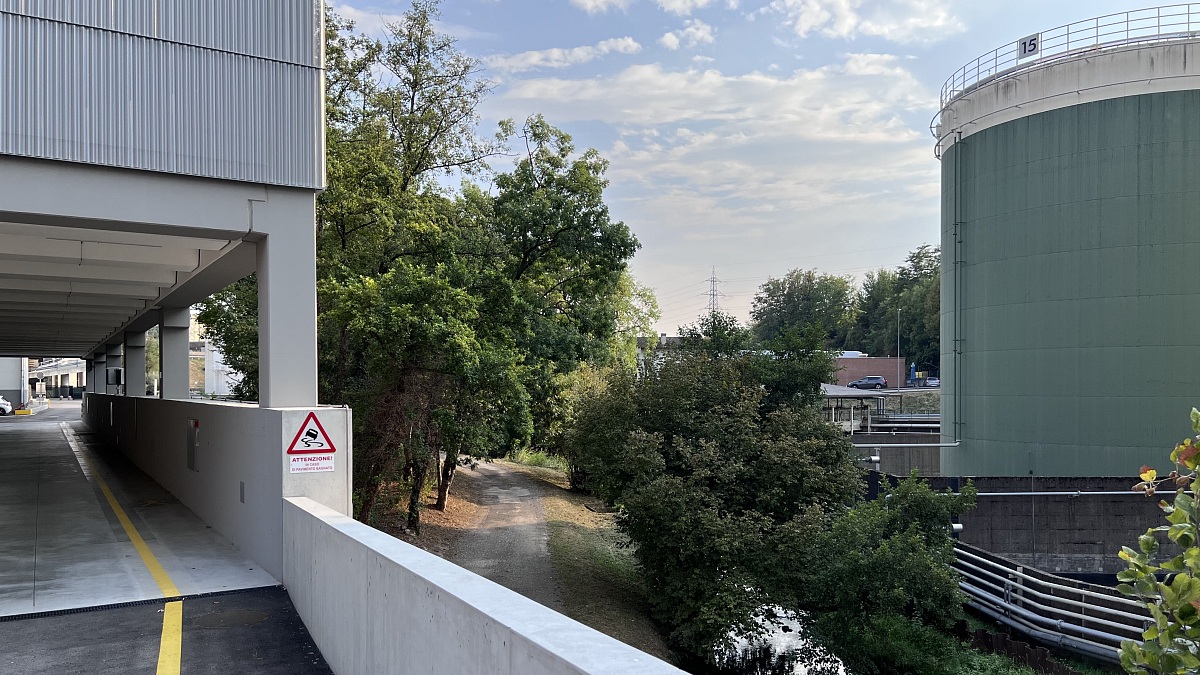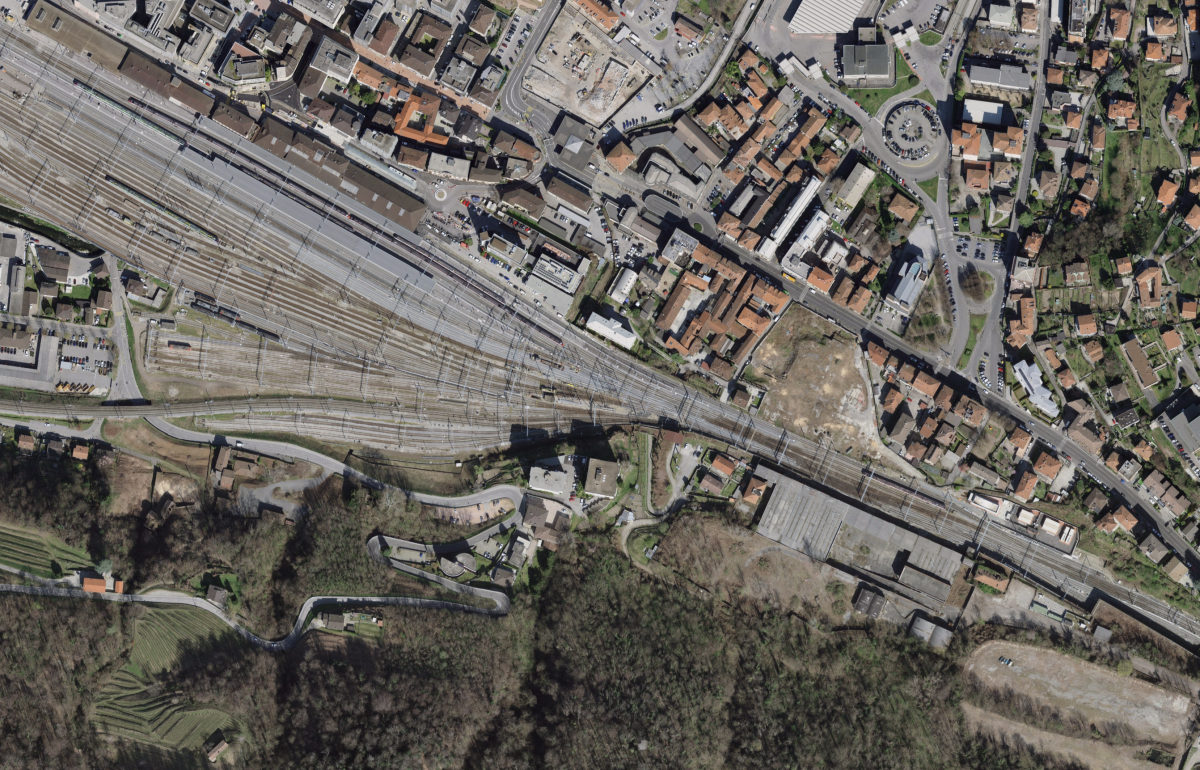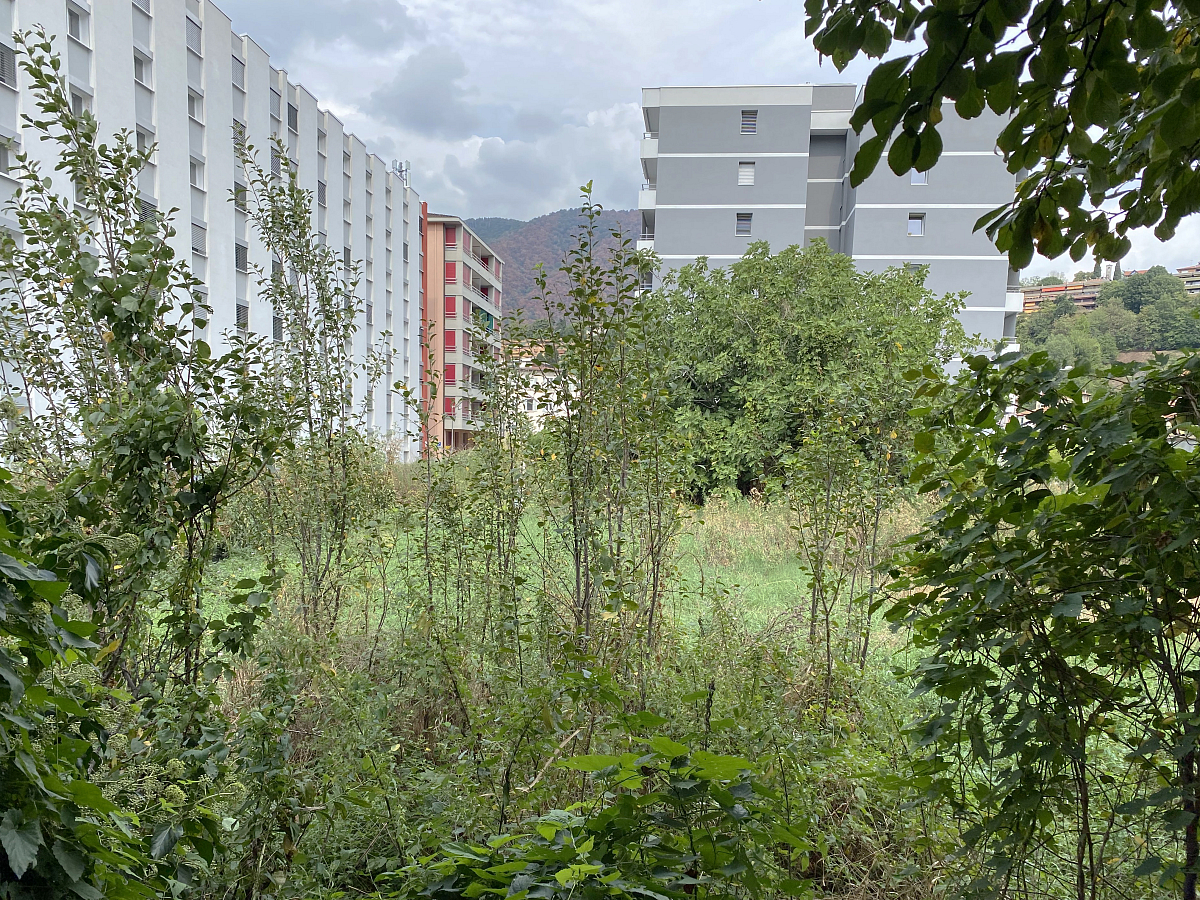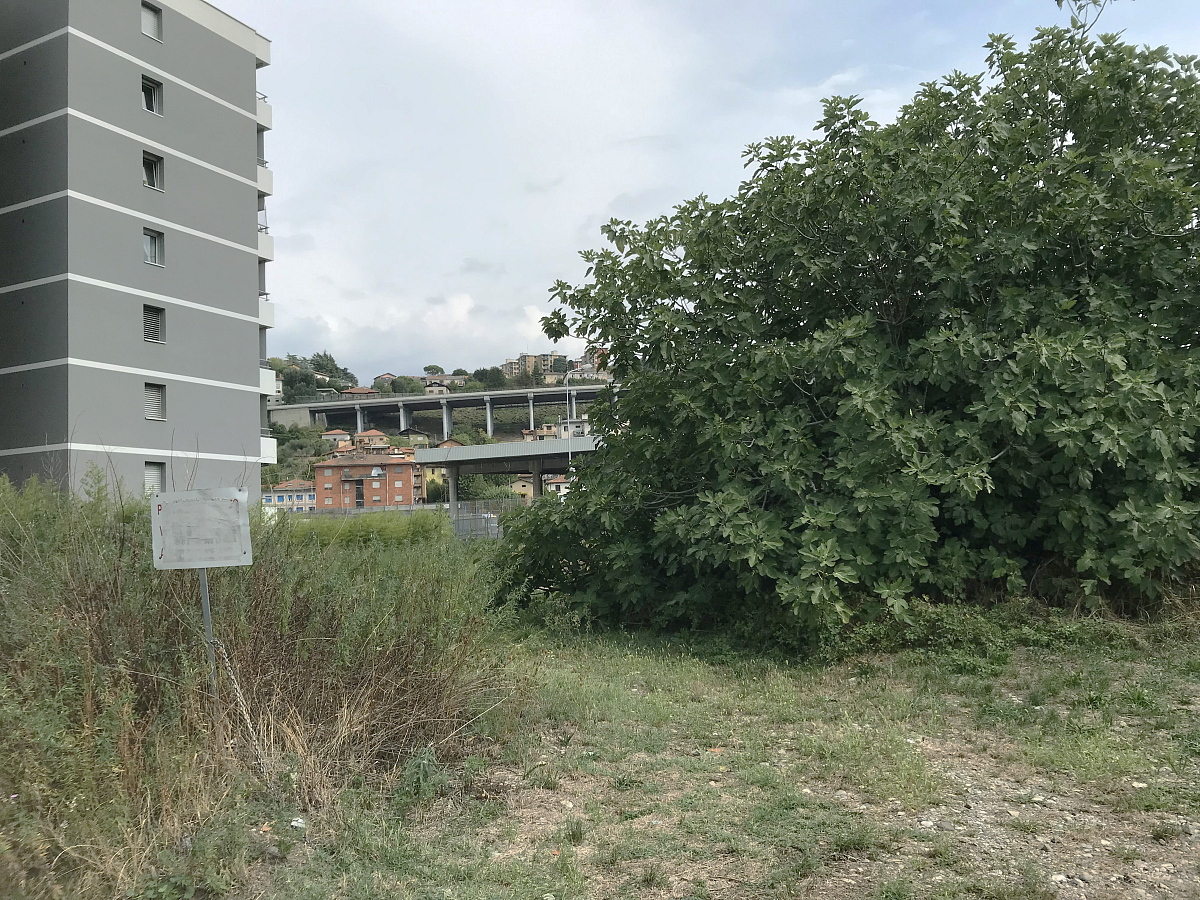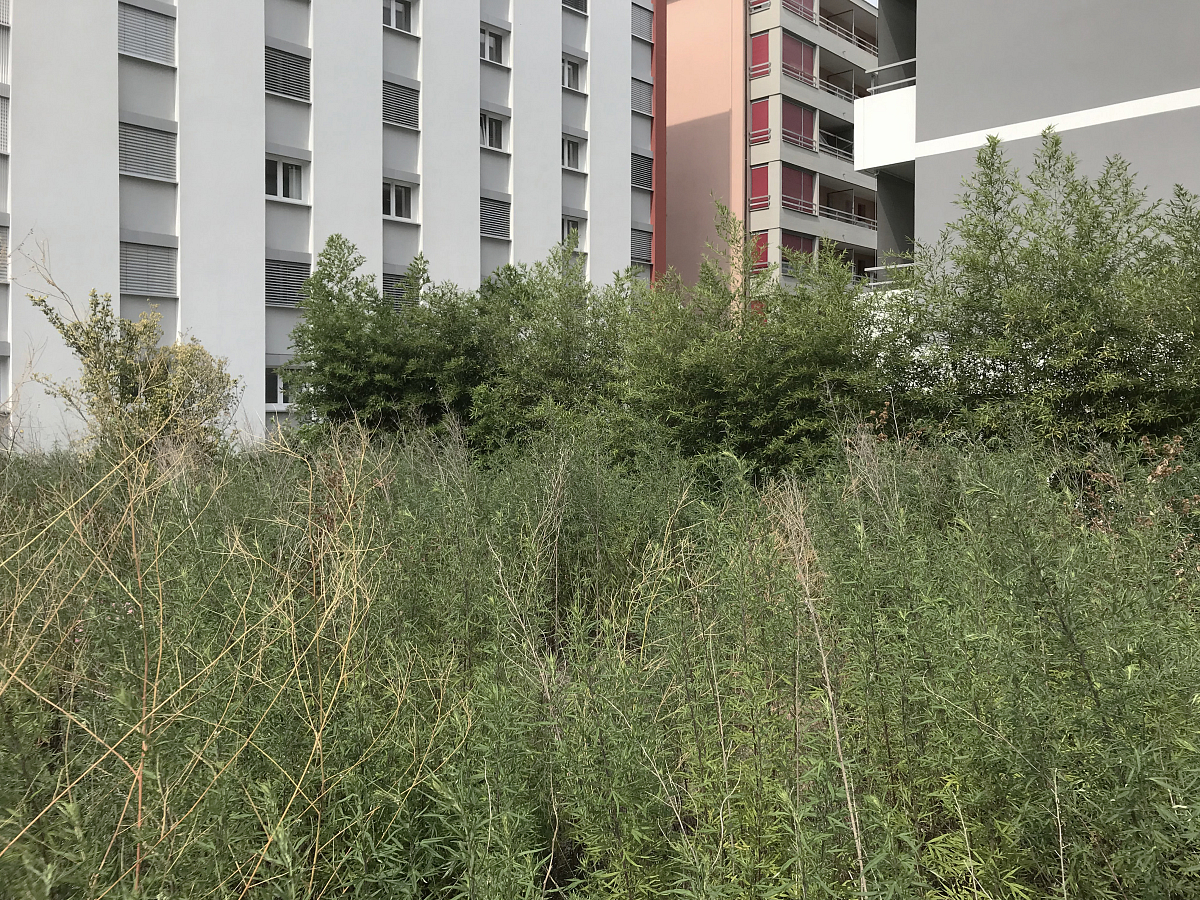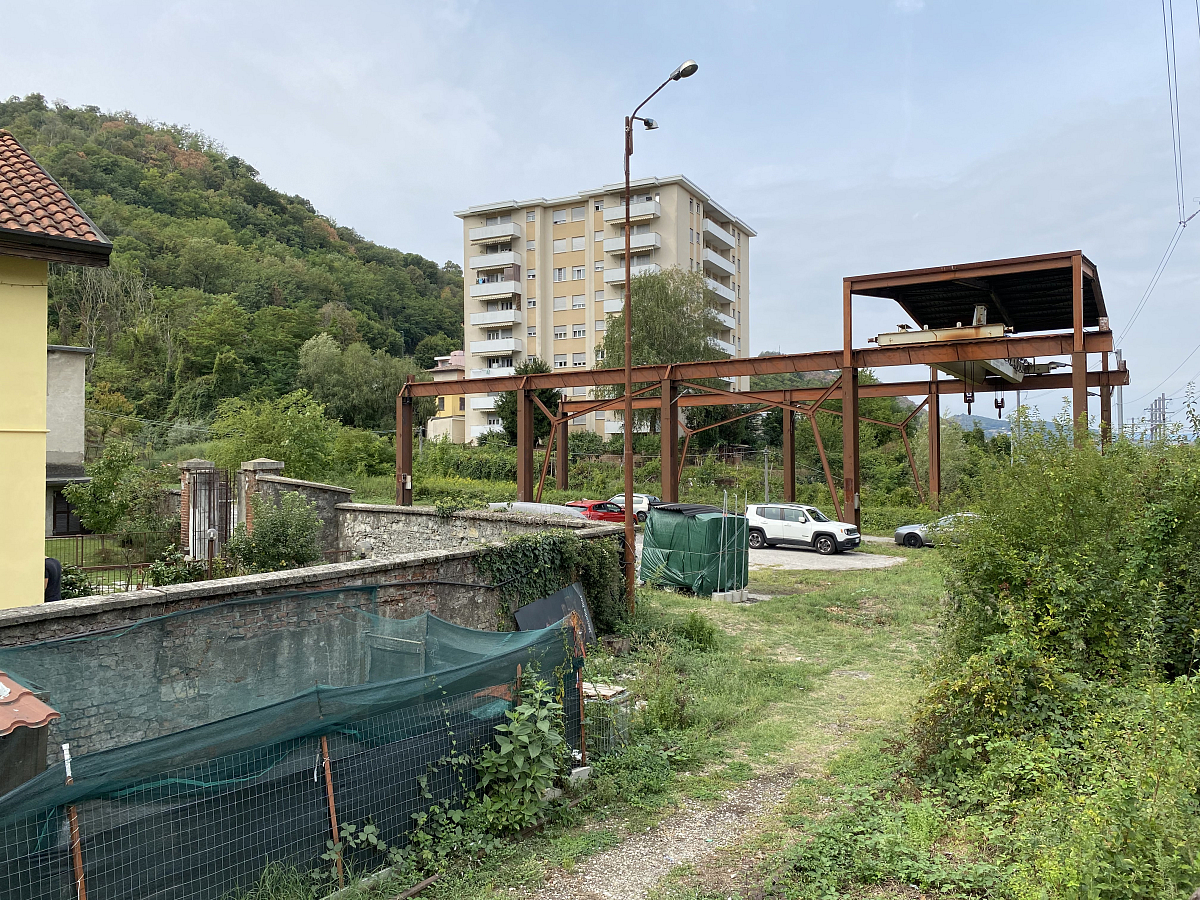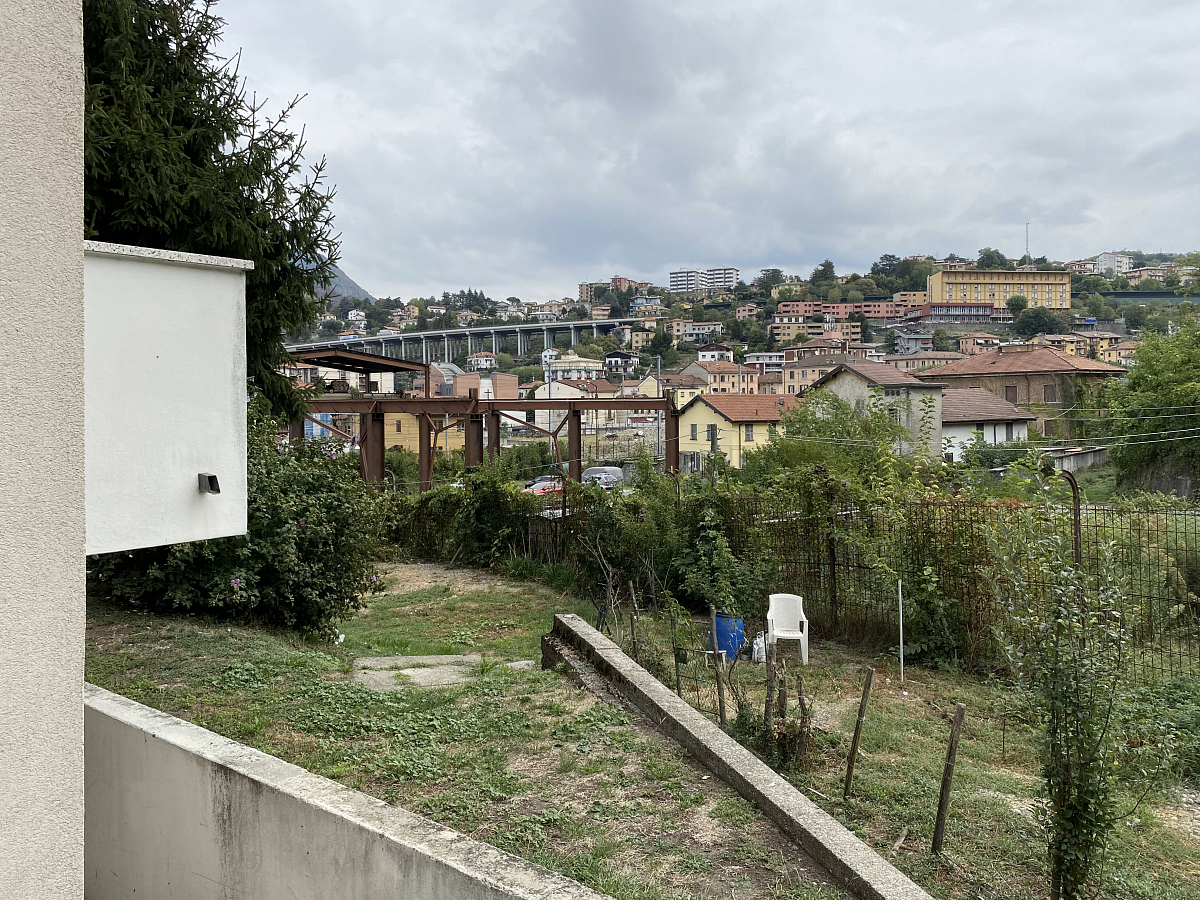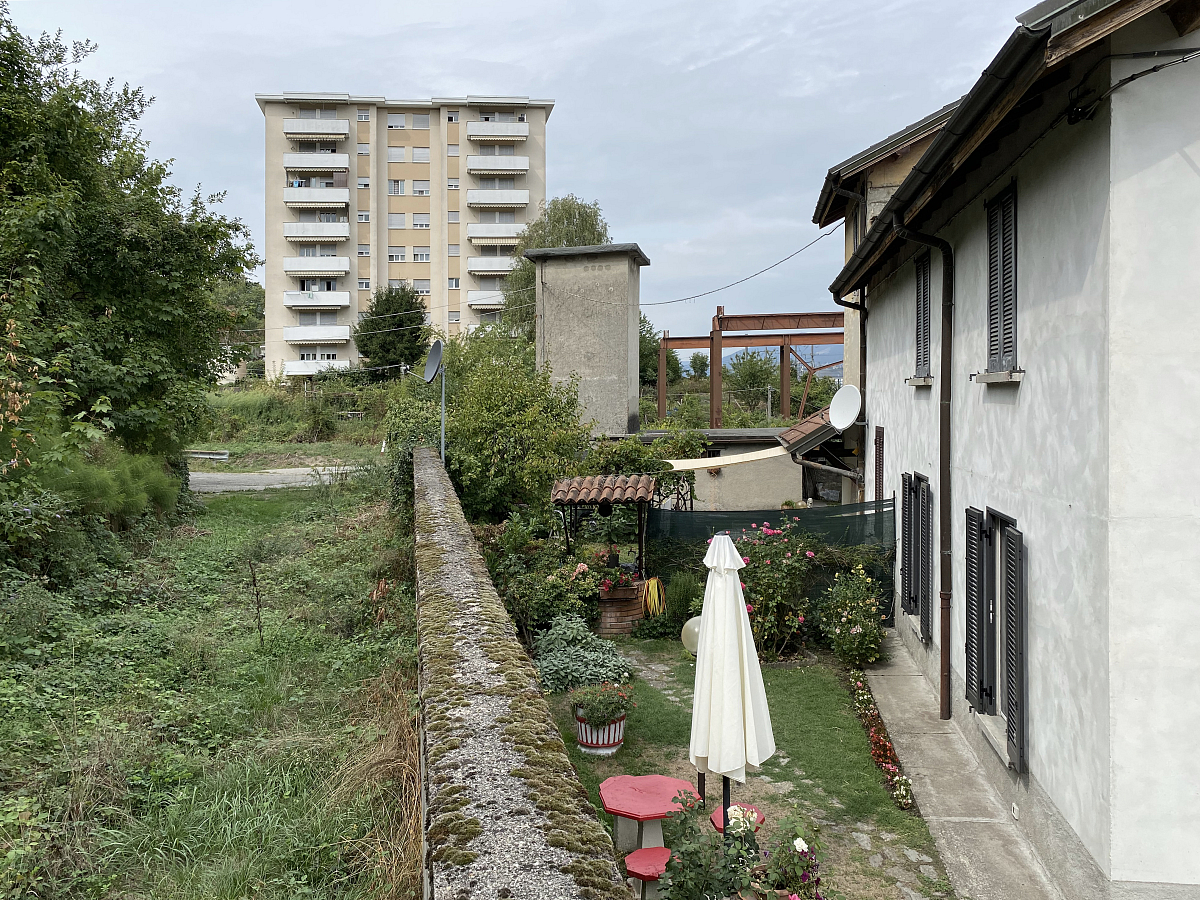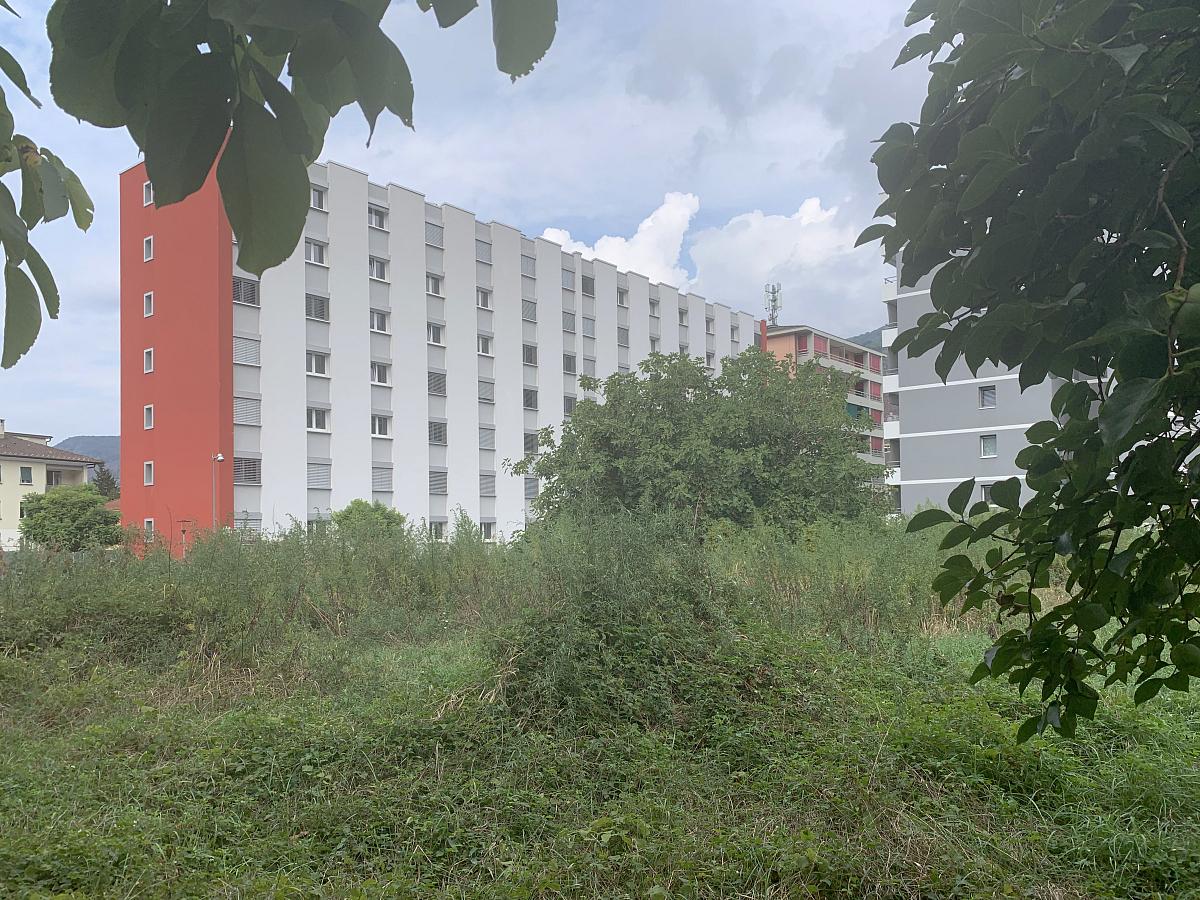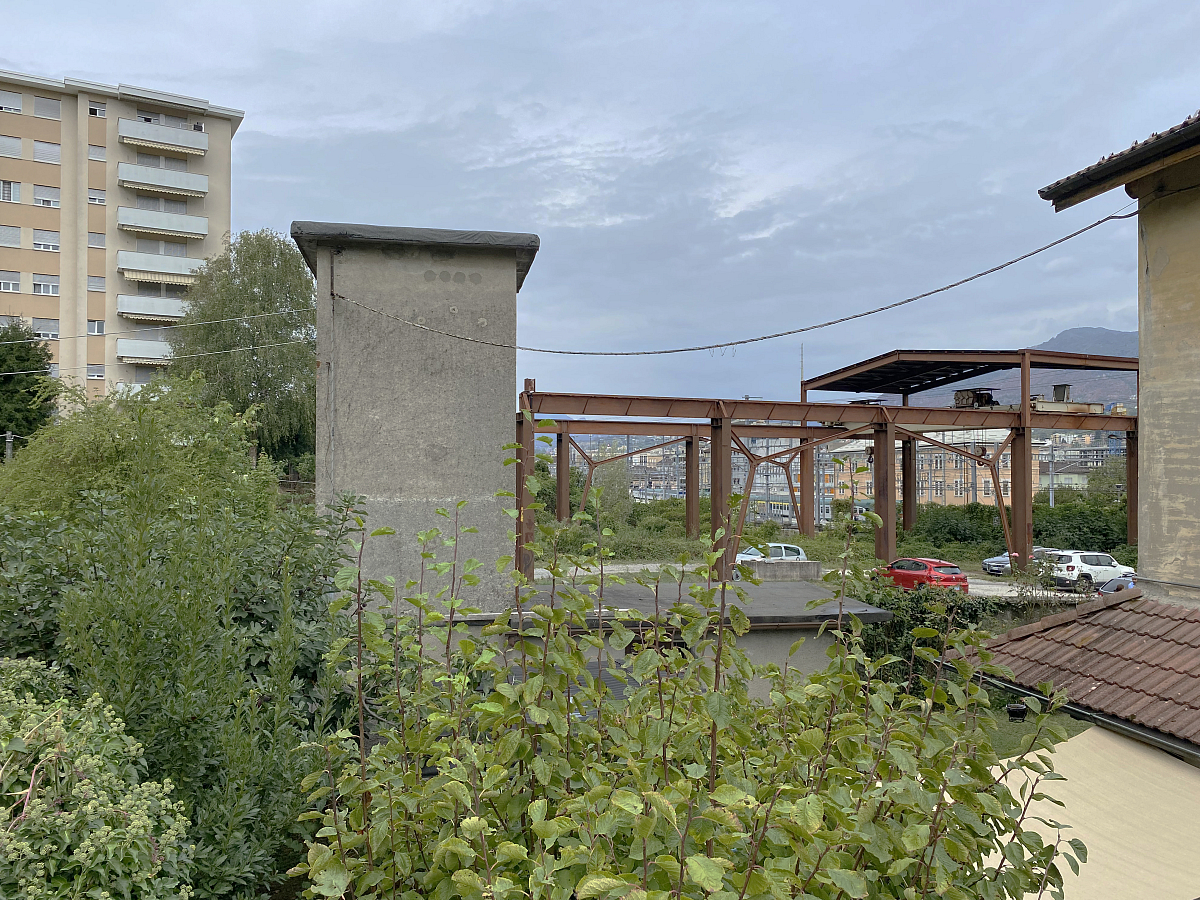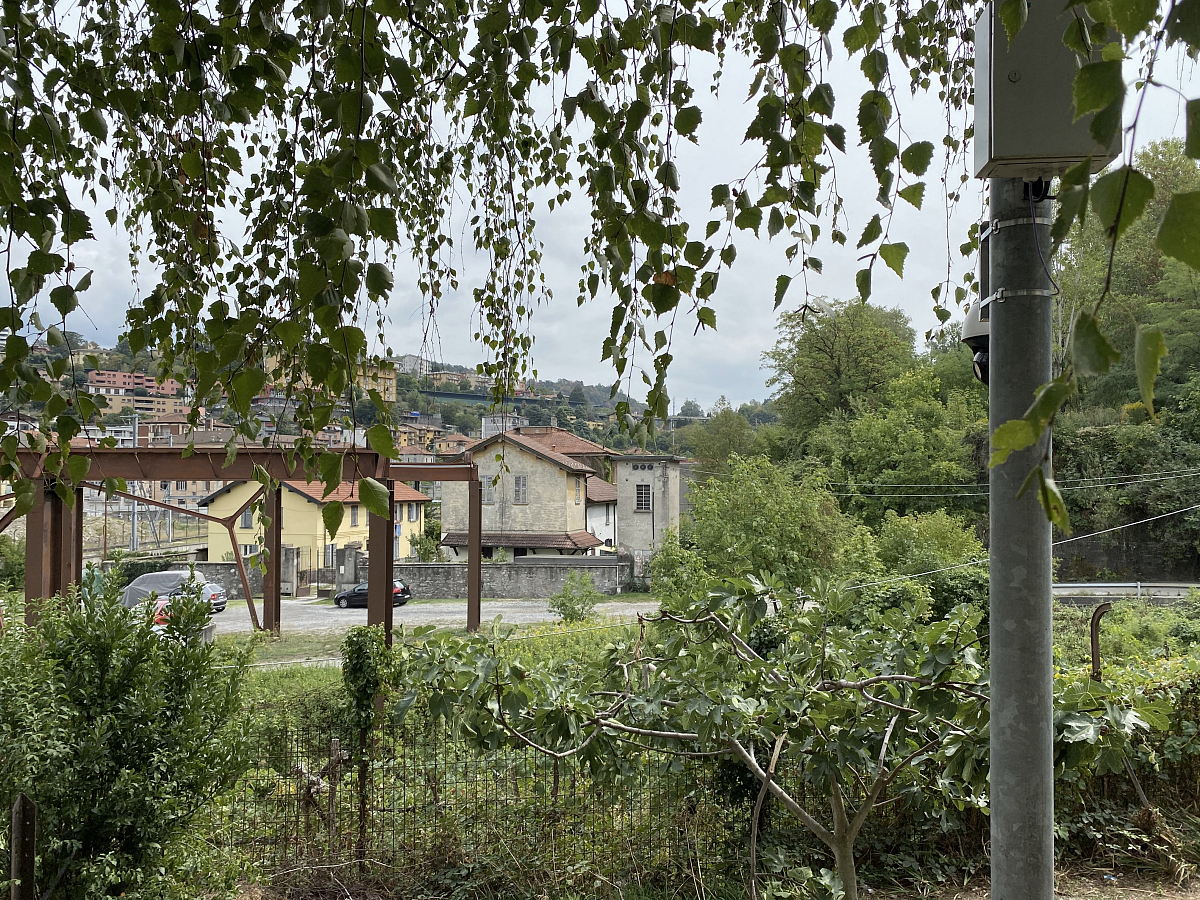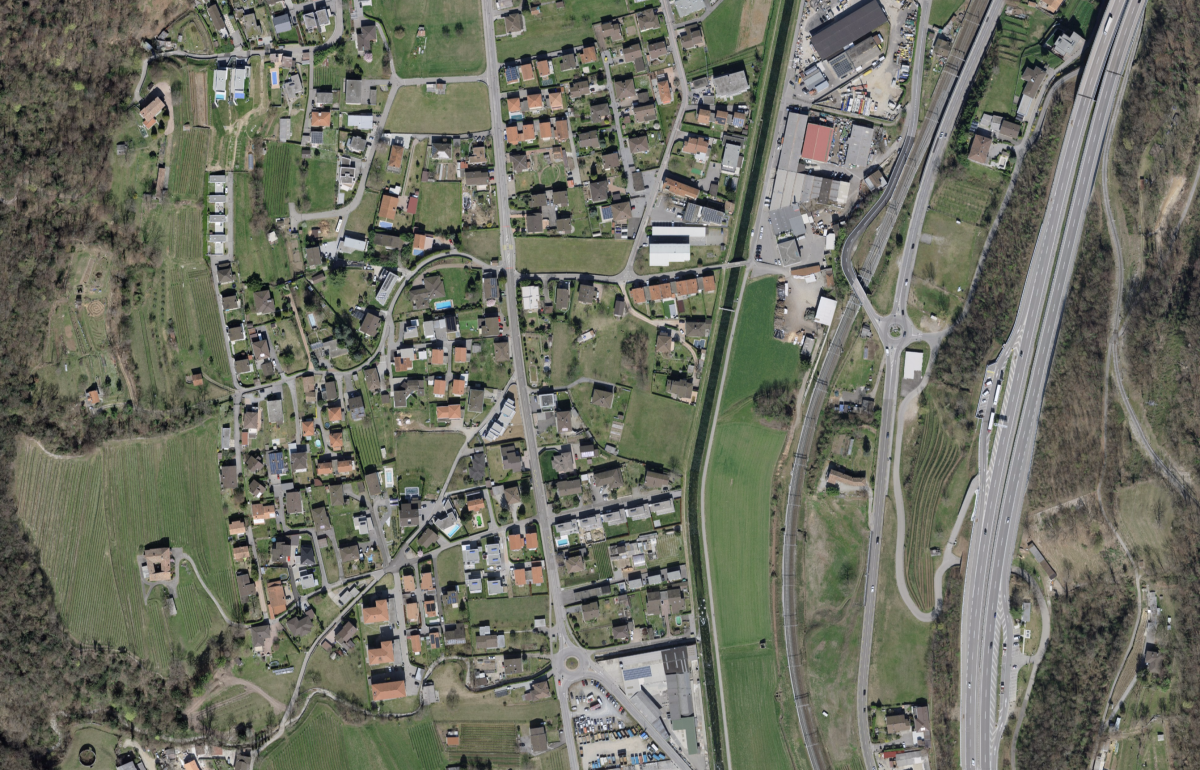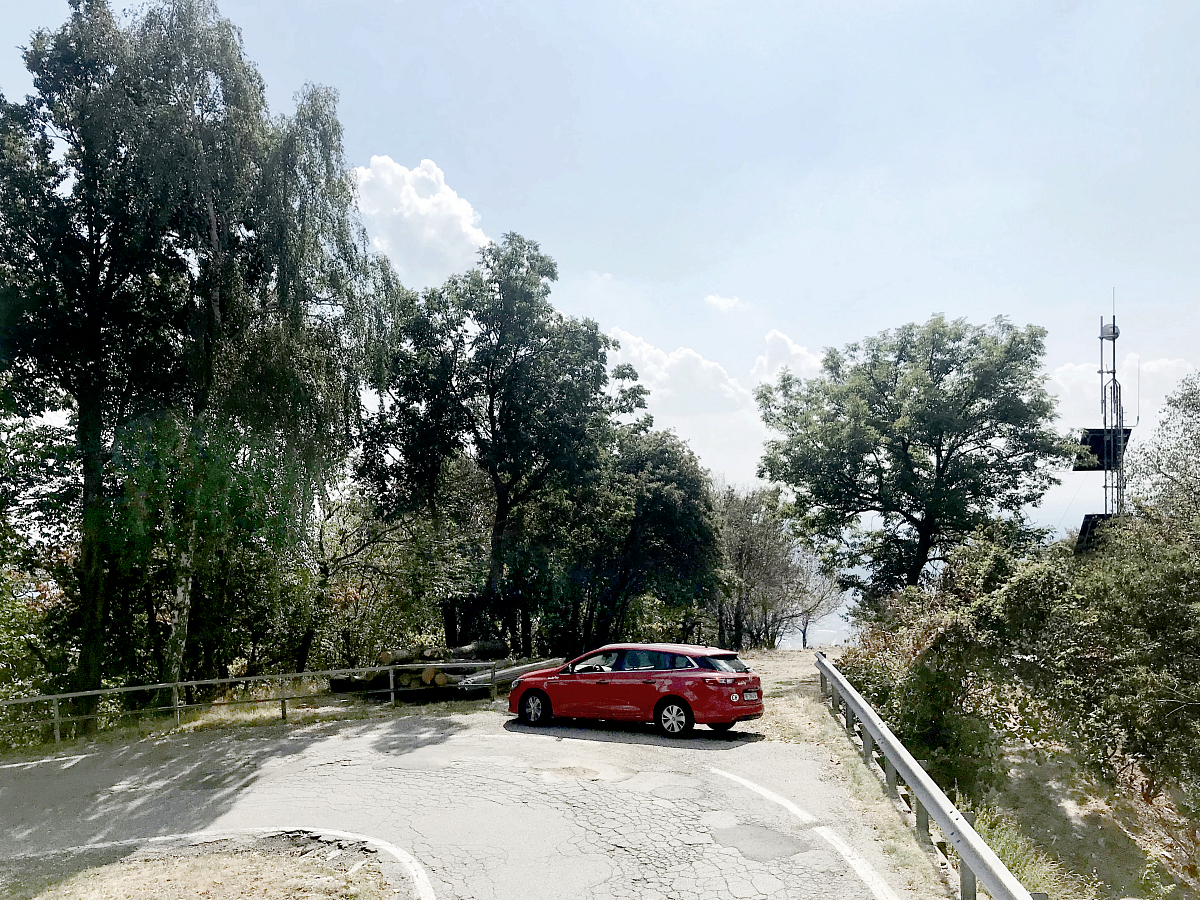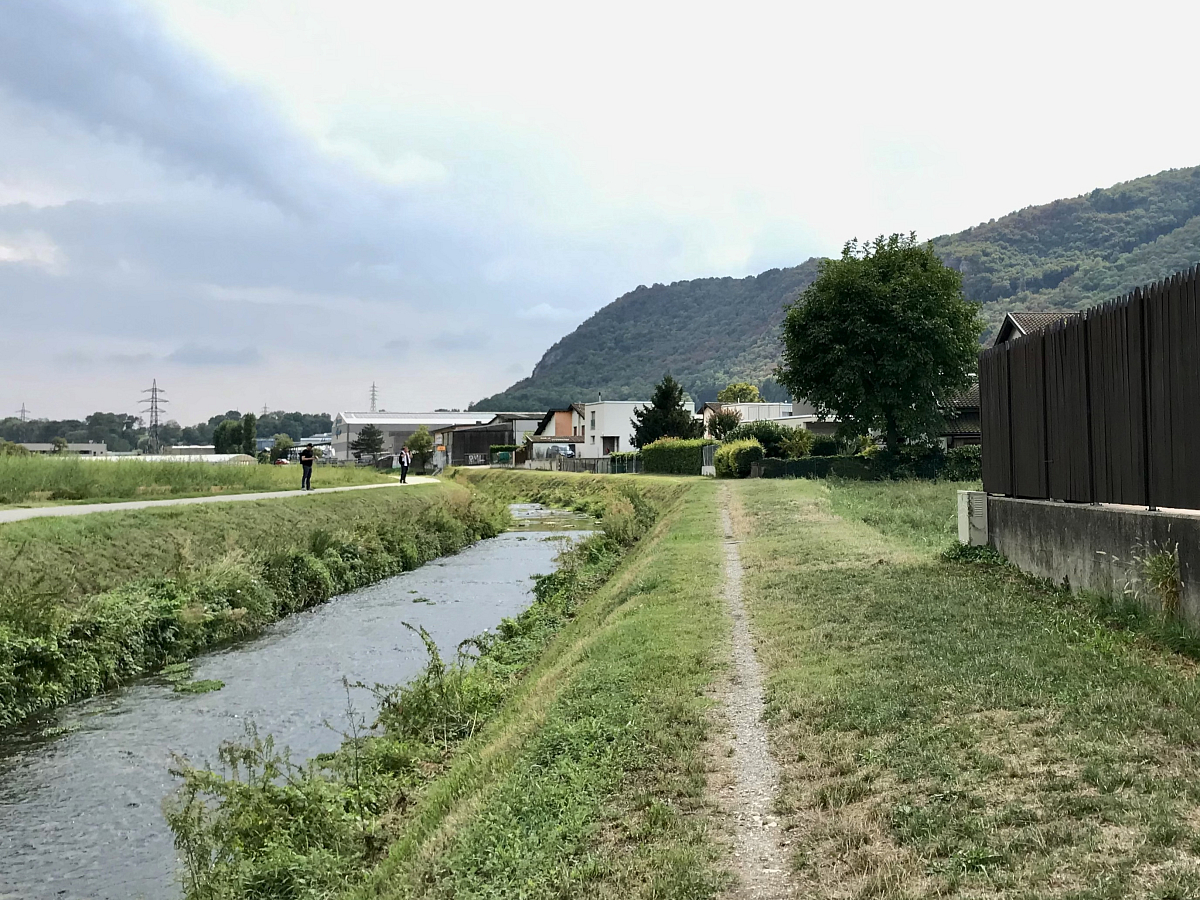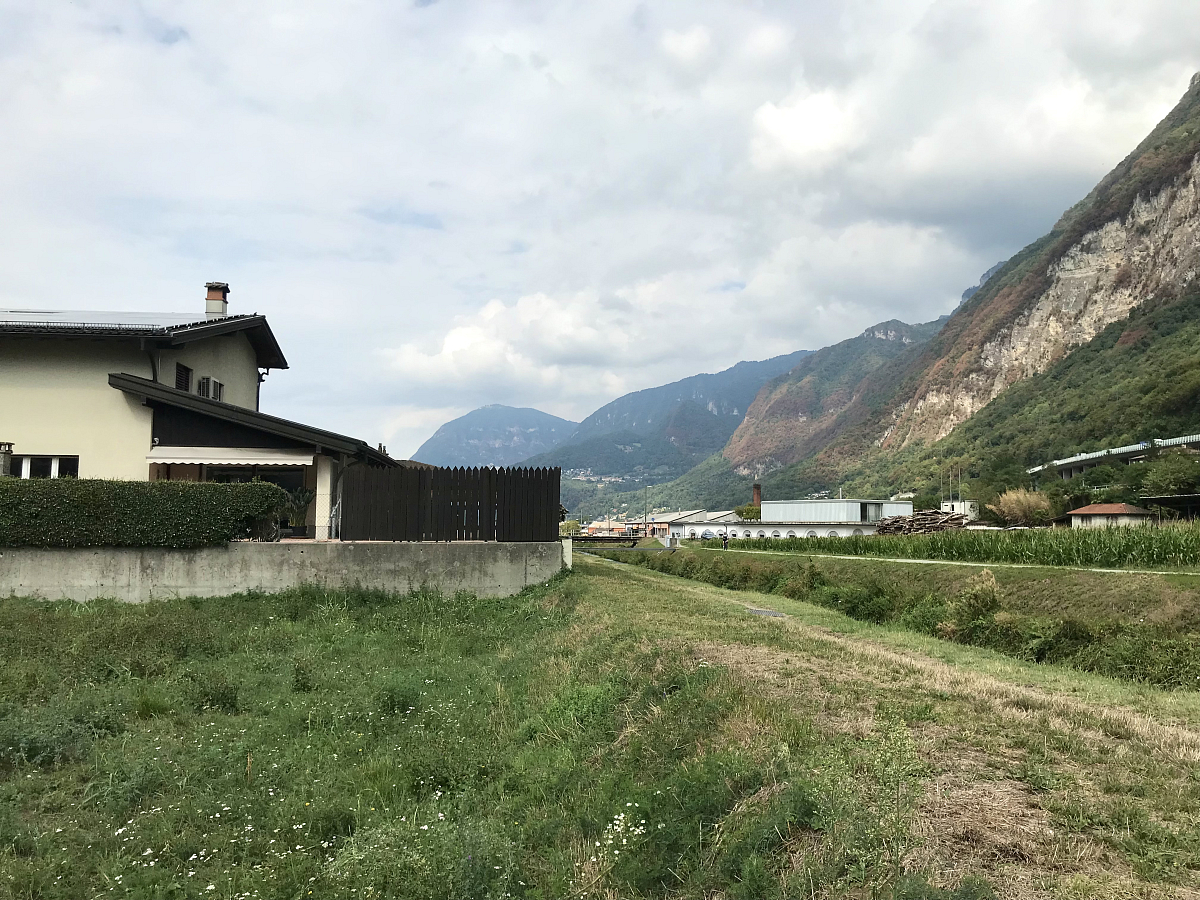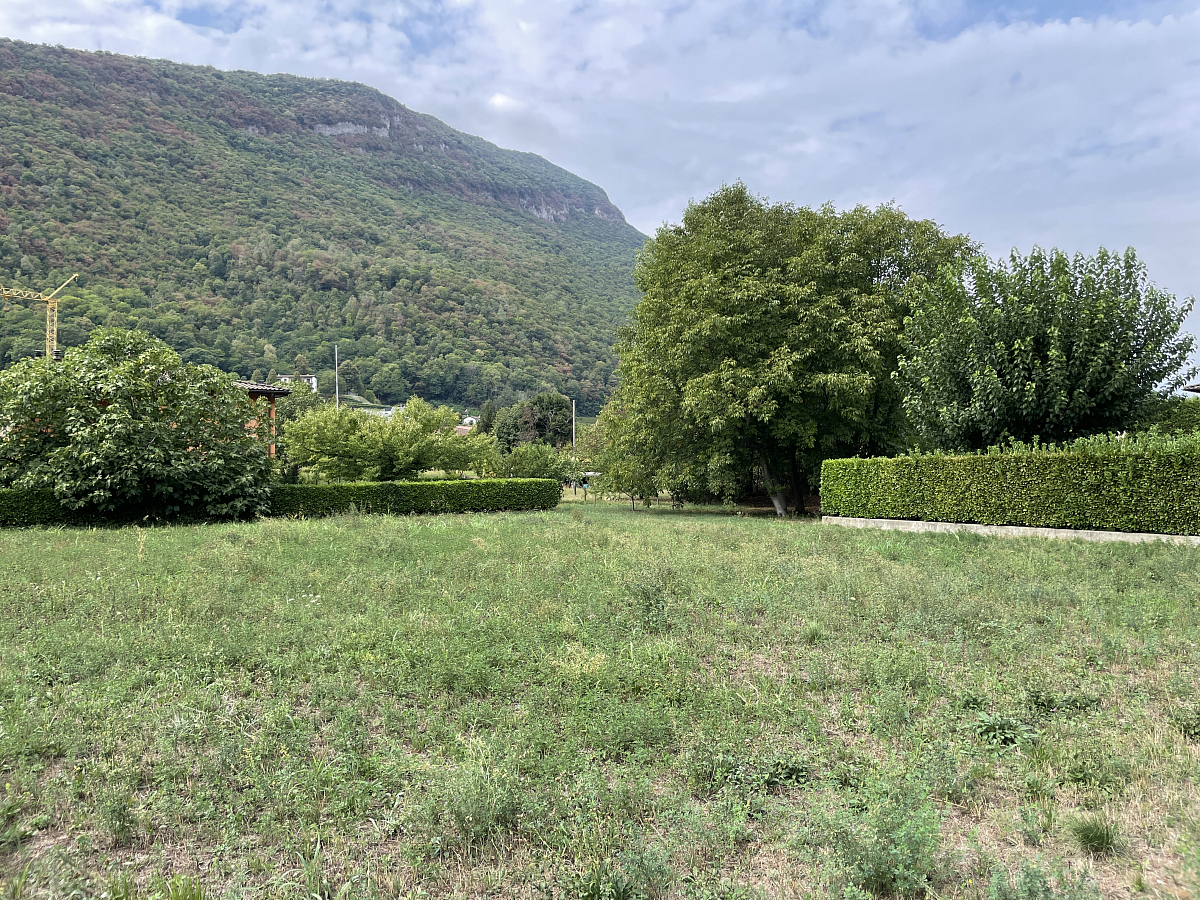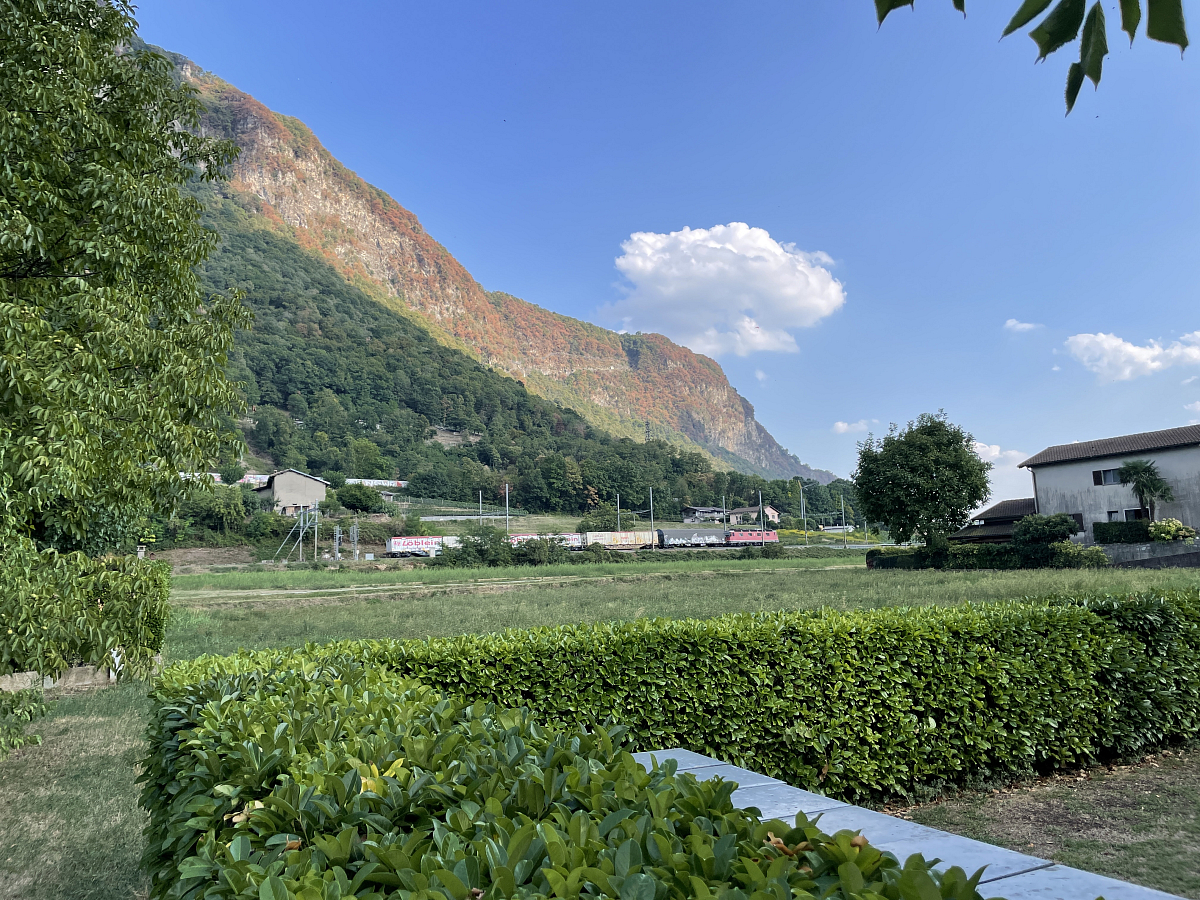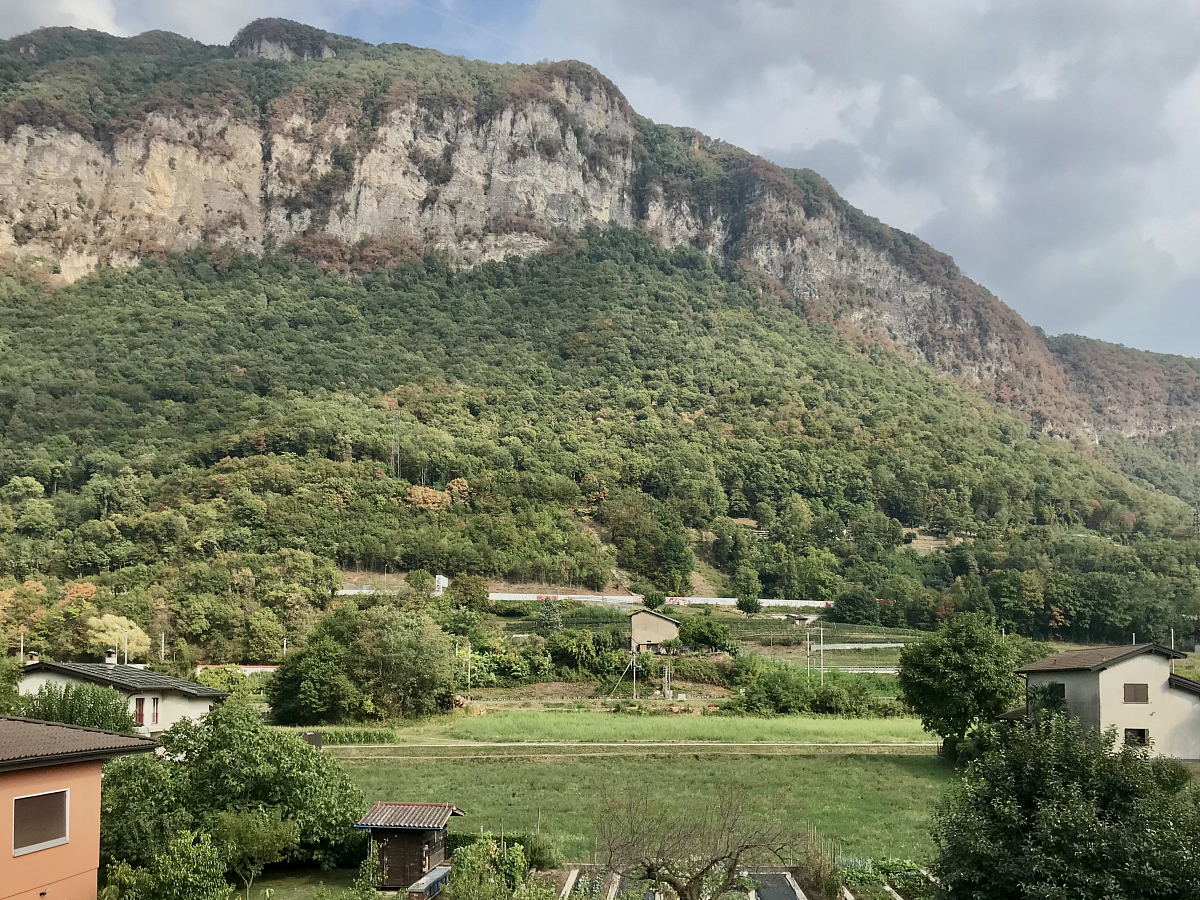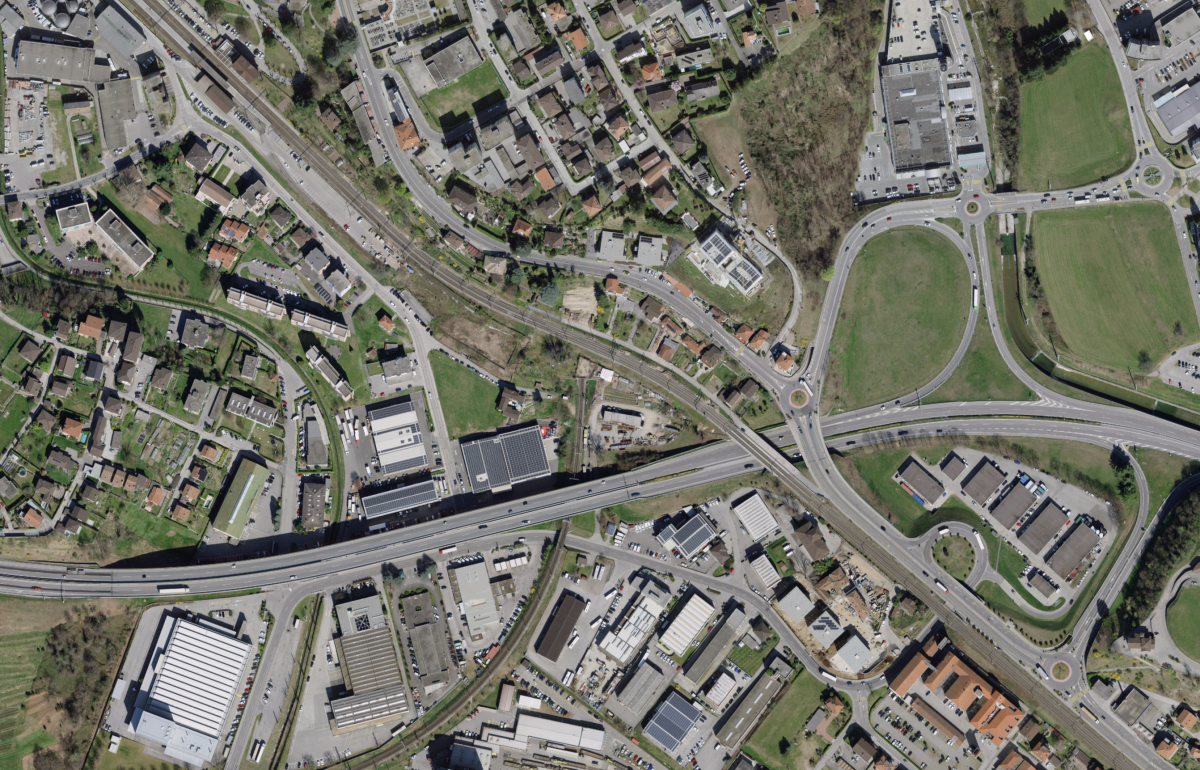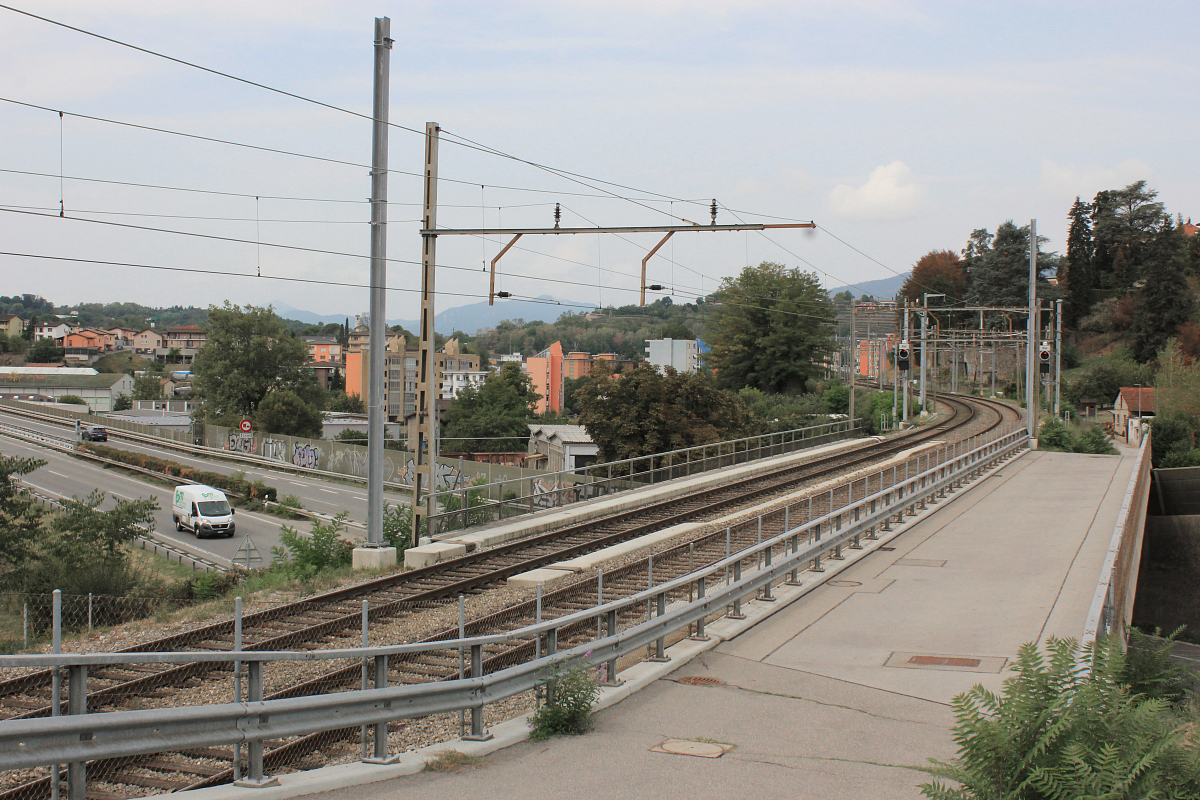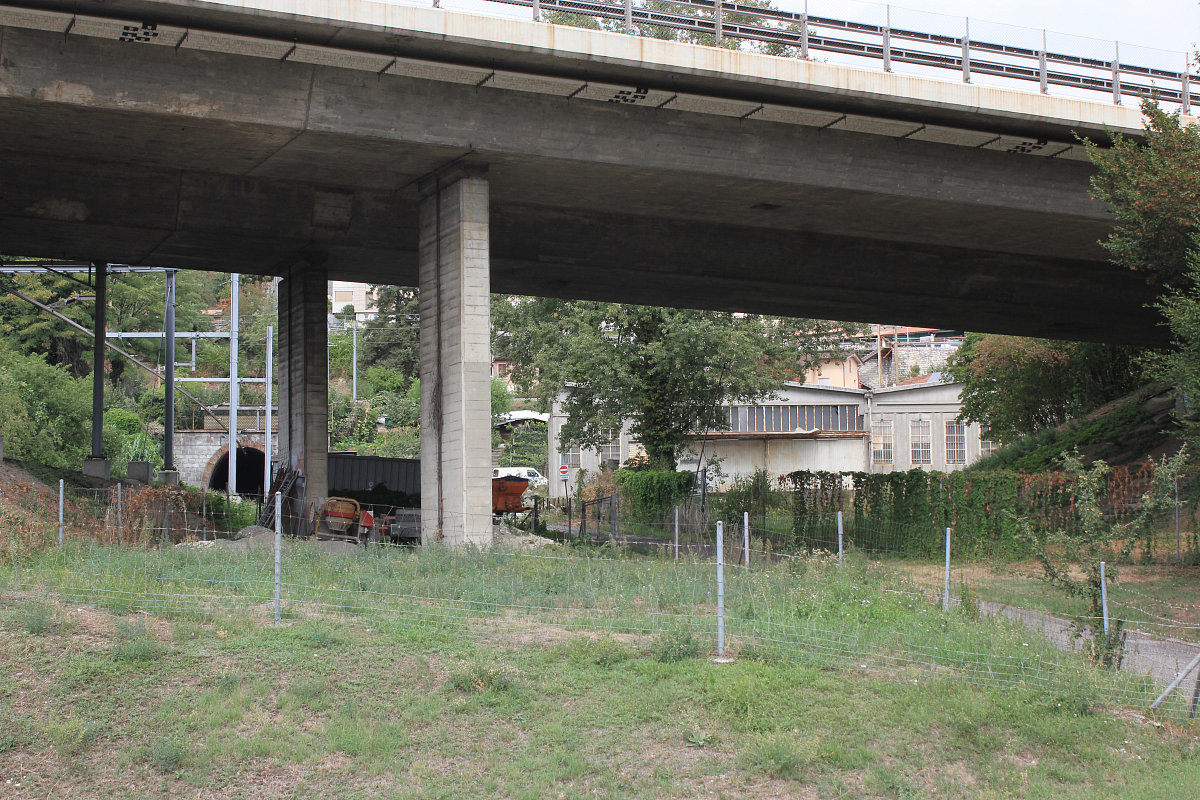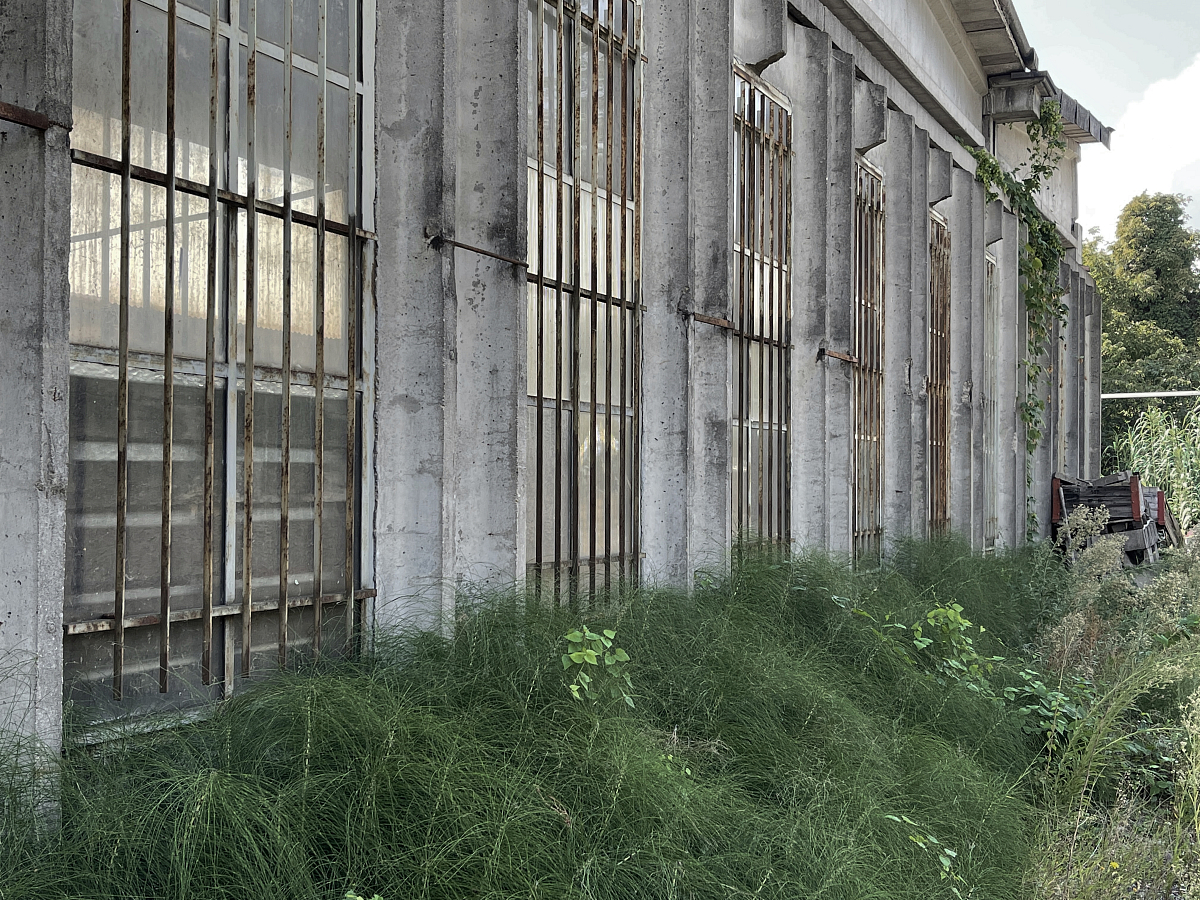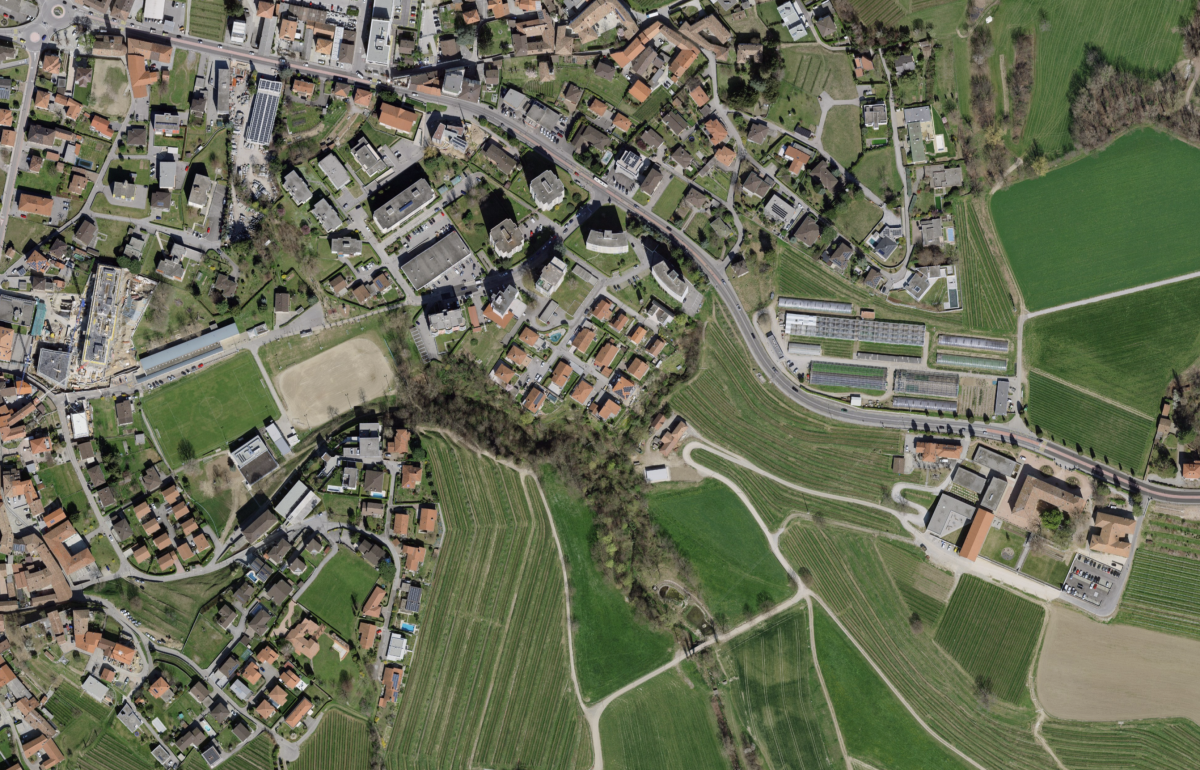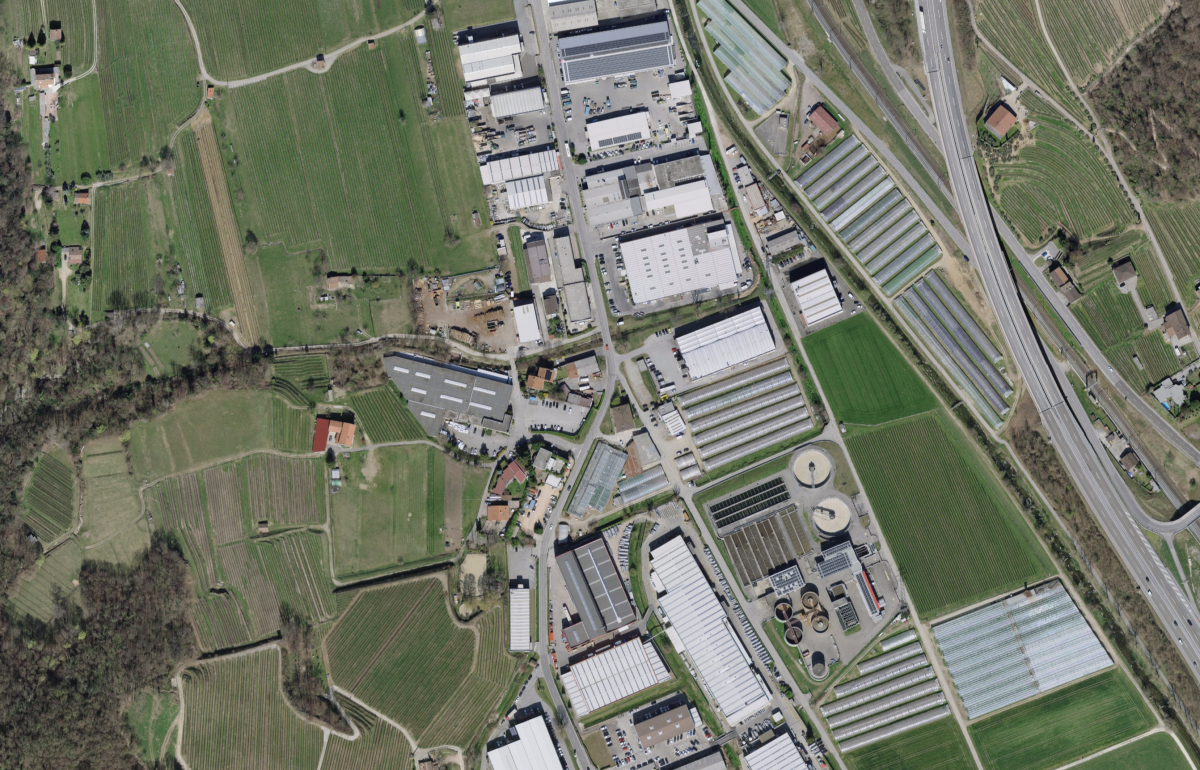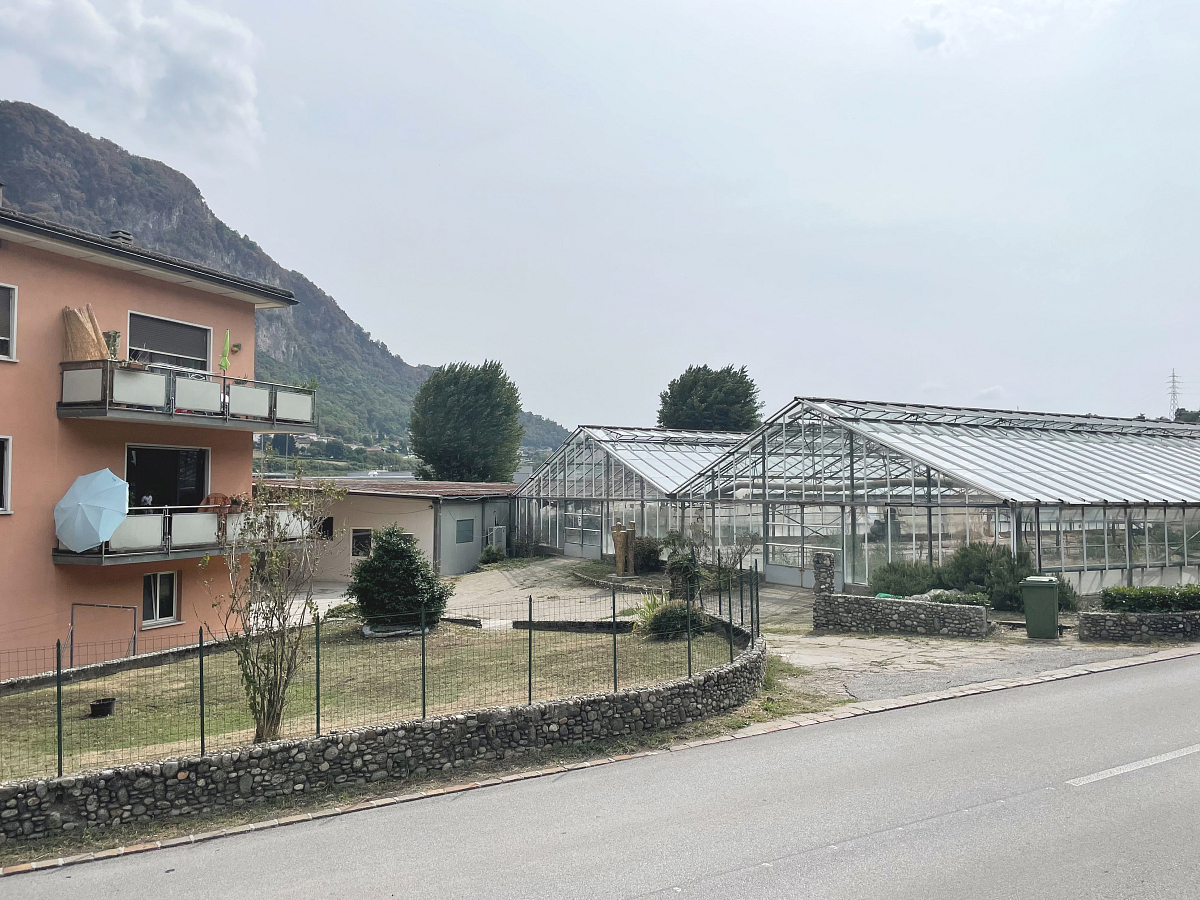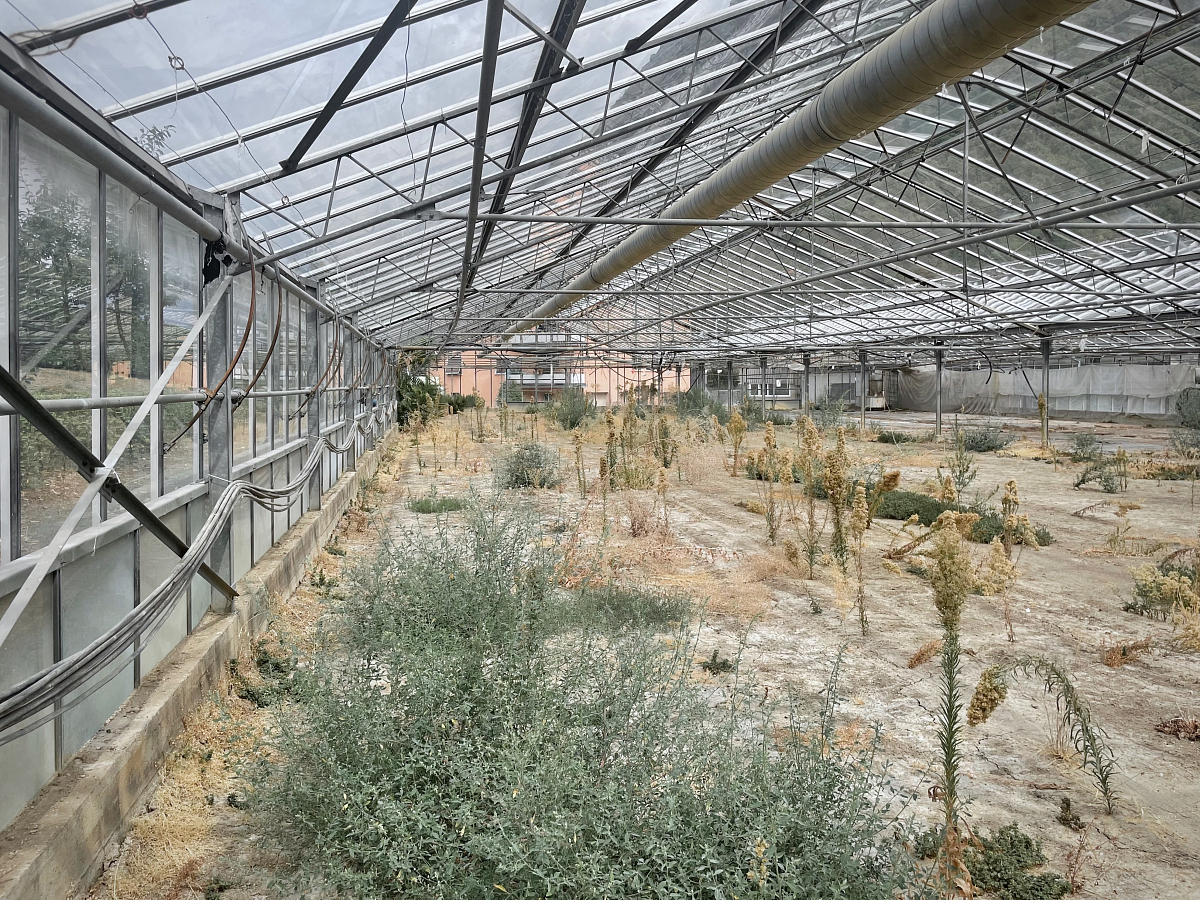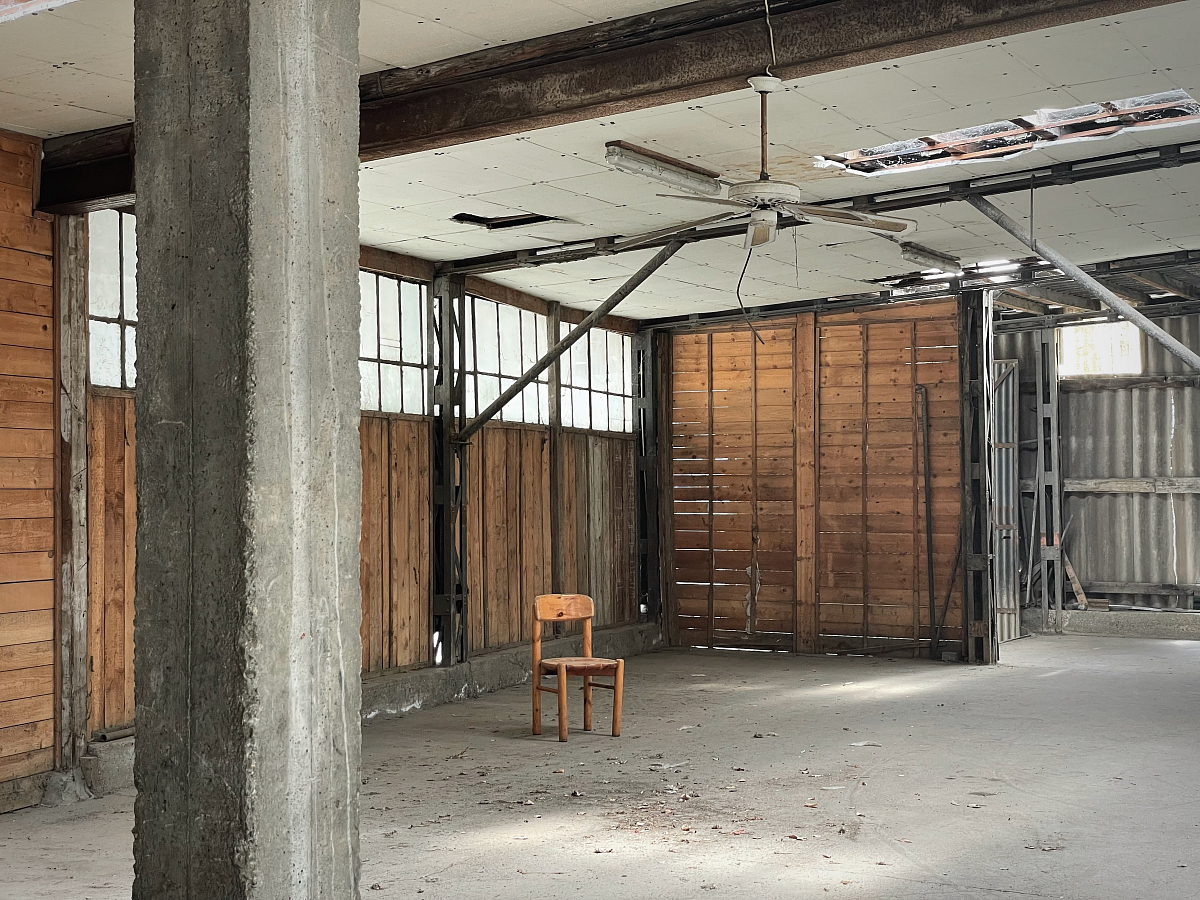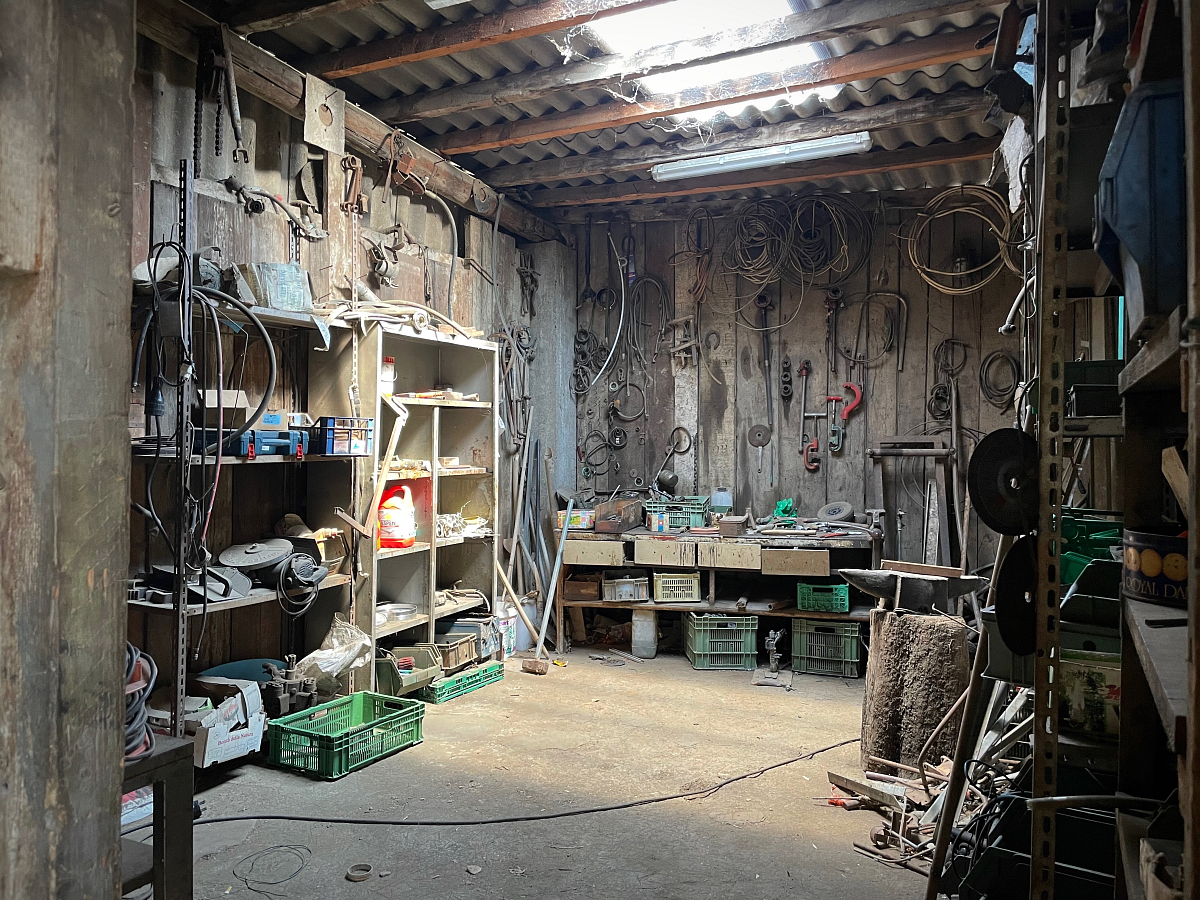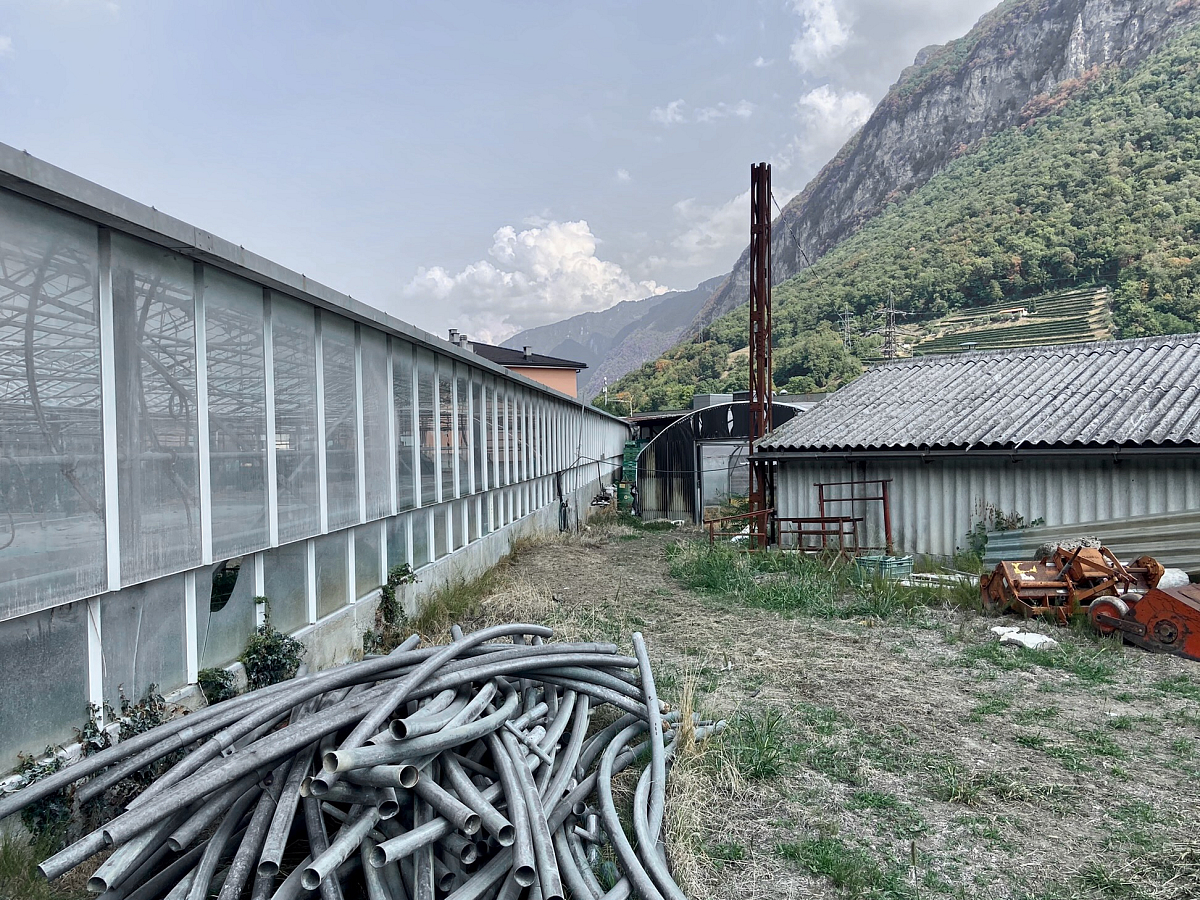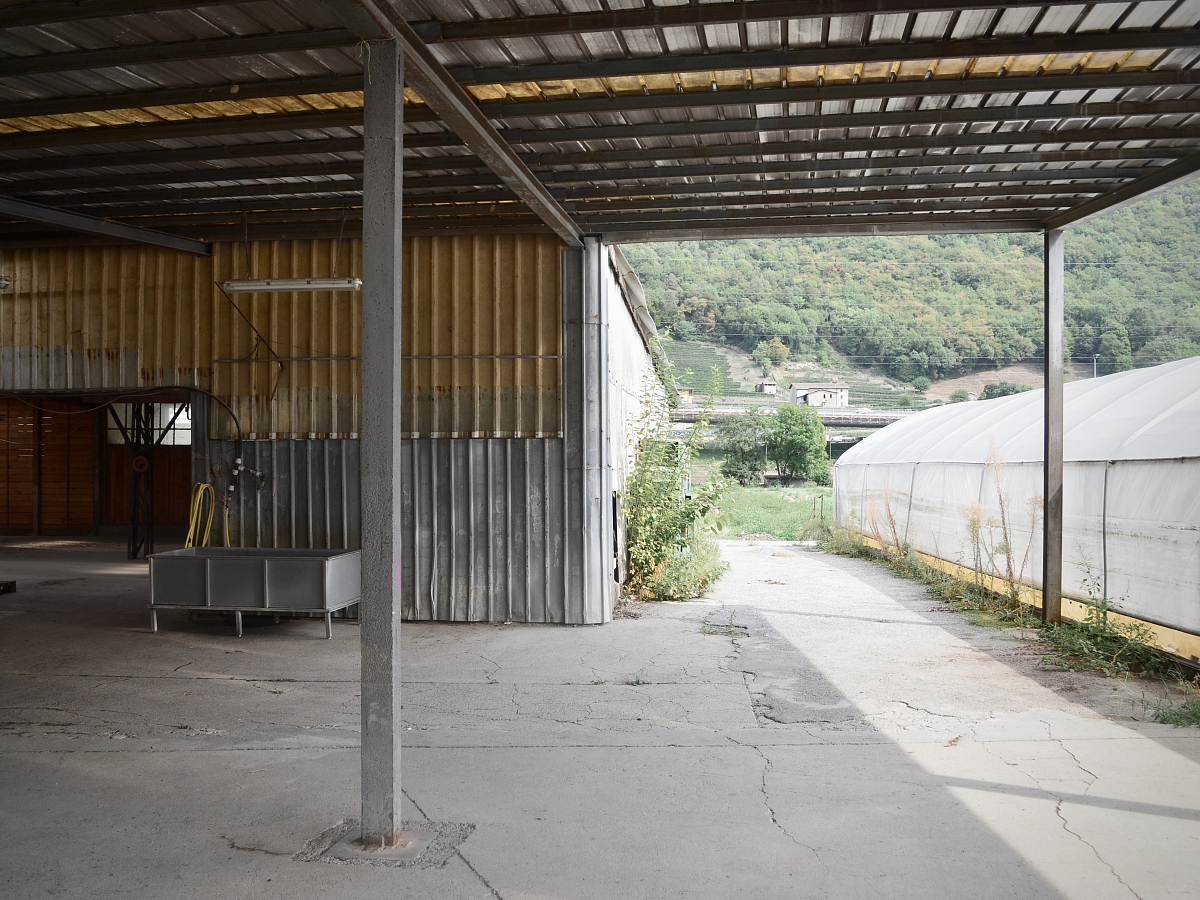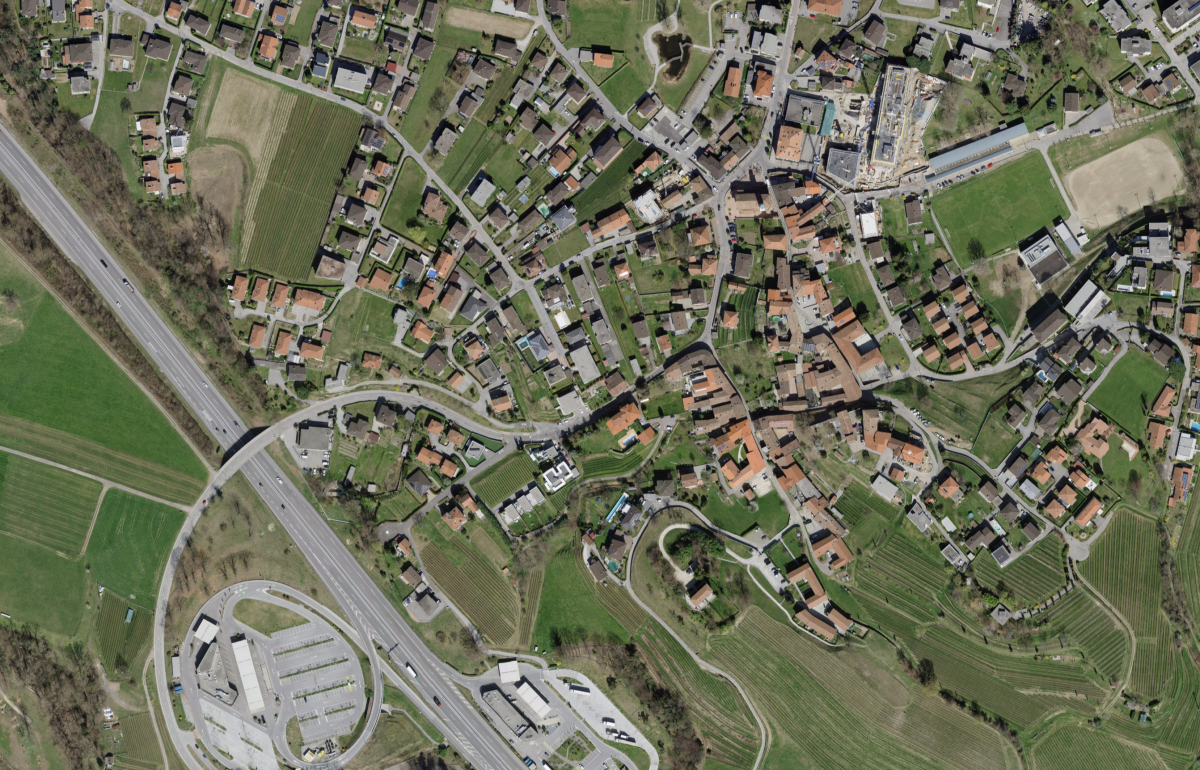Mendrisio Atlas
The SwissSummerSchool is organized by the Swiss Association of Schools of Architecture and represents a shared platform for discussion and research. The third edition of the SwissSummerSchool will be held in Mendrisio and aims to realize a pictoral Atlas of the contemporary territory of Mendrisiotto: an area of lakes, beautiful landscapes and villages but also urban sprawl, large scale infrastructures, logistic centers and industry. This territory will be explored, researched and documented to reveal its hidden secrets and resources. On extensive walks through the landscape, 7 groups will each select a site, create a photographic essay and finally produce a short video about its characteristics and potentials. The students will discuss and edit the results of the photographic and cinematic „field work“ collectively. Their work will be moderated and accompanied by teachers representing the participating schools – and international experts from the fields of strollology, geography, photography, perception and story-telling. The principal language of exchange will be English.
04–10 September 2022
Docente
Marco Bakker, Marnie Amato, Adrien Grometto, EPFL Lausanne
Luca Conti & Marta Monti, SUPSI Mendrisio
Emma Fuller, HEPIA Genève
Matthew Howell, HSLU Luzern
Tim Kammasch, BFH Burgdorf/Biel
Manuel Montenegro, ETH Zurich
Muck Petzet, USI-ARC Mendrisio
Daniel A. Walser, FHGR Chur
Esperti
Erica Overmeer
Erica Overmeer (Amsterdam, NL) is an artist and photographer living and working between Amsterdam, Berlin, and Mexico City. Her work explores social spatial processes through photographic images and architecture with a close relation to a specific context and location.
Claudio Ferrata
Claudio Ferrata is a member of the Steering Committee of GEA-association of geographers, of which he was one of the founders. His research and his activities revolve around the themes of the landscape and the culture of the territory, specialized in the area of the Canton Ticino.
Anna MacIver-Ek, Axel Chevroulet
Anna MacIver-Ek and Axel Chevroulet met while studying in Copenhagen. Together, they explore the field of architecture. Through their projects, they strive for precision, as a tool to achieve an architecture sensitive to its context and generous to its users. In their search for alternative forms of practice, they co-founded the collective la–clique. Continual investigation within the profession leads them to work using different scales and mediums, from films, furniture making, to teaching.
Boris Sieverts
Boris Sieverts was born in 1969 in Berlin, studied art in Düsseldorf and then worked for several years as a pastor and in architecture studios in Cologne and Bonn. Since 1997, with his Büro für Städtereisen, he has been guiding locals and tourists through those gray areas of our metropolitan areas that may be their own territory, but in reality are often as foreign as they are distant continents. In doing so, he uses sophisticated spatial sequences to create landscape connections for environments otherwise considered extremely disparate and develops visions and further interpretations of the landscape and settlement structures that have been sought.
Boris guided us on extensive walks through the Mendrisiotto landscape to explore hidden secrets and resources of this territory.
Galleria
Progetti
Morena & Laveggio
Two Mendrisio rivers, Morena and Laveggio, anchor the Mendrisiotto landscape. Holding everything together through space and time, they assure the continuous flow along the valley floor. The medieval Chiesa di San Martino, on the right bank of the Morena, gathers people with its sheltering walls, providing shadow in hot summer days and coming alive in the Fiera di San Martino. The potential of the place can be felt in the surrounding context, namely the tree farm that stands as a protective enclosure. On the right bank of the Laveggio, the historic Società di tiro la Mendrisiense also acts as a communal space. Over time, both spaces have tran- scended their original function, becoming social landmarks for the Mendrisiotti. Looking across at one another, the two spaces come together as the rivers merge and sounds of nature overpower the cacophony of the omnipresent infrastructure that traverses Mendrisio.
Emma-Julia Fuller, Manuel Montenegro, Bogdan Stoicescu, Sanziana Maximeasa
Domesticity Mobility Boundary
Presented are two sites which sit adjacent the border between Chiasso, (Switzer- land) and Ponte Chiasso in Como, (Italy). The border is marked by fences which are traversing both though urban and rural areas. The fences create urban pockets of voids; land where a future development can be imagined.
We report the conditions of empty pockets in Switzerland and in Italy. The Swiss side profits from a massive building boom, where the Italian side has, underdevel- oped areas, of vacant houses and ruins. The fast-developing Swiss side hints to a new development whereas in the Italian side the economic situation is more diffi- cult, and one does not know what will happen in the future.
We focus on the fence, the separation of the two counties, and the different “smells” one finds in each country. But the separation is less clear at its edges in the forest. There you can find easily holes in the fence, partly to maintain the bor- der infrastructure, party to pass from one county to the other without passing by at the official custom.
Daniel A. Walser, Coco Tang, Mentor Voyatzakis
Fil Rouge
At its eastern extreme, line 01 transects the flanking foot hills of Monte Generoso above the intensively developed transit area between Capolago and Mendrisio. The highest point on the line is a small peak at about 750 meters above the valley floor. The peak, with a small but visible antenna, is accessible from the back side by means of the road leading to the Bellavista station of the cog railway.
The group drove to the peak to grasp a view of the area from the mountain and found a small clearing of dried trees and a survey station near the antenna. Through the trees, the extension of line 01 is only partially visible in the valley below. Re- turning to the station of Capolago, the group walked a narrow footpath along the Laveggio river in the direction of Mendrisio and discovered a large open lot that, interestingly, was one of the few of its size that had been spared residential de- velopment. It is bordered by domestic dwellings with their manicured hedges on three sides and, on the open eastern side, oriented to the peak of the mountain with its faintly visible antenna. Moving through the open lot, the peak is suddenly positioned in the centre of the view, revealing a strong connection between this open ground and the mountain. This feeling was emphasized, because the indus- trial sites that are nearby are invisible from the place.
Would it be possible to manifest this connection between the two points by stretch- ing a single string: a red thread?
It’s relatively easy to imagine the great physical effort of crossing the valley on foot with the thread and especially of climbing the steep slopes to the peak. One would also have to pass over the river and large and important traffic infrastruc- ture including the Gotthard railway, the cantonal road, and the A2 National mo- torway. Could the administrative effort of negotiating with different government institutions, private landowners and various laws and regulations to attach a sim- ple string to the mountain connecting this idyll in the valley be by far the greater effort?
Matthew Howell, Pavla Nesvadbikova, Peer Frowein
Sotto bisio
Mendrisiotto presents itself as a fragmented territory, divided between infrastruc- tures that wind and spread across its surface, open and empty spaces, different functions whose development has been dominated by its proximity to the border, where different scales encounters and pedestrians are often neglected. These in- tersections engender special situations.
The leftover space between the highway and the railways forms a triangle that is enclosed on every sides by infrastructures. On one side, the highway above both encloses and forms a gate to the site. The building that occupies it is made of an assemblage of prefabricated concrete elements resembling and resonating with those used for the infrastructures. The place feels secret and uncanny allowing to be a free territory for dark acts.
Spaces of uncertainty, vague and strange, are often associated with negative con- notations; instead, they are also, as such, open to infinite possibilities, unusual and spontaneous forms of activity and appropriation, linked to a shortened and - at times - inconvenient temporality, in a world dictated by control, order, productiv- ity, profit, rationality. They therefore become surreal to our eyes, can disturb as well as fascinate.
Marco Bakker, Adrien Grometto, Sara Tomasini, Ivan Shatravin
(Un)common ground
The constructed is springing up like mushrooms.
Different sequences collide with each other. A jumbled picture emerges.
The living zones separate neatly. Residences collide with borders.
The vertical buildings rise up into the air, separating themselves from what is hap- pening on the ground level. A fluid passage through the urban jungle is impossible. Obstacle after obstacle falls at our feet. Conflicts arise.
We want to walk through, experience and explore the forest, the vineyards and the public space. Is it a possible future?
Luca Conti, Marta Monti, Vasco Medici, Elena Starke
Ortofrutta Sociale
Between Mendrisio and Riva San Vitale there is a long grey field of industrial pro- duction facilities and waste treatment centres. In this field the vegetable growing business of the Ortofrutta Oberti seemed like an exception, an oasis of growth and nurturing in a surrounding of waste, decay and sterile production centres. Unfortunately the children of the Oberti family did not want to take on the busi- ness of growing vegetables and greens - and selling them to the local community. So when the old generation had to stop working, the oasis died, part of the land was sold, the greenhouses dismantled. Only the central part of the compound re- mained - awaiting further development.
Like after the blast of an neutron bomb, all life disappeared, but everything else was left - the tools, the materials, slowly deteriorating, like in a waiting status... 2022 a group of students of the SwissSummerSchool discovered the site - entering its open doors - and promising spaces. This discovery led to a renewal of the oasis: the owners agreed on a lease of their production site to a group of architecture students from Mendrisio. The students just moved in - with their model building equipment - setting up a workshop - and creating simple cabins inside the green- houses. Life started to grow again in the desert. With the help of the old owners, the students learned to seed and to grow, to water and to harvest - also to create a business - selling their ecologically raised vegetables and greens again to the local market. A symbioses between the students - happy to have affordable space to live and experiment - and the old owners - seeing their life’s work continued - and becoming part of a sharing community: the Ortofrutta Sociale.
With the involvement of neighbouring companies - like the Puricelli Recycling business - and the wastewater treatment center the Ortofrutta Sociale became a cyclifier of waste and material flows for the whole area. A place to experiment on the reuse of recycling materials for architecture - growing building materials together with the vegetables.
Muck Petzet, Josef Lucas, Alexander Pollard
Disruptive Conjunctions
Places are drawn by decisions. Decisions that are made over the centuries. Deci- sions about the way of living together or not living together, the nature and func- tion of things. The decision itself is subjectively defined by the funders. Funders acting from different motives. The motives are of different nature and lead to the fact that the results of the different decisions collide. These results do not always complement each other and this is where the disruptive conjuncture arises. The disruptive conjunction manifests itself as scars. Scars that form the character of a place and make it approachable and tangible.
In our search for disruptive conjunctions we followed the main street of Coldrerio. From the center of the city down to the highway intersection. We found walls that tried to connect old and new, an artificial garden that tried to adapt to its environ- ment, garbage cans that tried not to stand out too much and a highway that by connecting this place to others, puts Coldrerio in a transnational global network in a large scale but at the same time disrupt its territory in the small scale.
Marnie Amato, Laura Dittmar, Eleonora Suà, Tim Kammasch, Sophie Waschuth

